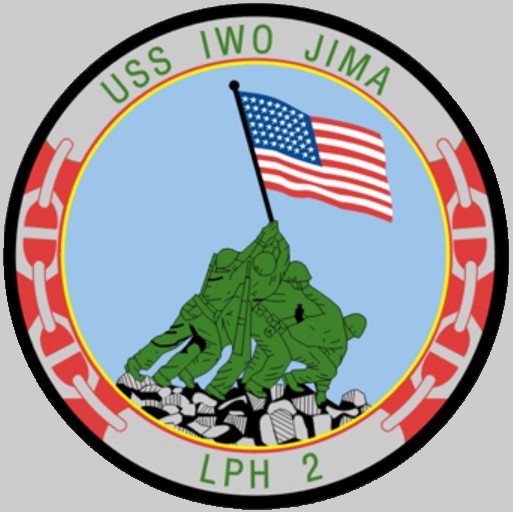 |
||
|
HOME
|
US Navy -
ships
|
US Navy - air
units
|
USMC - air
units
|
International
Navies
|
Weapon Systems
|
Special Reports |
||
|
US Navy - Amphibious Assault Ship LPH 2 USS Iwo Jima |
||
|
||
| 11/21 | ||
|
Type,
class: Amphibious Assault Ship, Landing Platform
Helicopter - LPH / Iwo Jima class Builder: Puget Sound Naval Shipyard, Bremerton, Washington, USA STATUS: Awarded: January 30, 1958 Laid down: April 2, 1959 Launched: September 17, 1960 Commissioned: August 26, 1961 Decommissioned: July 14, 1993 Stricken: September 24, 1993 Fate: sold for scrap on December 18, 1995, scrapped Namesake: The Battle of Iwo Jima, February 1945 Ships Motto: ? Technical Data: see: INFO > Iwo Jima class Amphibious Assault Ship - LPH |
||
|
Deployments: August 1963 - April 1964 - WesternPacific Ocean April 1965 - ? 1965 - Pacific Ocean, Vietnam War July 1966 - January 1967 - with HMM-362(C) embarked - Pacific Ocean, Vietnam War March 1970 - April 1970 - Pacific Ocean - recovery of NASA Apollo 13 capsule November 1970 - June 1971 with HMM-165(C) - Pacific Ocean, Vietnam War May - June 1972 - homeport shift - San Diego, California to Norfolk, Virginia July 1972 - January 1973 with 32nd Marine Amphibious Unit (MAU) and HMM-263(C) embarked - Mediterranean Sea October 1973 - May 1974 with 32nd Marine Amphibious Unit (MAU) and HMM-261(C) embarked - Mediterranean Sea February 1975 - August 1975 with 34th Marine Amphibious Unit (MAU) andHMM-264(C) embarked - Atlantic Ocean, Mediterranean Sea June 1976 - December 1976 with 36th Marine Amphibious Unit (MAU) andHMM-263(C) embarked - Mediterranean Sea September 1978 - March 1979 with 36th Marine Amphibious Unit (MAU) andHMM-261(C) embarked - Mediterranean Sea September 1979 - March 1980 with 32nd Marine Amphibious Unit (MAU) andHMM-261(C) embarked - Mediterranean Sea September 1980 - November 1980 with HMH-461(C) embarked - North Atlantic Ocean February 1981 - September 1981 with 36th Marine Amphibious Unit (MAU) and HMM-261(C) embarked - Mediterranean Sea May 1983 - December 1983 with 24th Marine Amphibious Unit (MAU) and HMM-162(C) embarked - Mediterranean Sea, off Lebanon July 1985 - December 1985 with 32nd Marine Amphibious Unit (MAU) and HMM-261(C) embarked - Mediterranean Sea February 1988 - August 1988 with 26th Marine Expeditionary Unit (MEU/SOC) and HMM-365(C) embarked - Mediterranean Sea October 1989 - April 1990 with 24th Marine Expeditionary Unit (MEU/SOC) and HMM-365(C) embarked - Mediterranean Sea 1991 ? Gulf War - no info May 1992 - November 1992 with 26th Marine Expeditionary Unit (MEU/SOC) and HMM-365(C) embarked - Mediterranean Sea, Adriatic Sea |
||
| images | ||
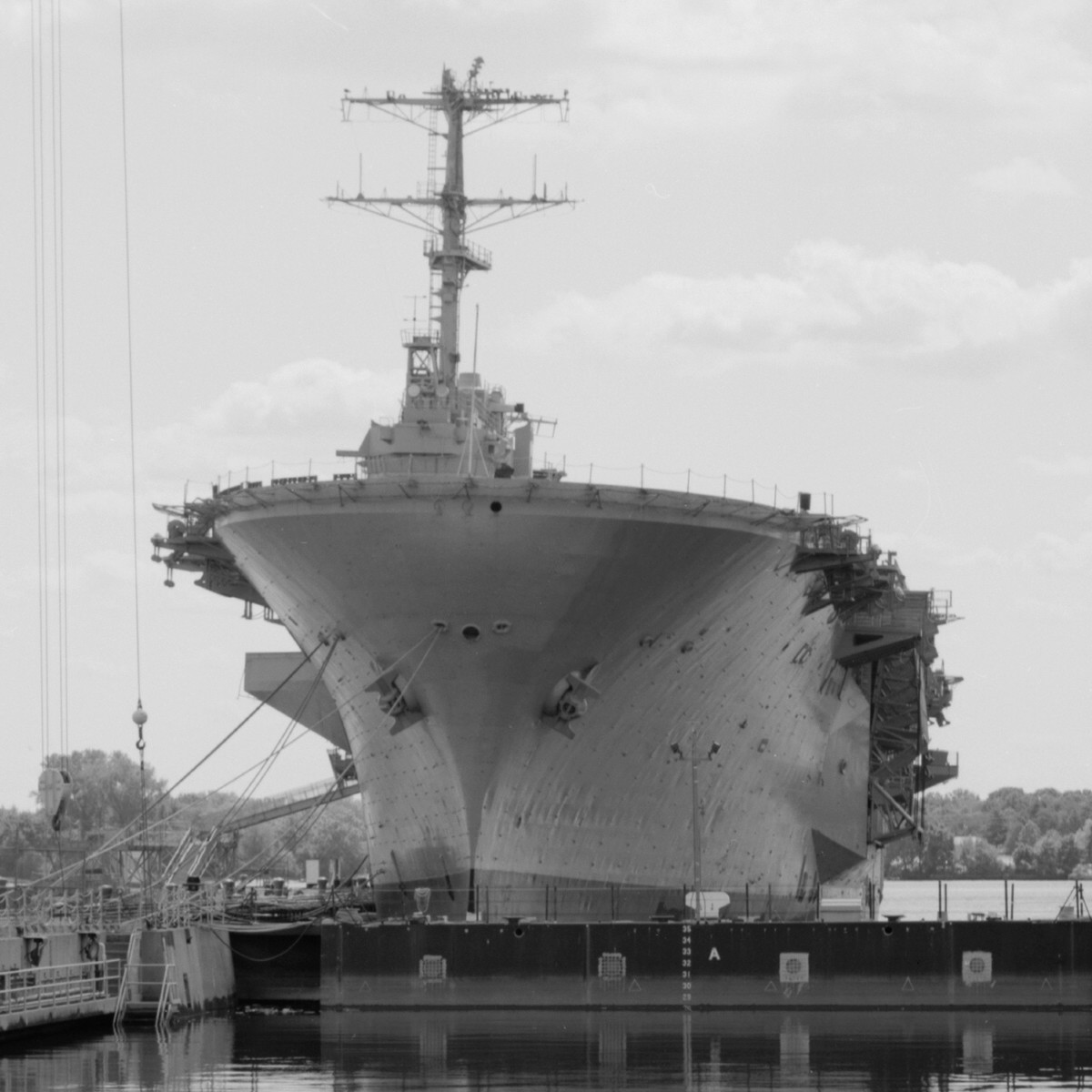 laid up at Philadelphia Naval Shipyard, Pennsylvania - 1995 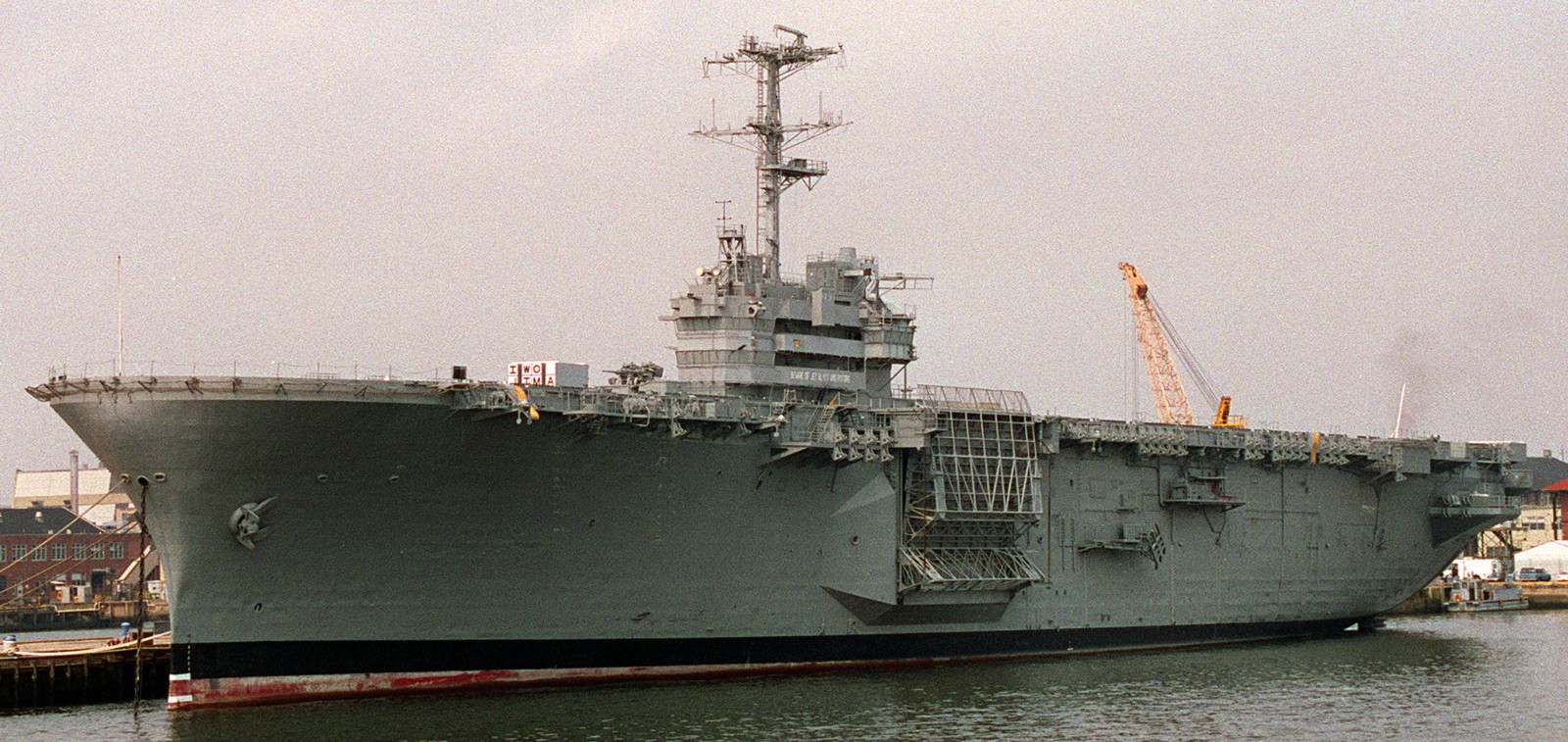 laid up at Philadelphia Naval Shipyard, Pennsylvania - September 1993 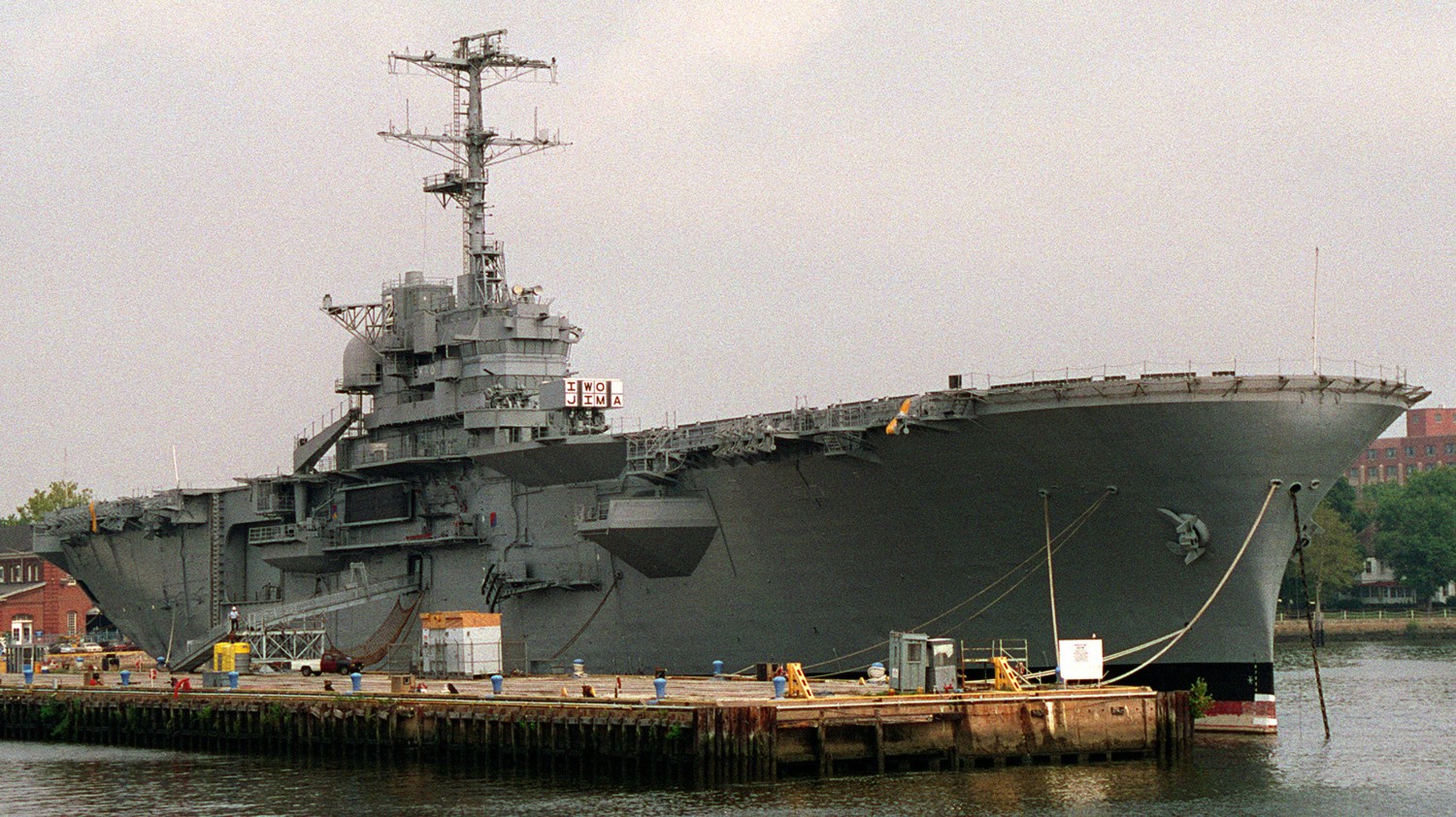 laid up at Philadelphia Naval Shipyard, Pennsylvania - September 1993 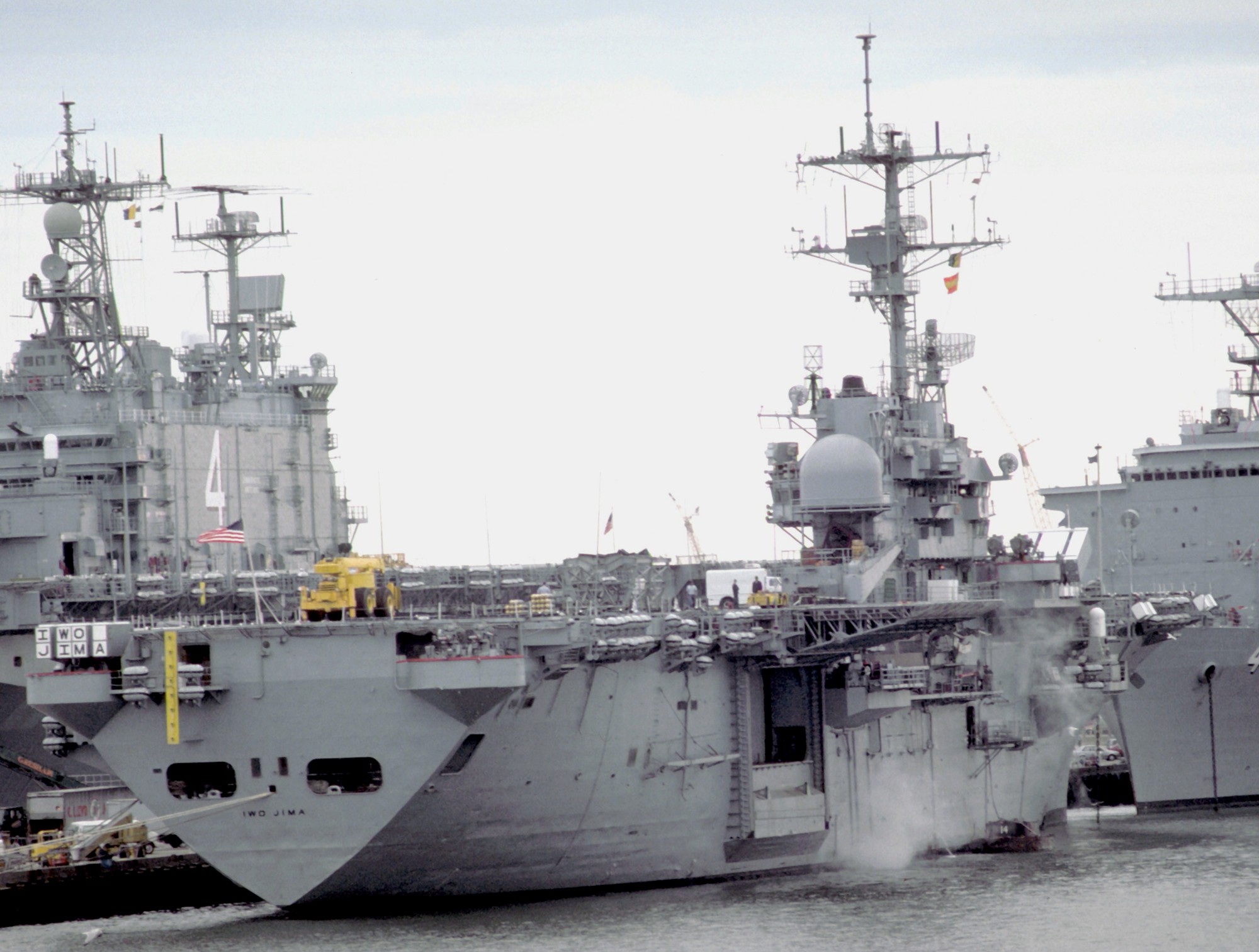 Naval Station Norfolk, Virginia - December 1991 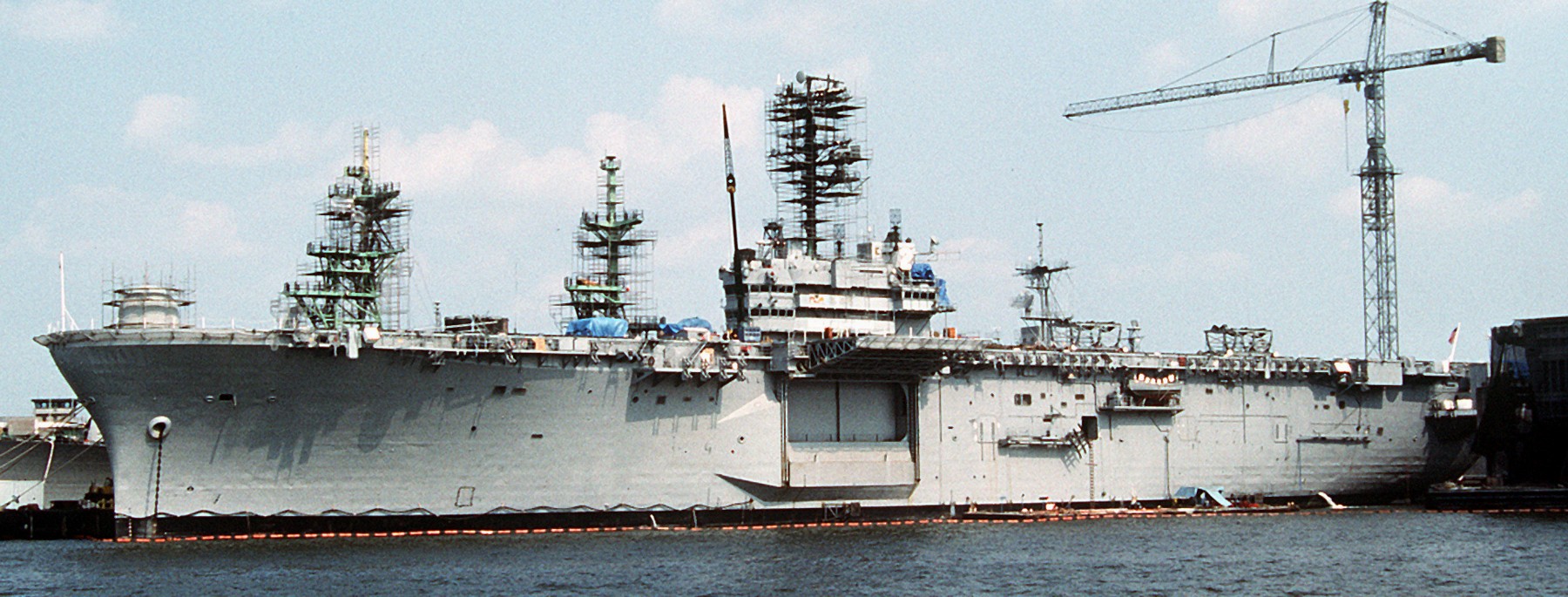 overhaul at Metro Machine Company Imperial Docks, Norfolk, Virginia - August 1991 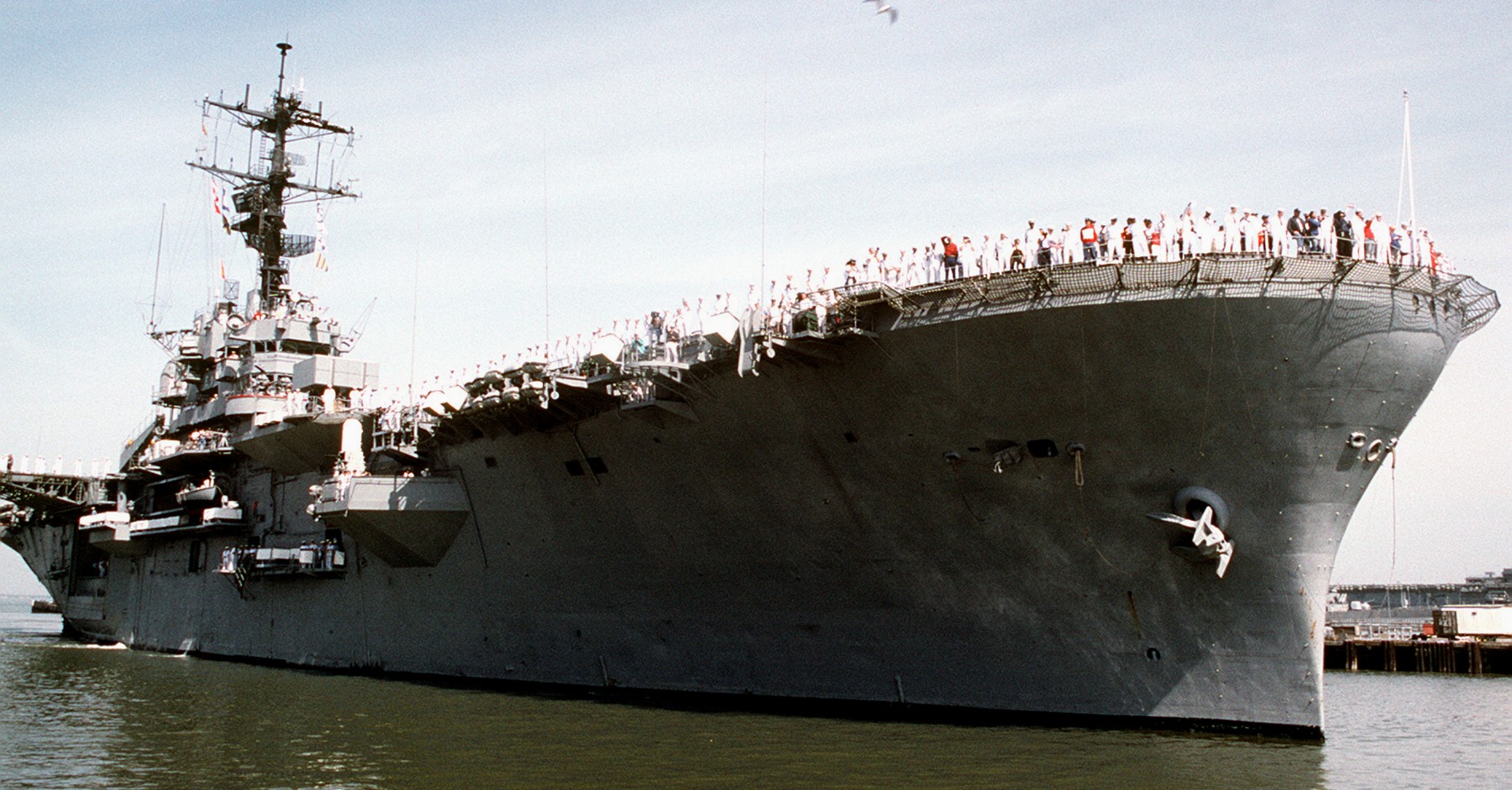 returning to Naval Station Norfolk, Virginia - 1991 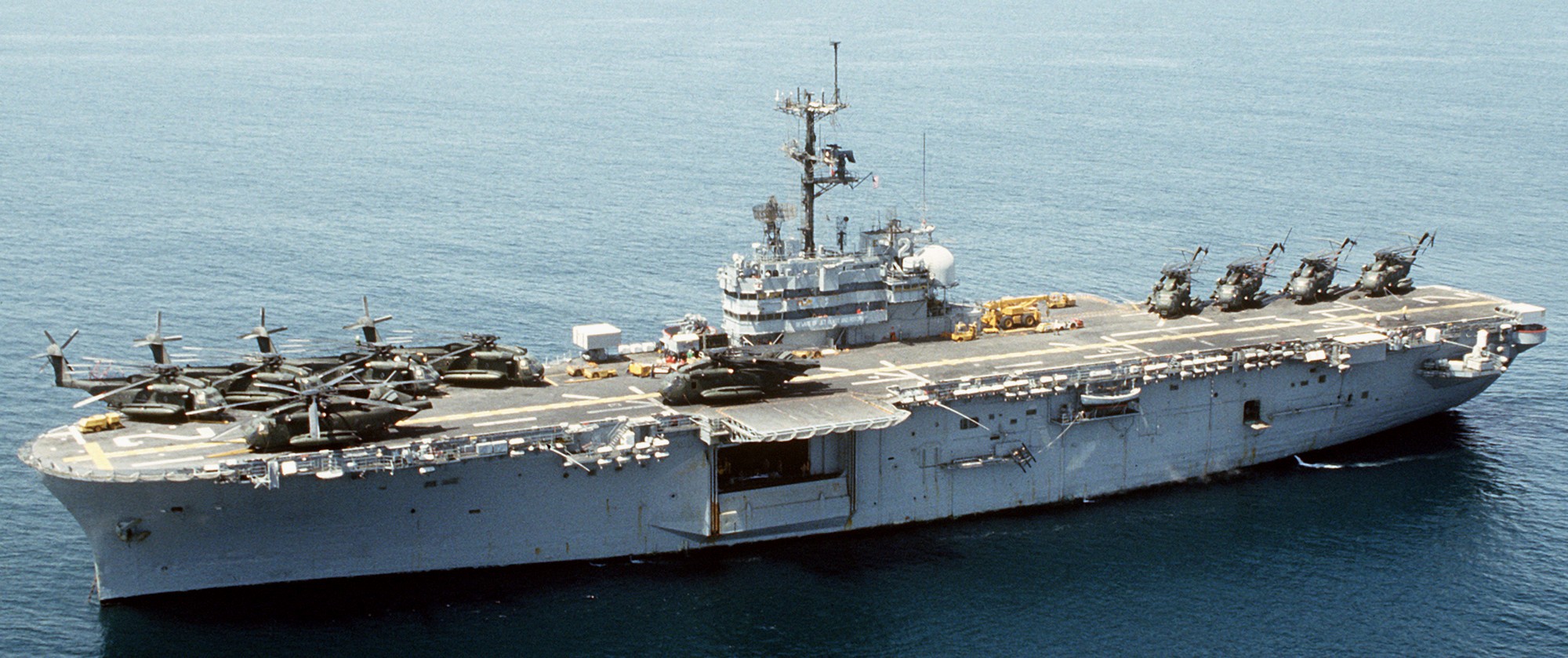 during Operation Desert Storm - 1991 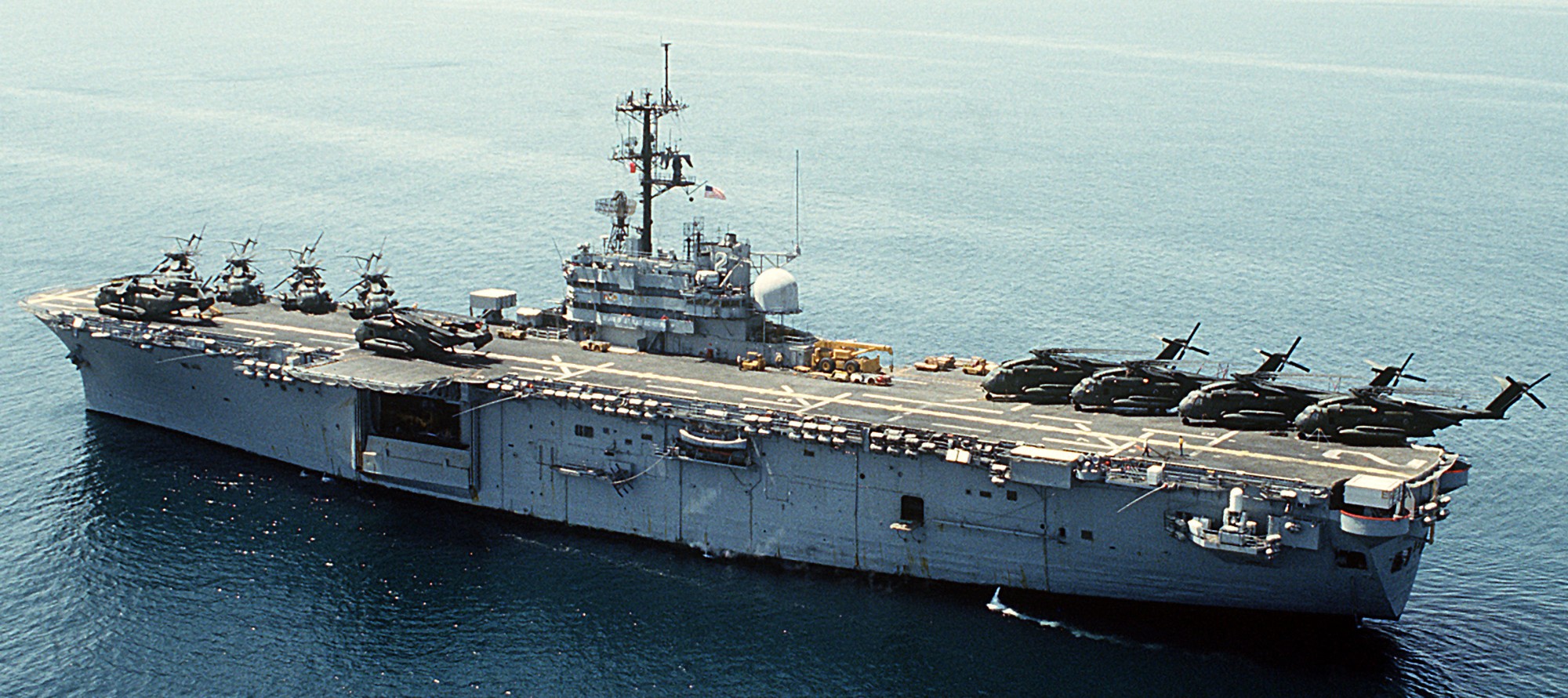 during Operation Desert Storm - 1991 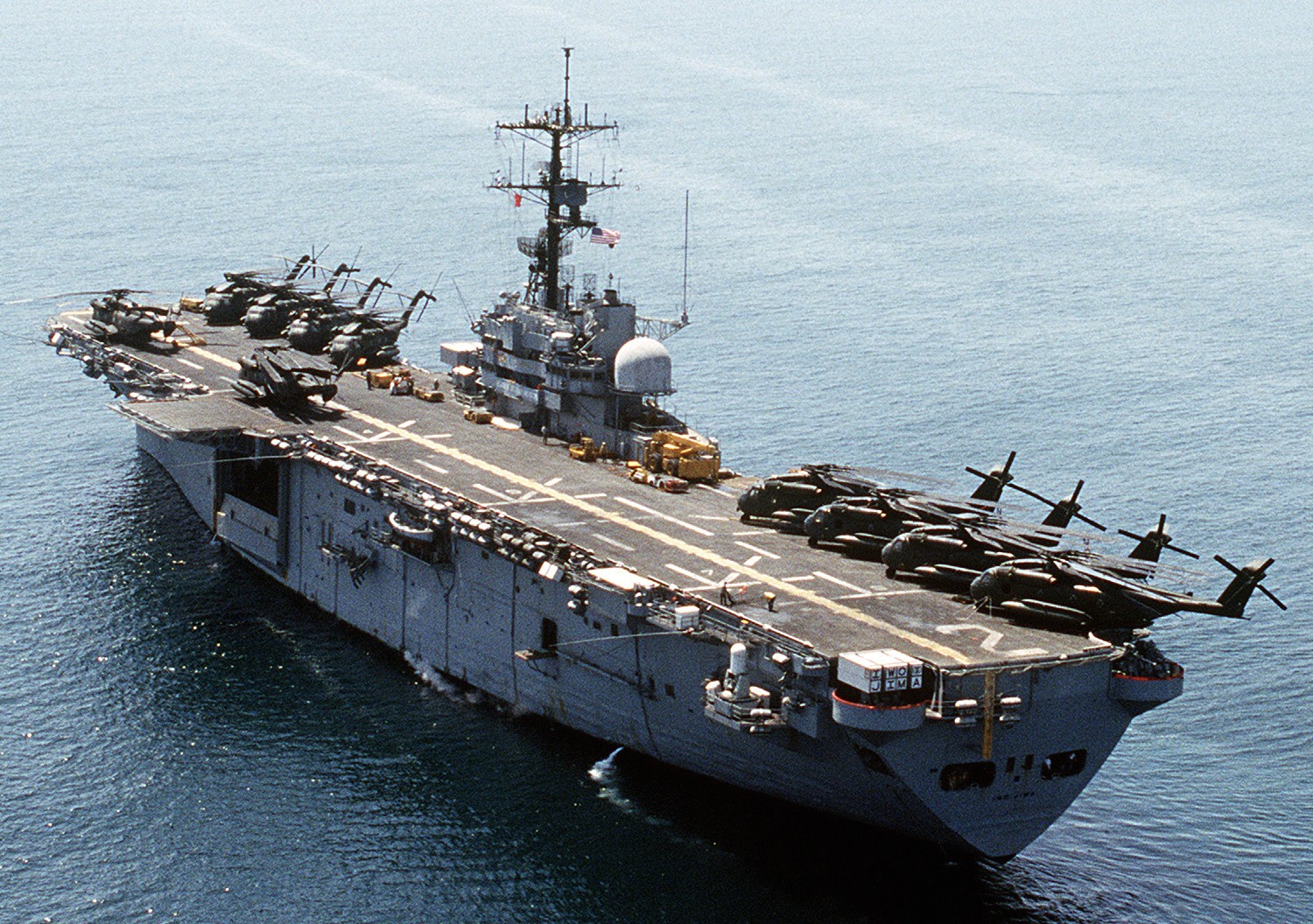 during Operation Desert Storm - 1991 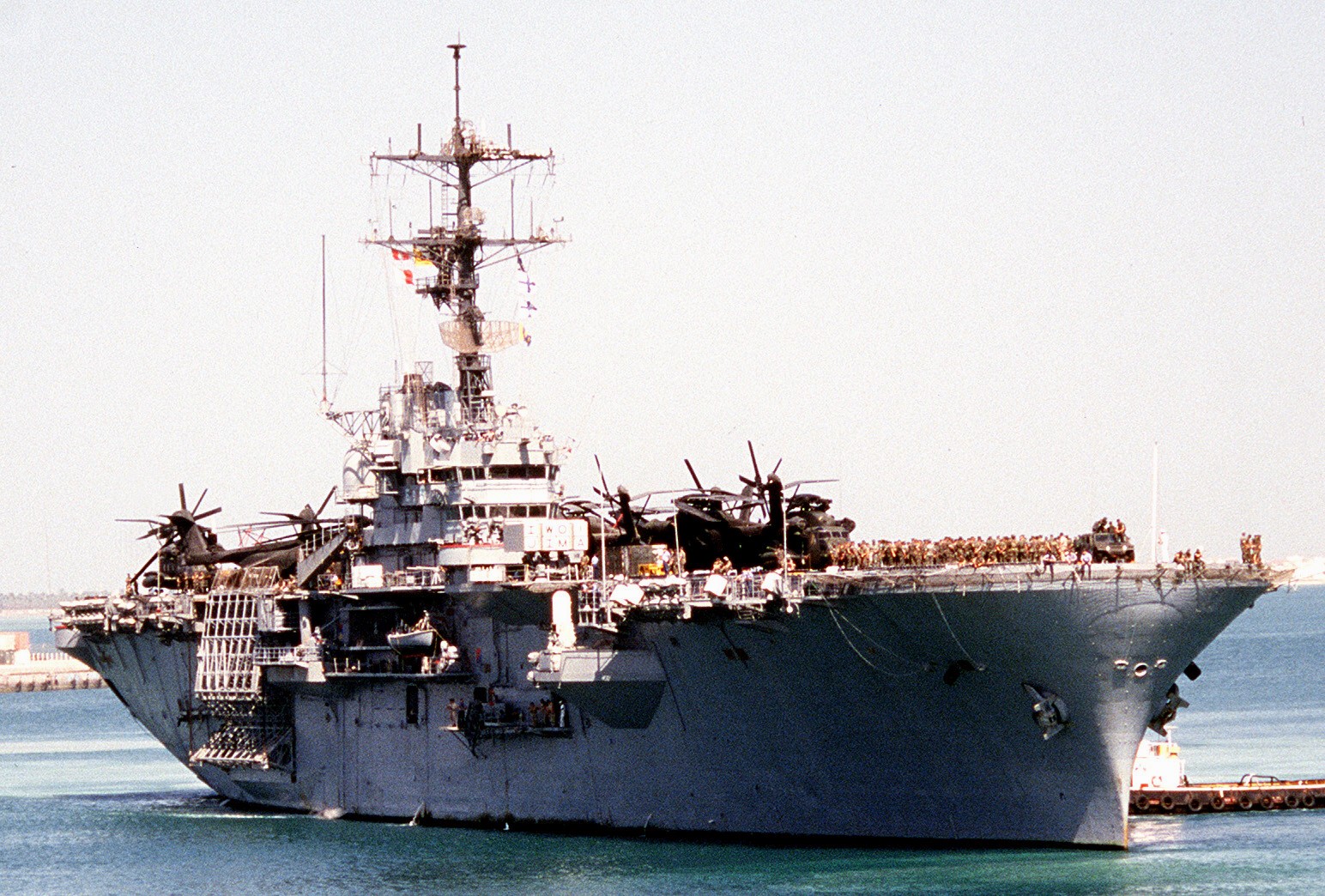 during Operation Desert Storm - 1991 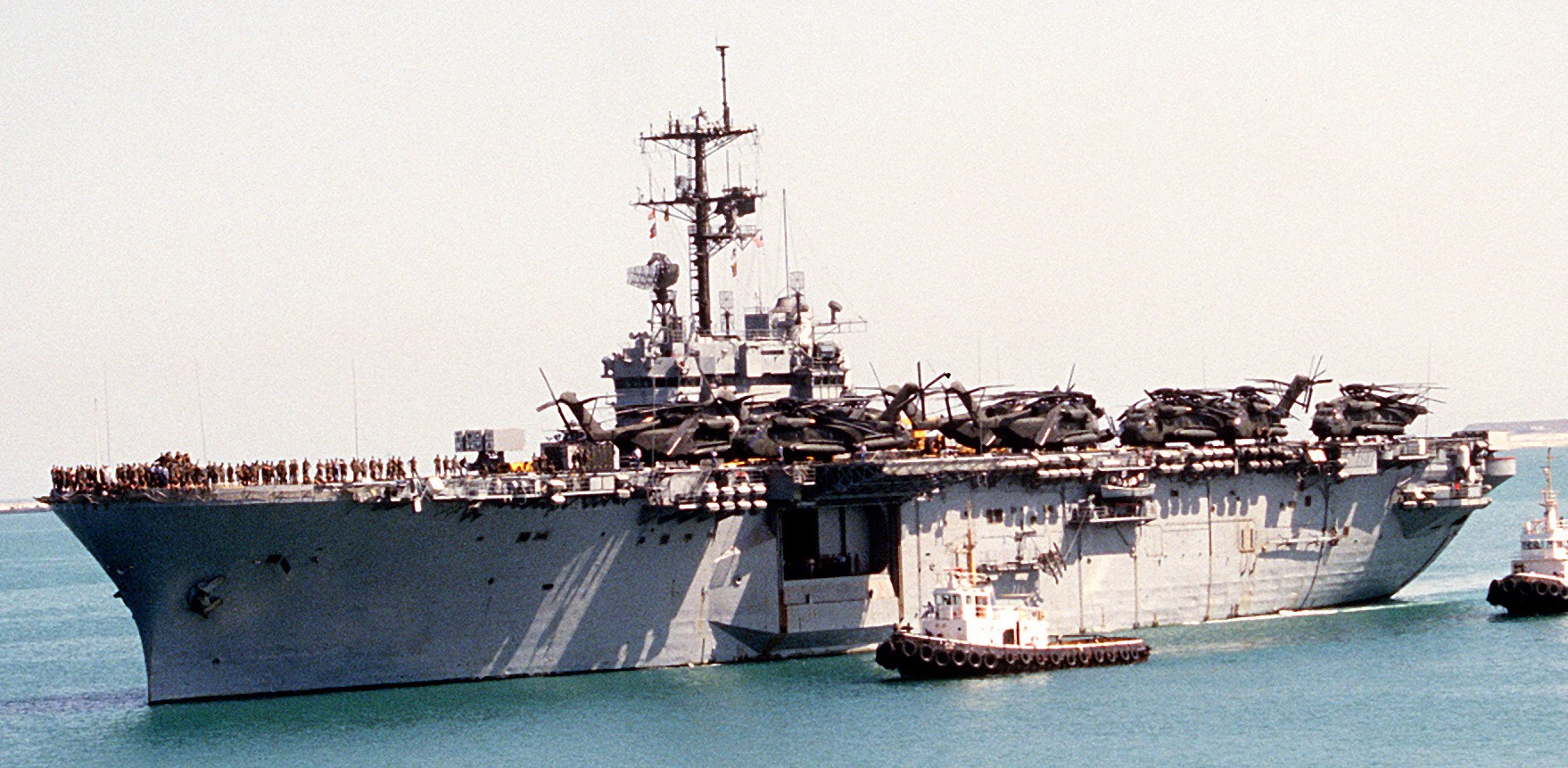 during Operation Desert Storm - 1991 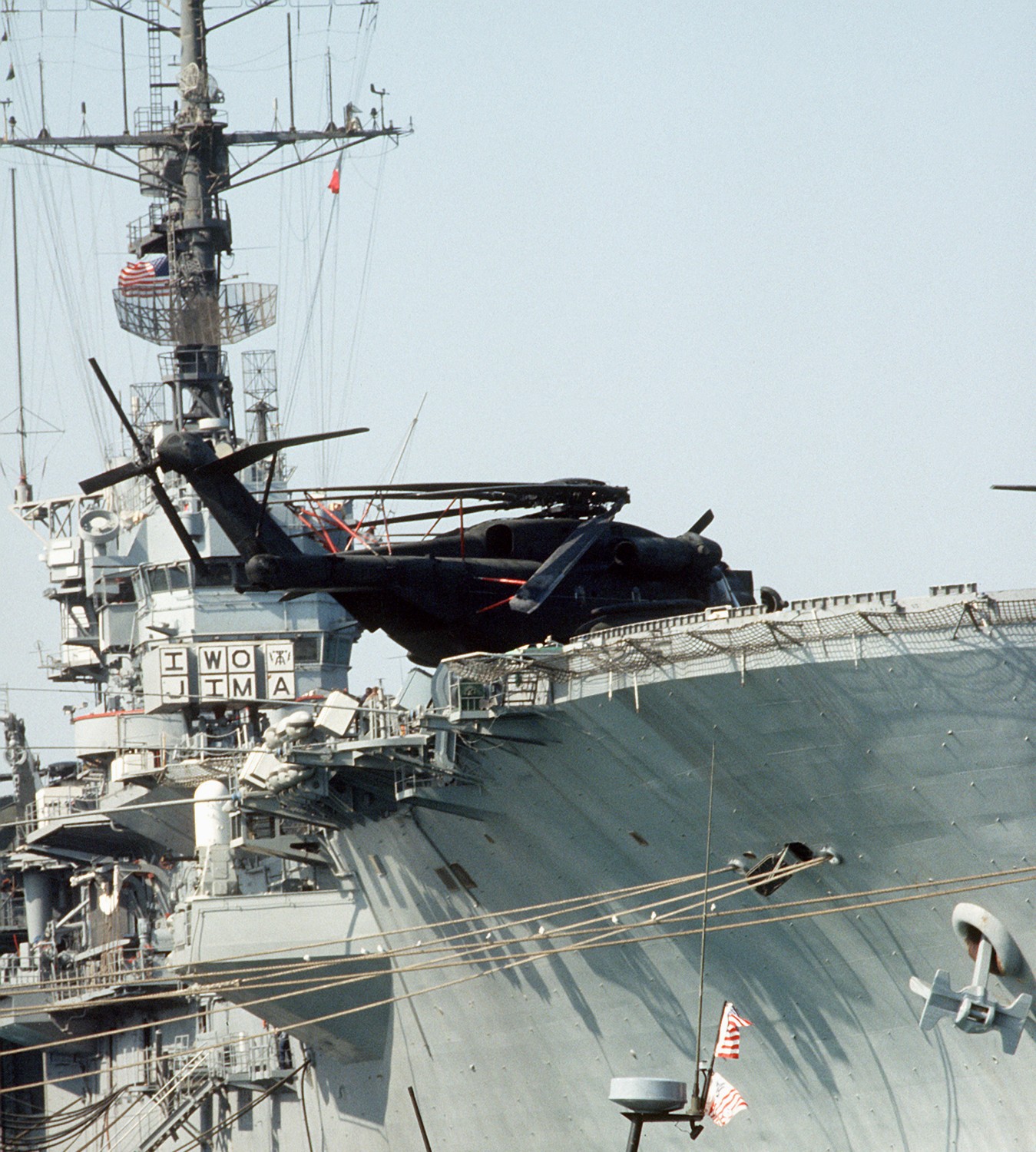 during Operation Desert Storm - 1991 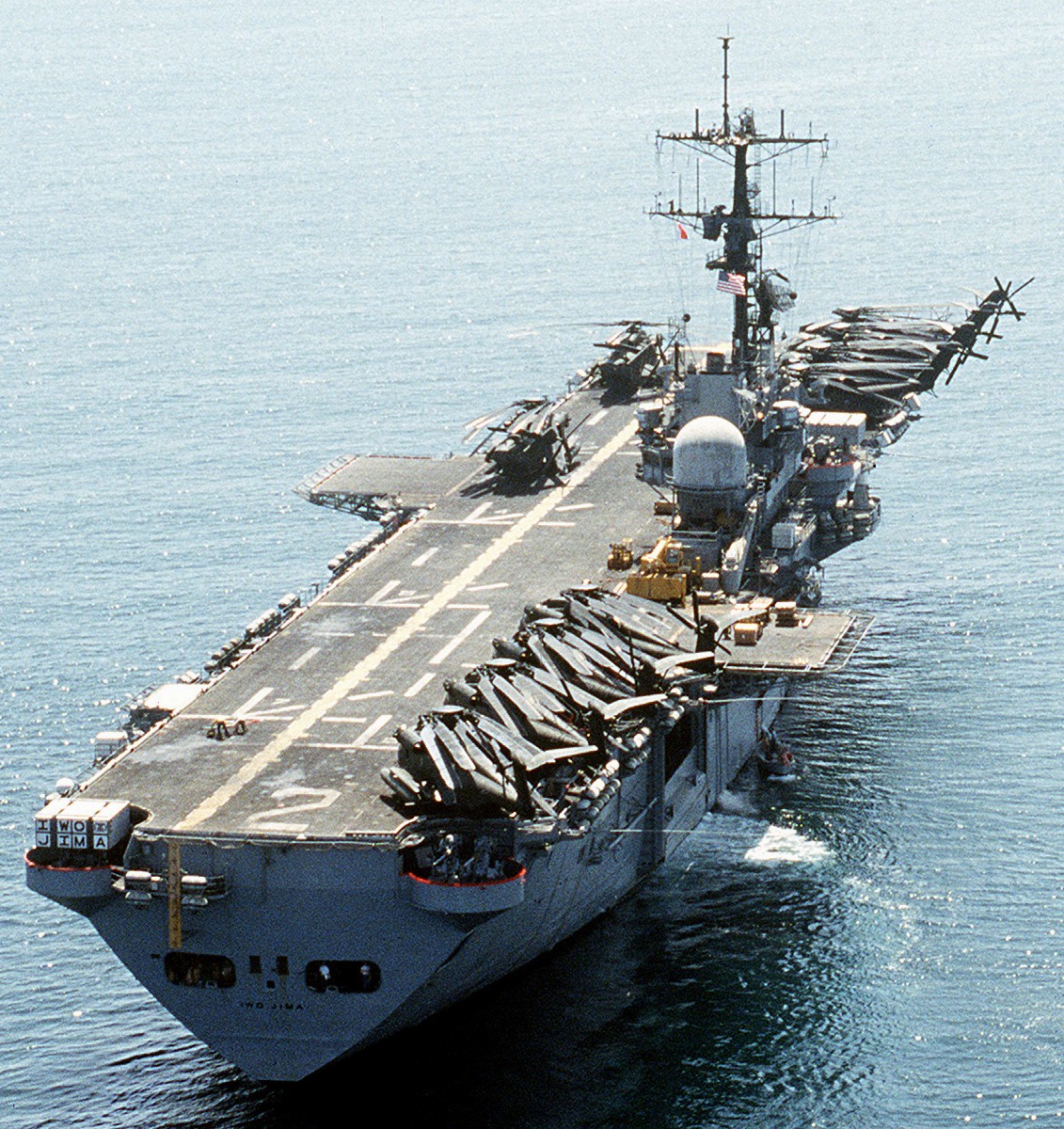 during Operation Desert Shield/Storm - 1991 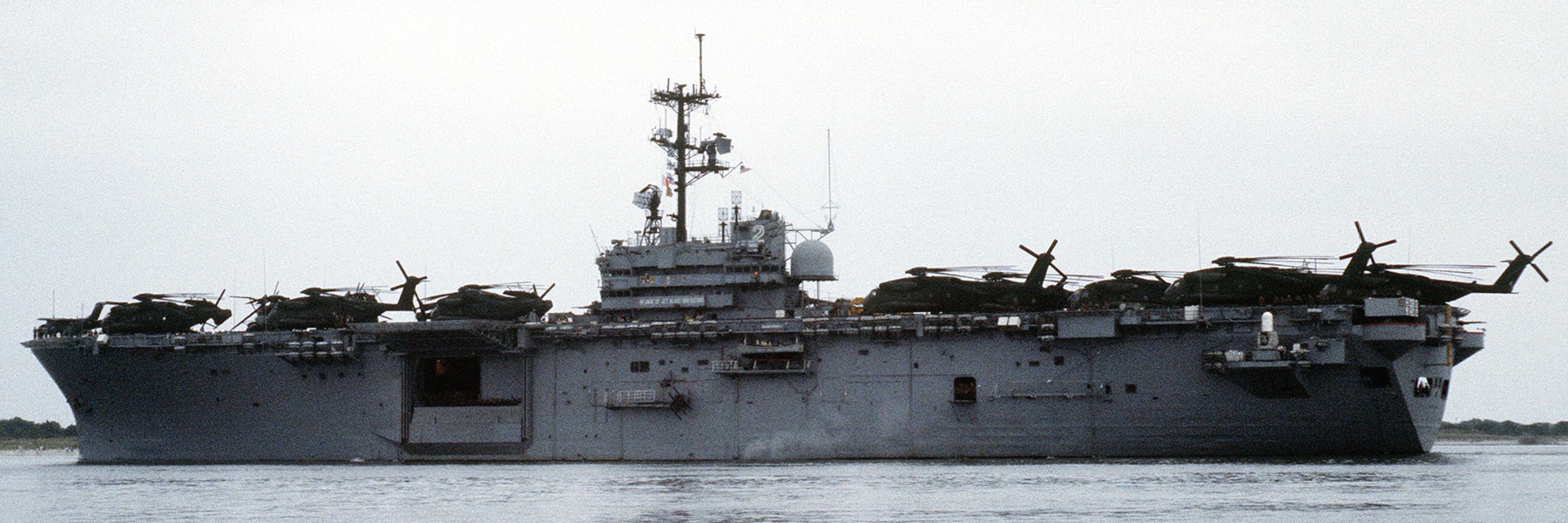 departing Morehead City, North Carolina - 1991 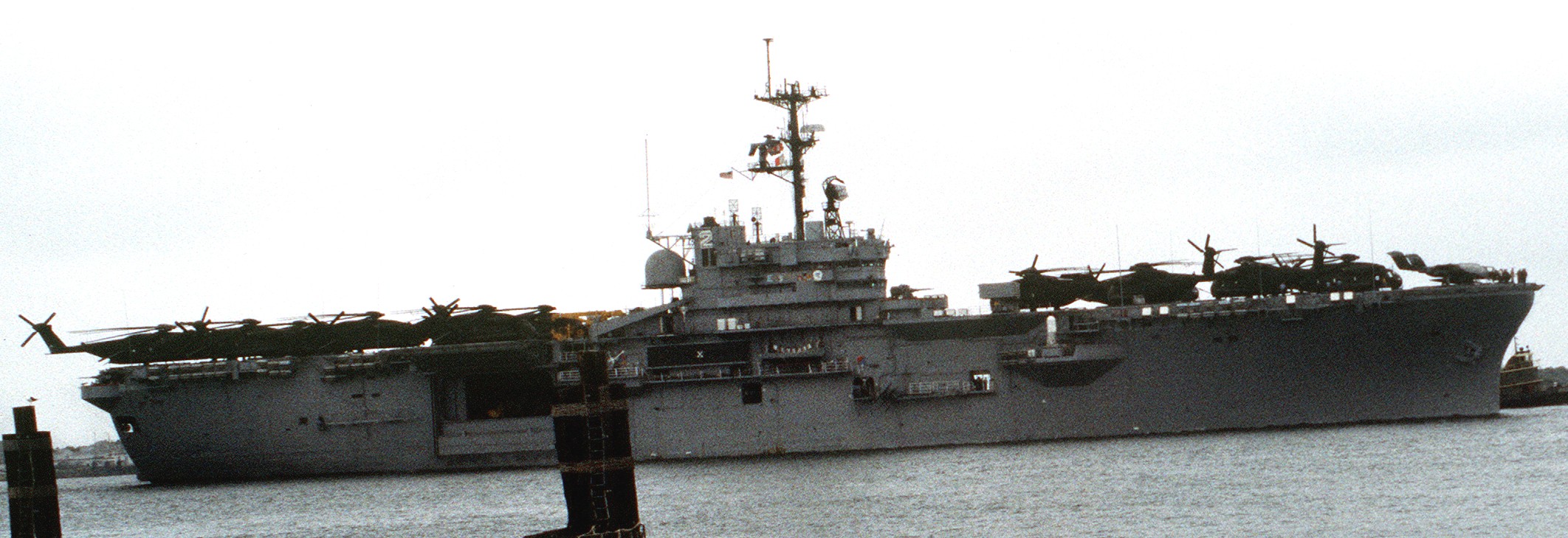 departing Morehead City, North Carolina - 1991 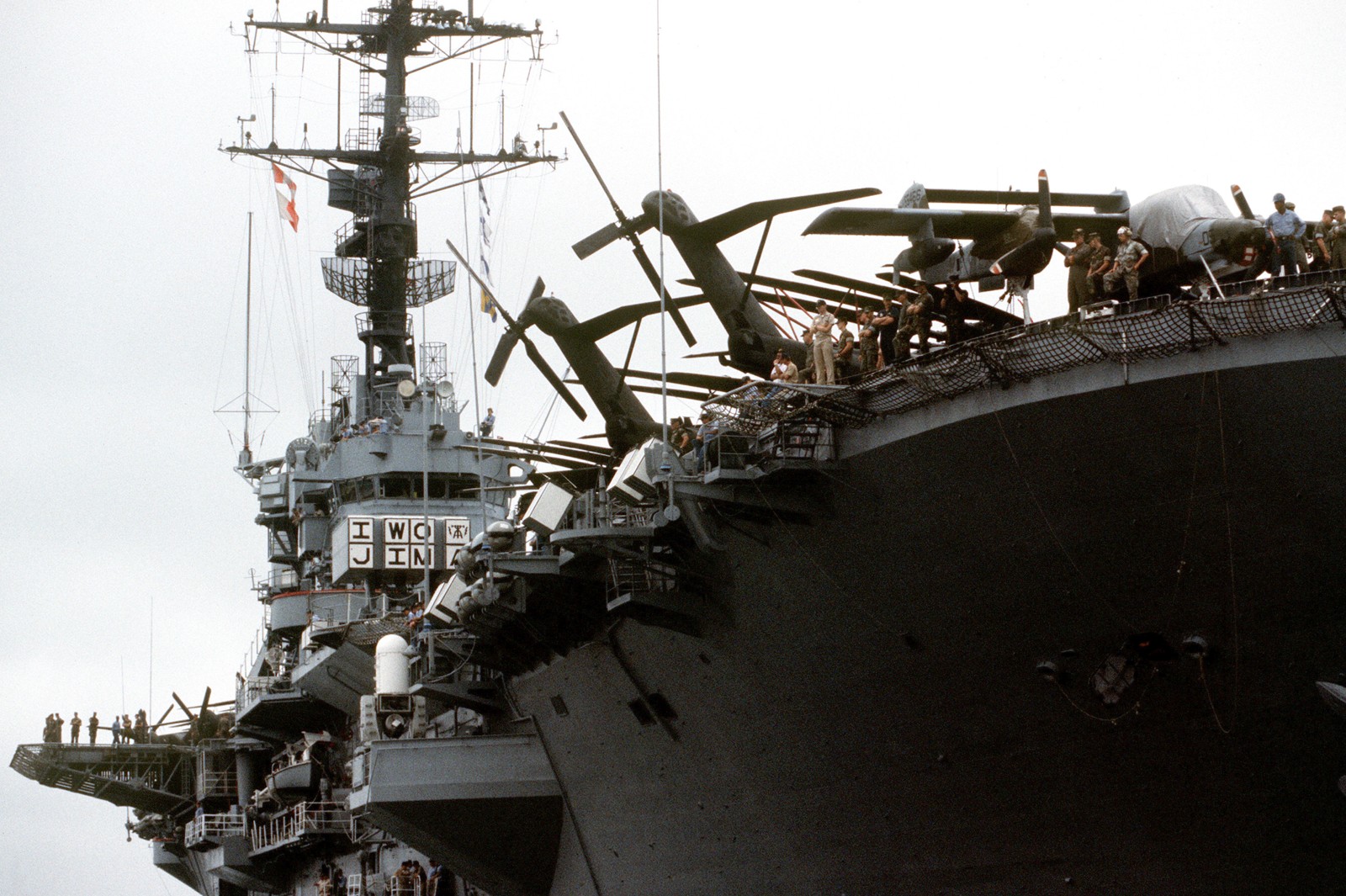 departing Morehead City, North Carolina - 1991 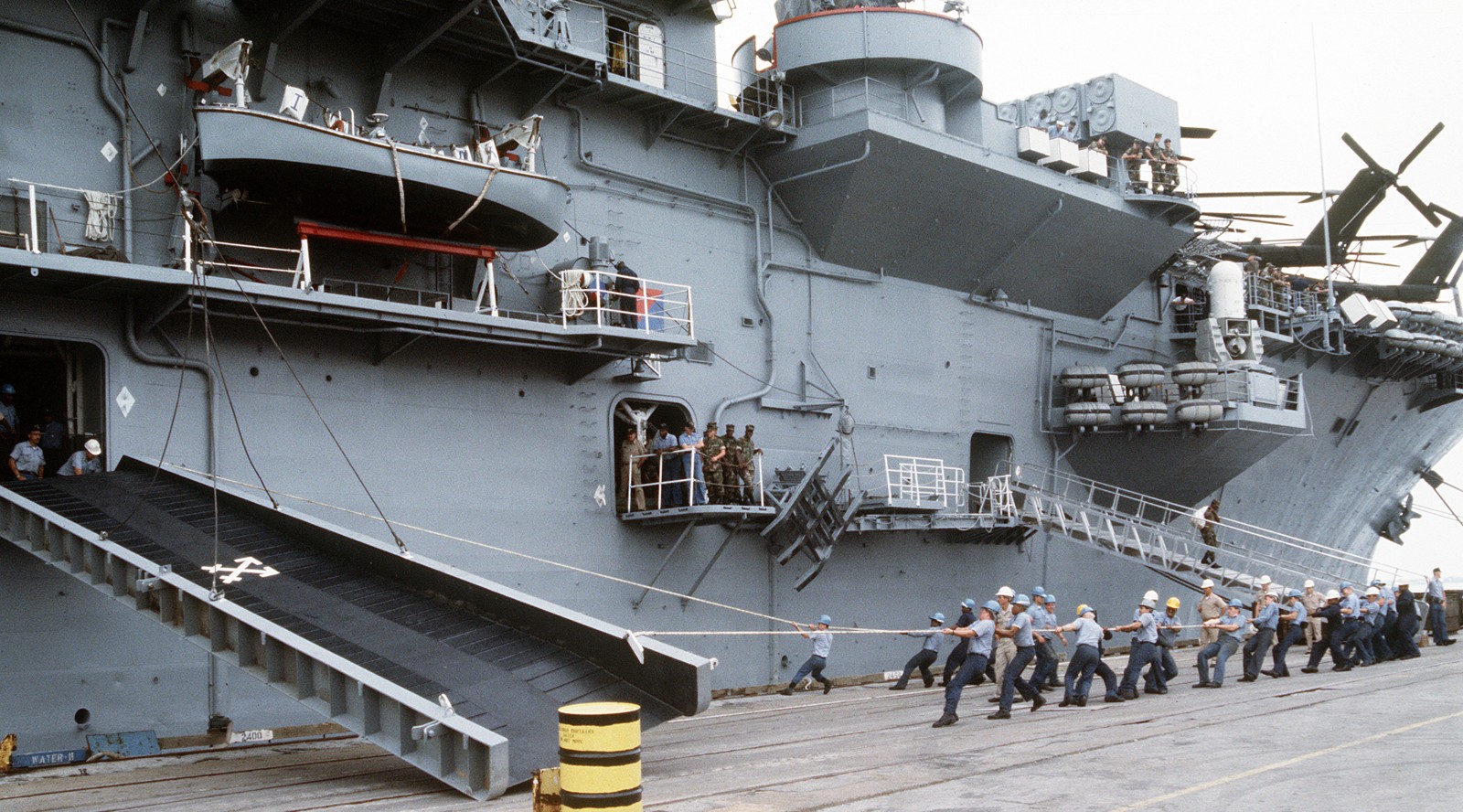 departing Morehead City, North Carolina - 1991 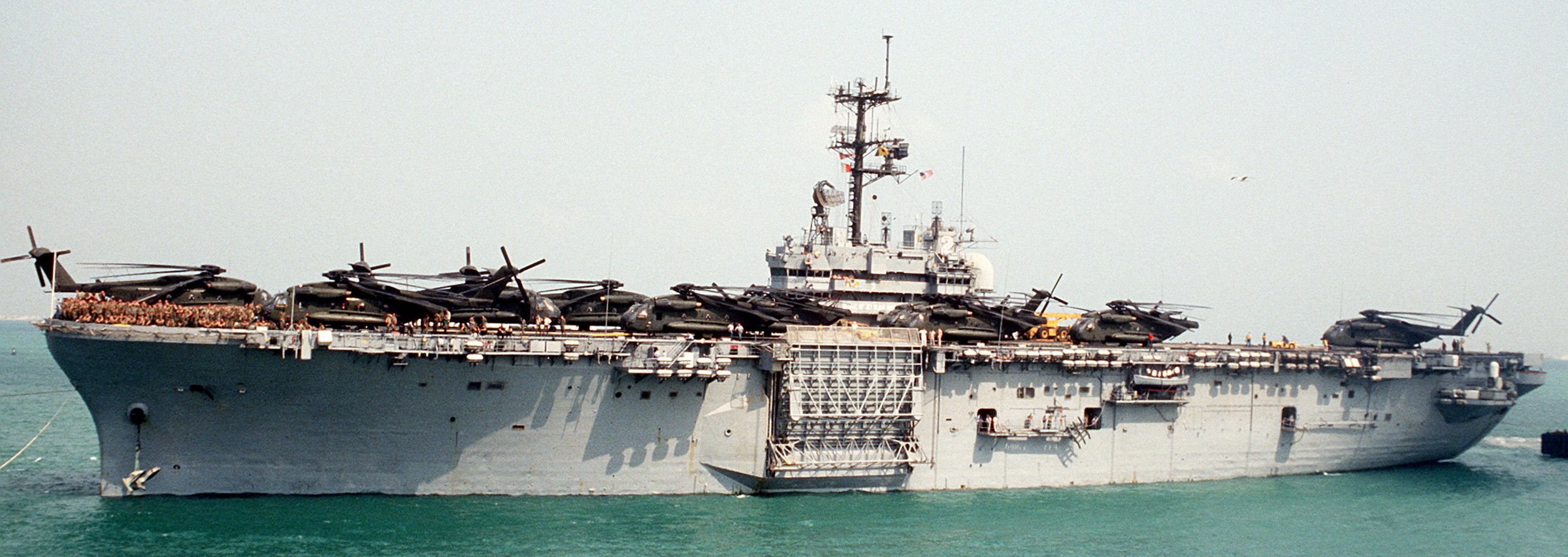 Bahrain - October 1990 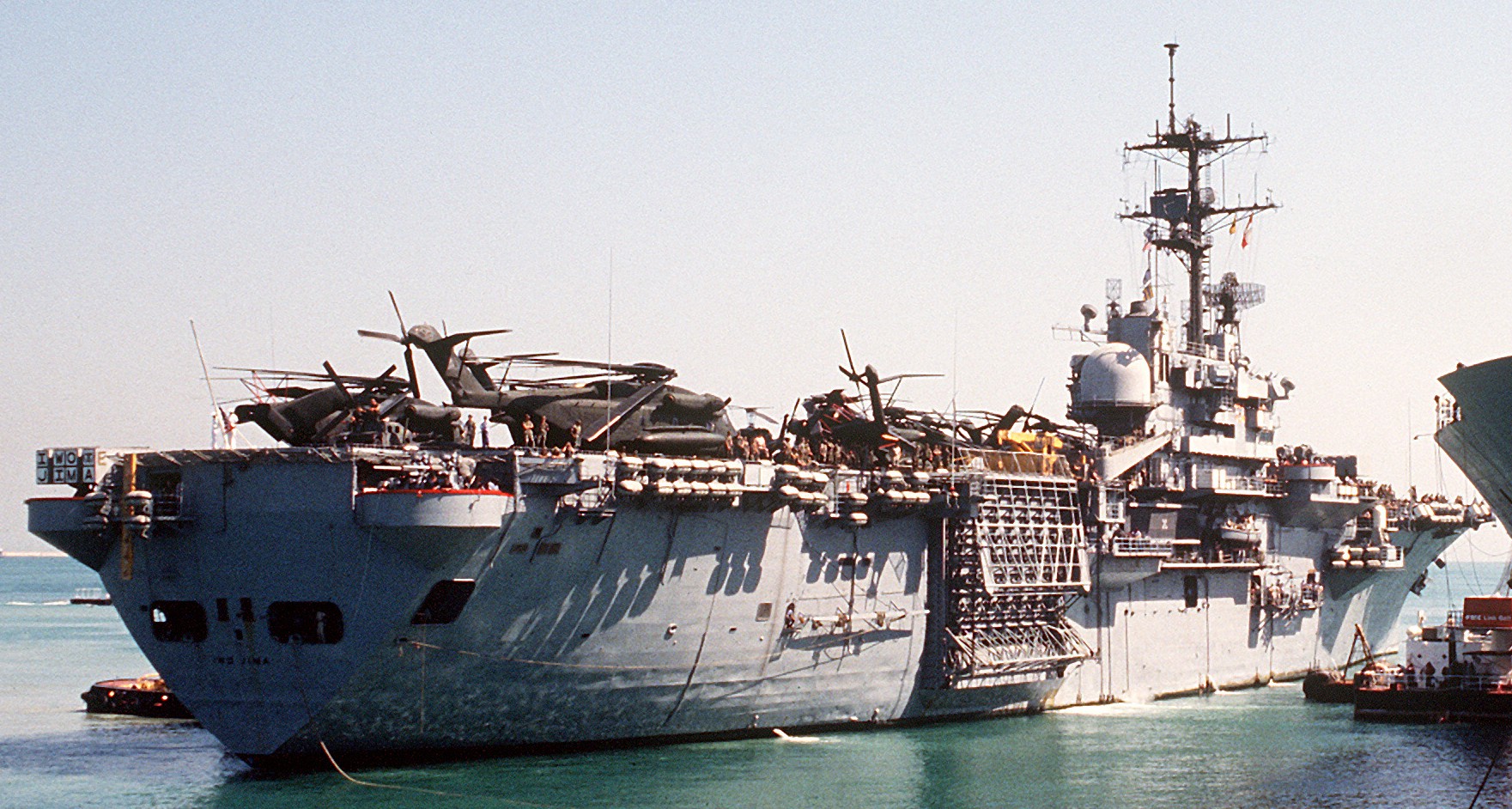 Bahrain - October 1990 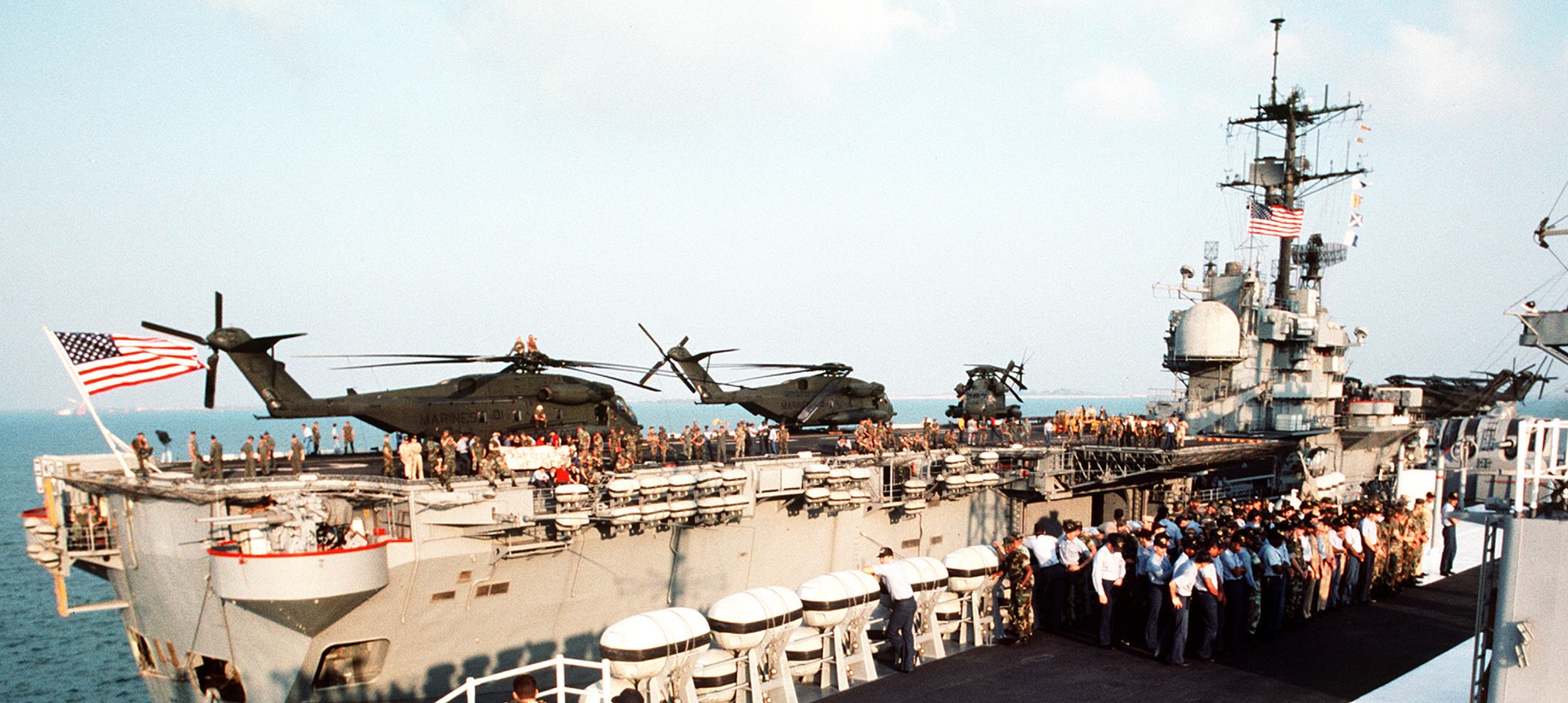 Bahrain - October 1990 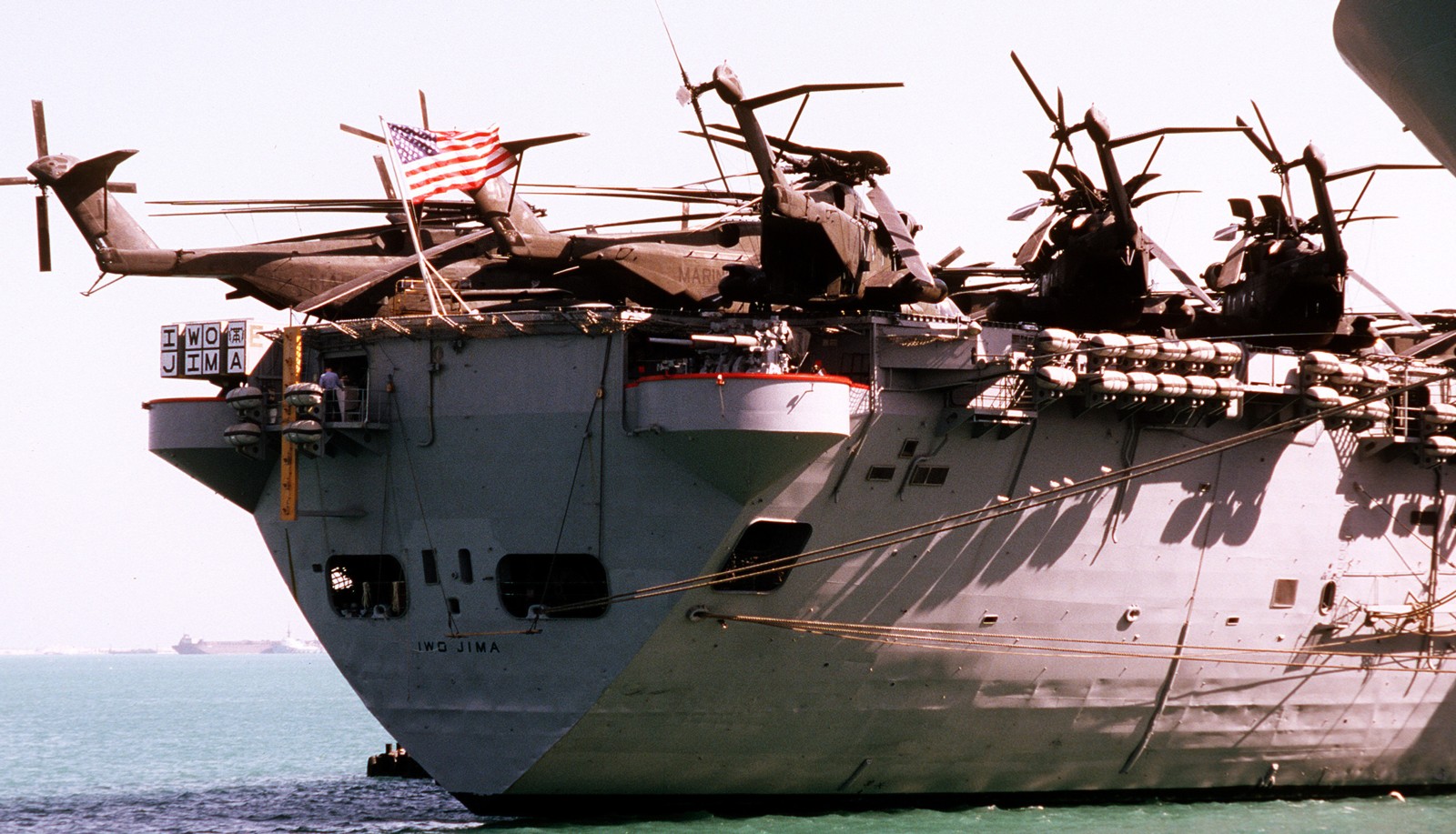 Bahrain - October 1990 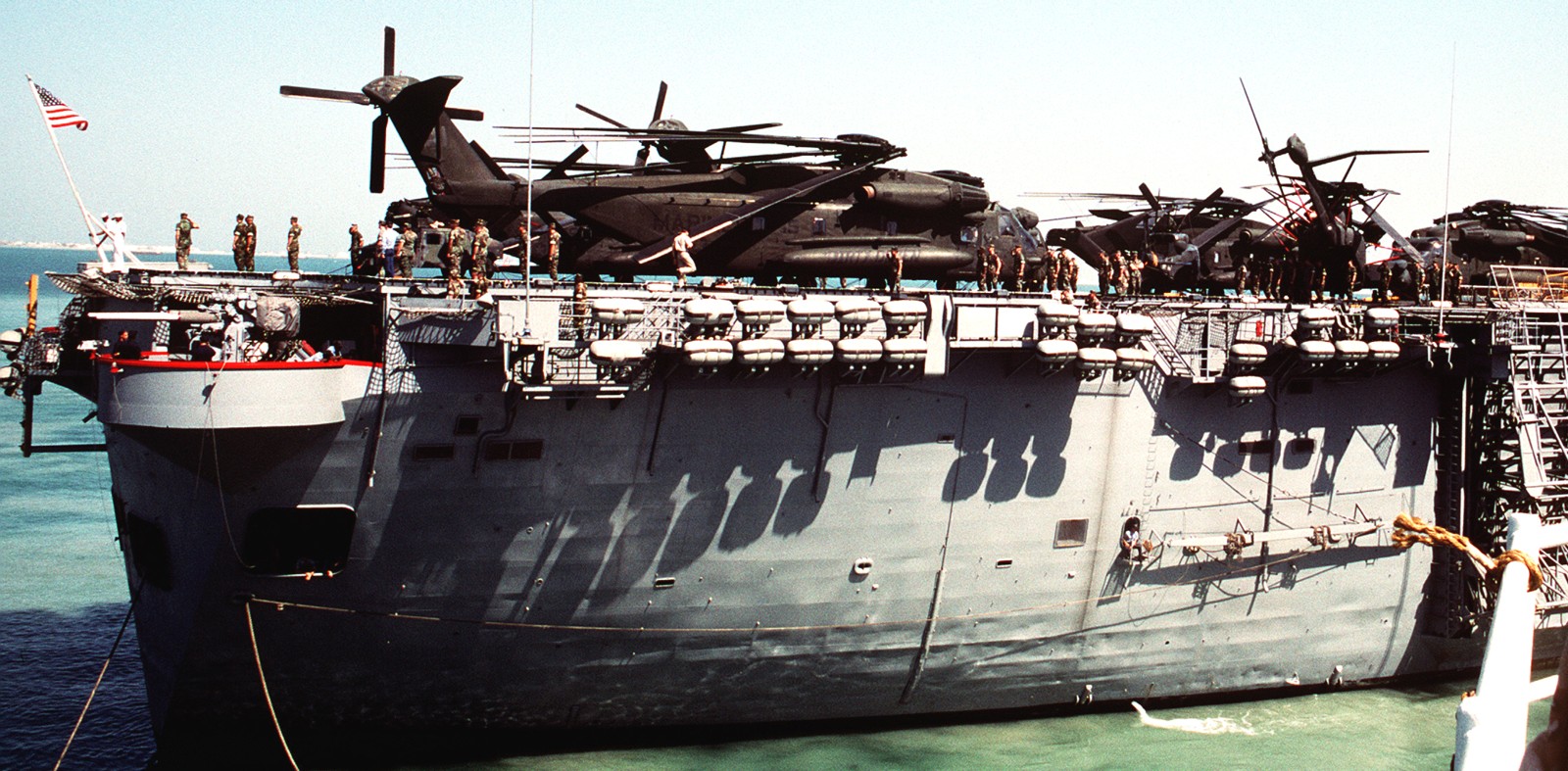 Bahrain - October 1990 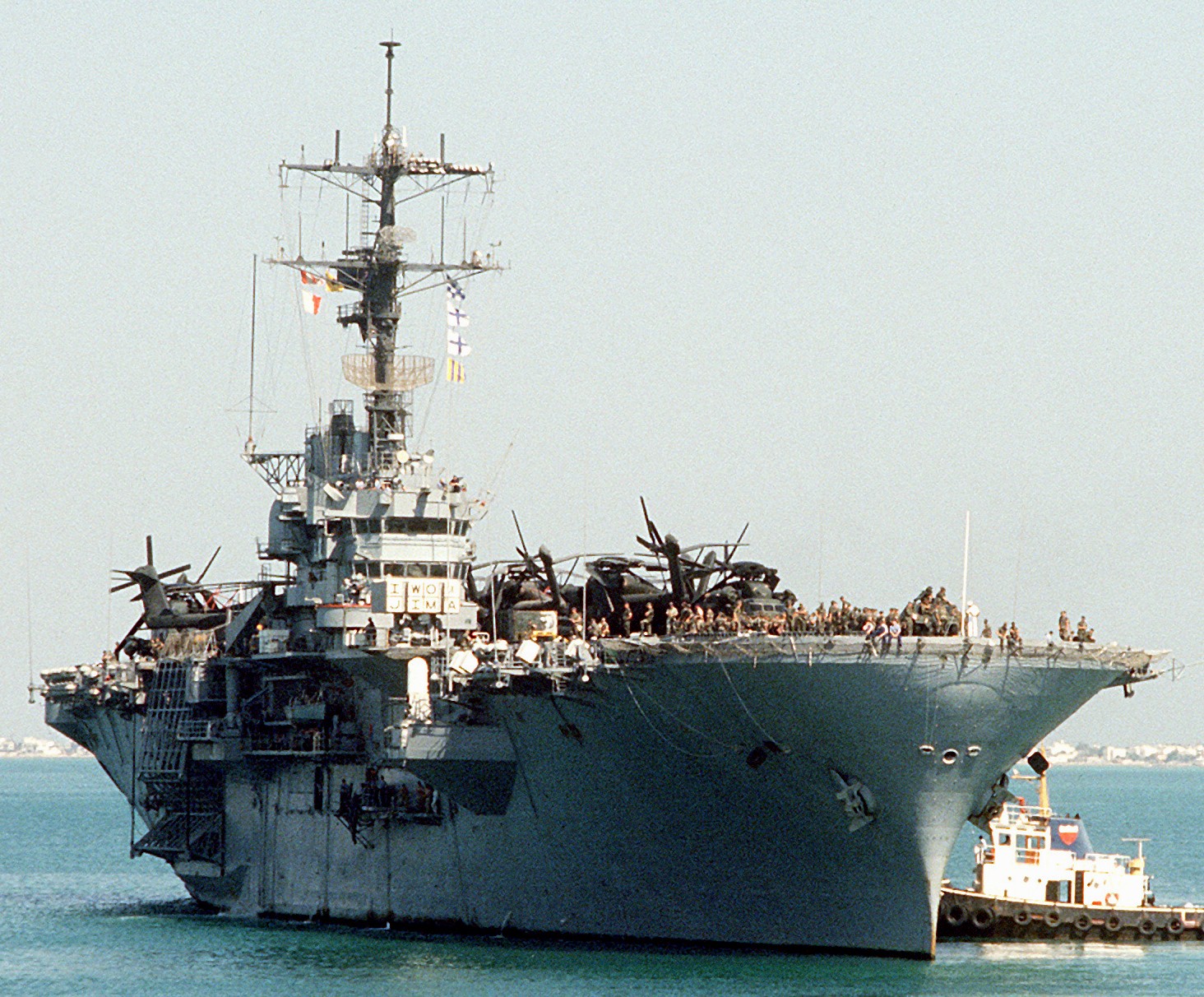 Bahrain - October 1990 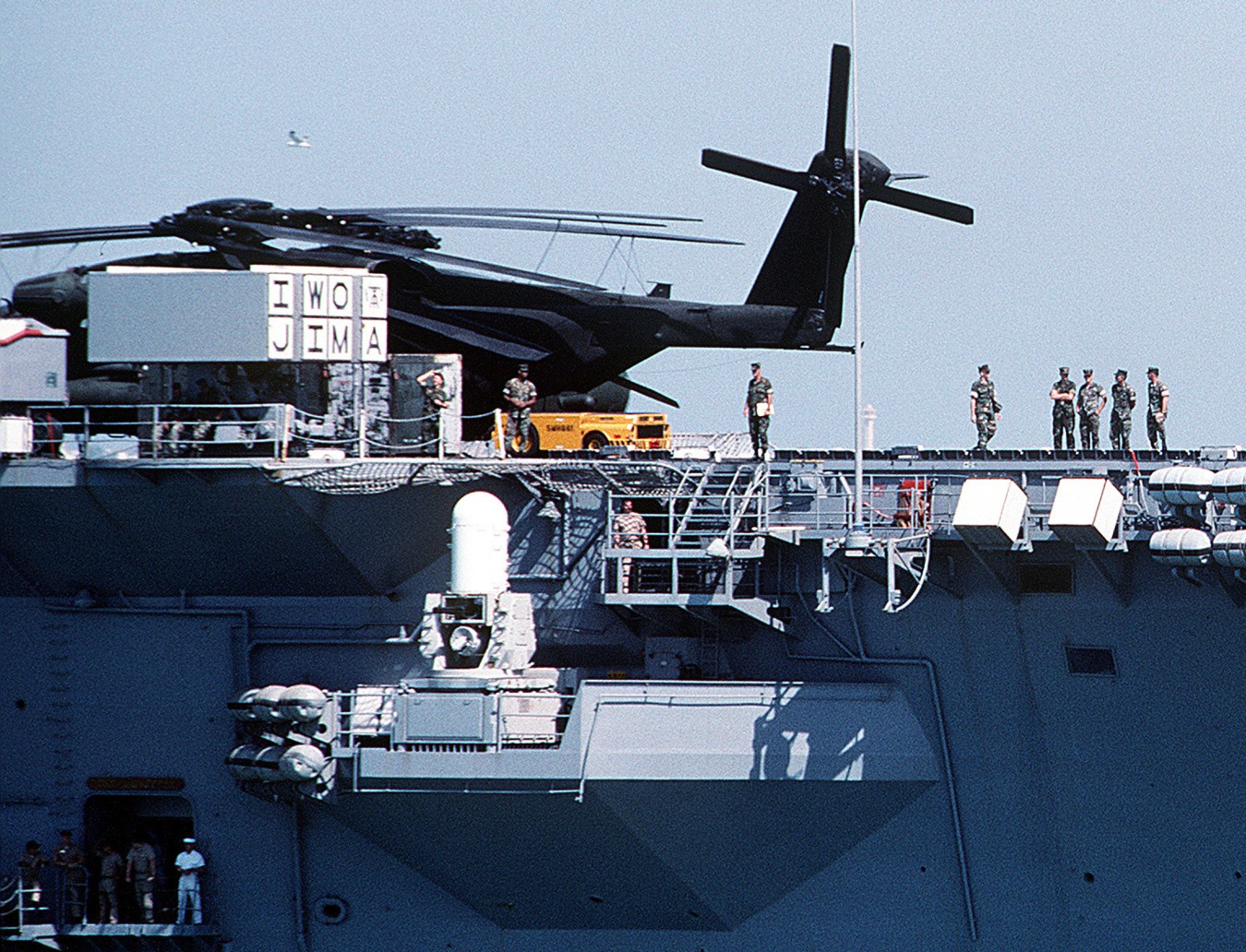 Bahrain - October 1990 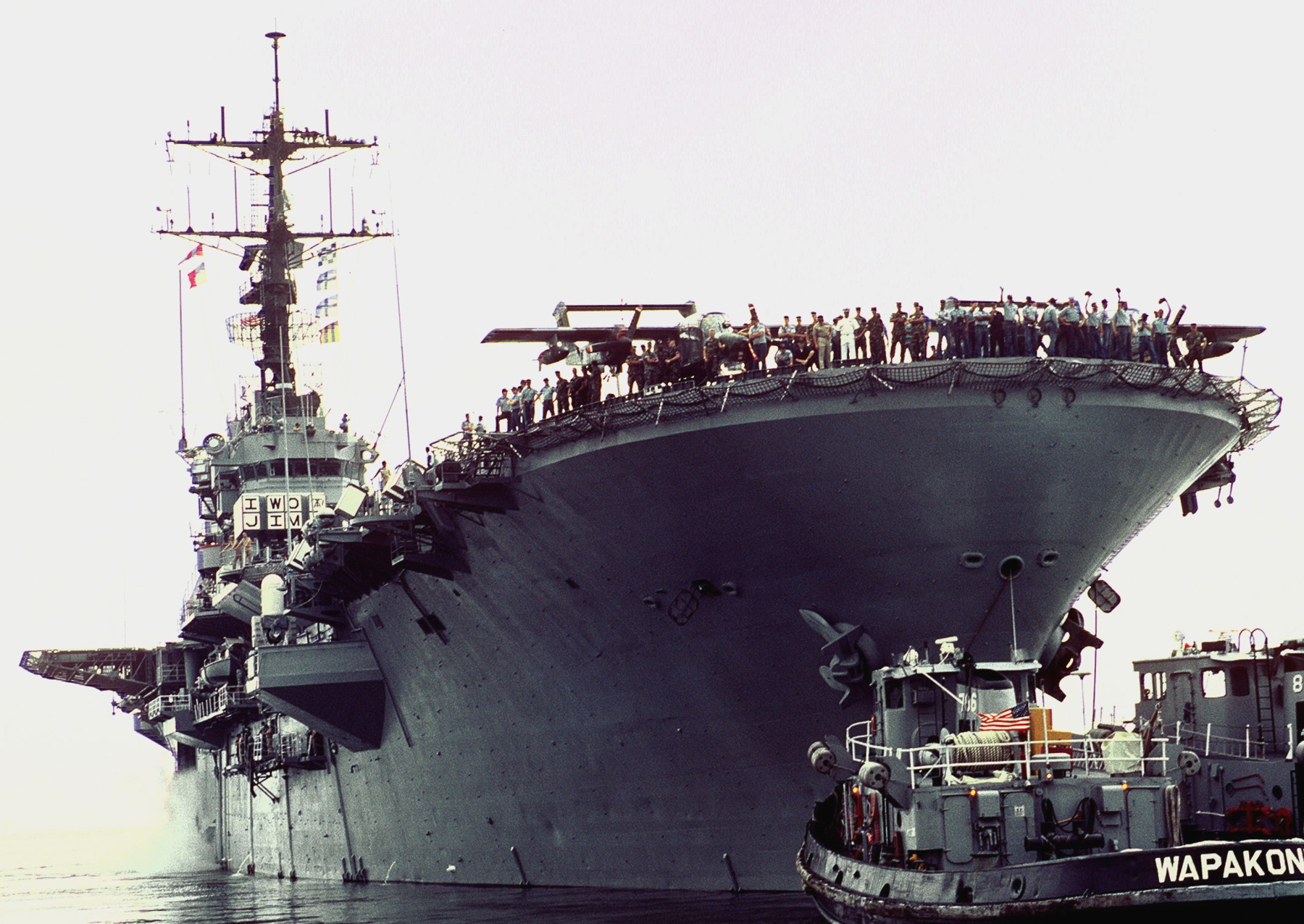 departing Naval Station Norfolk, Virginia - August 1990 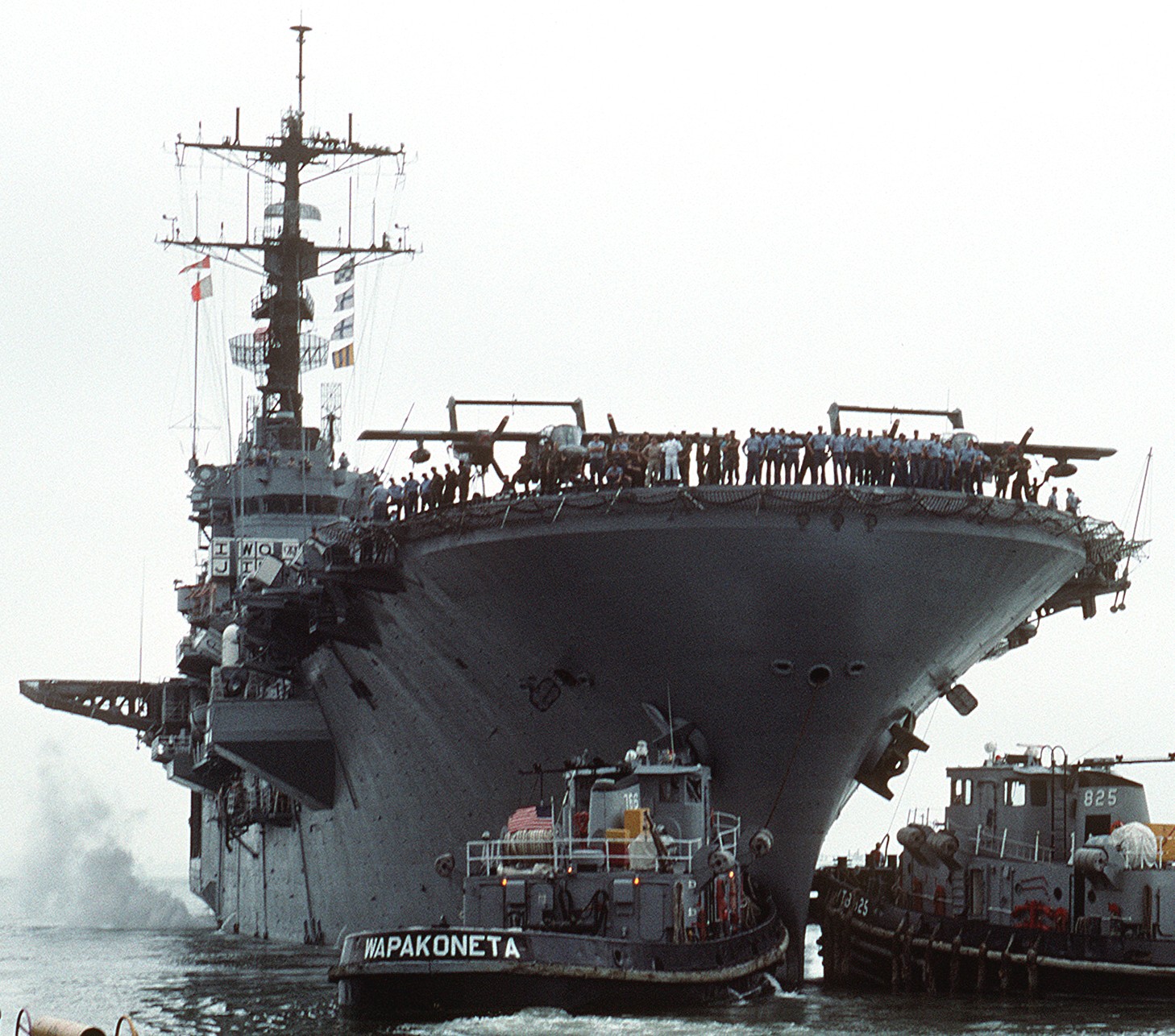 departing Naval Station Norfolk, Virginia - August 1990 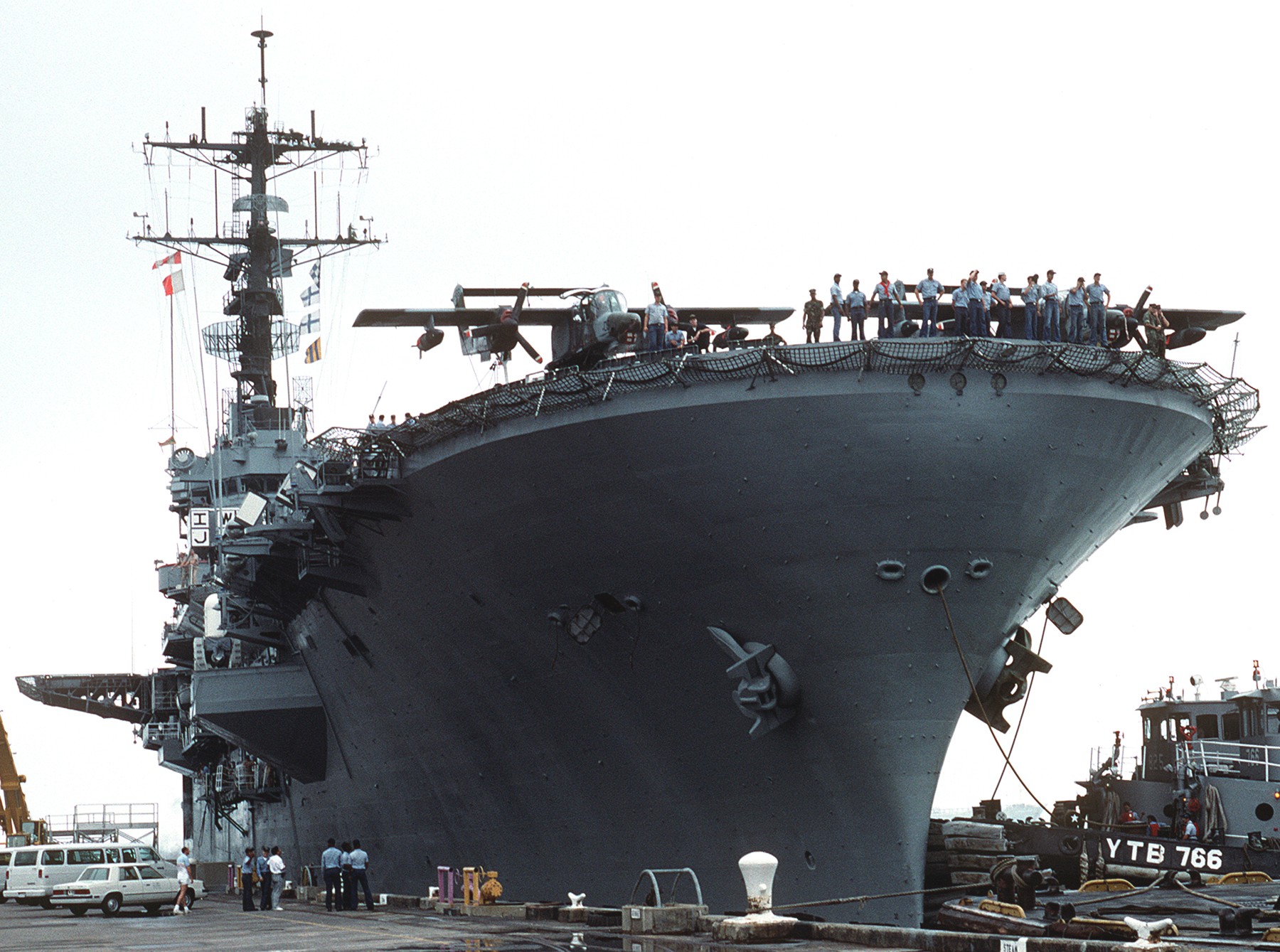 departing Naval Station Norfolk, Virginia - August 1990 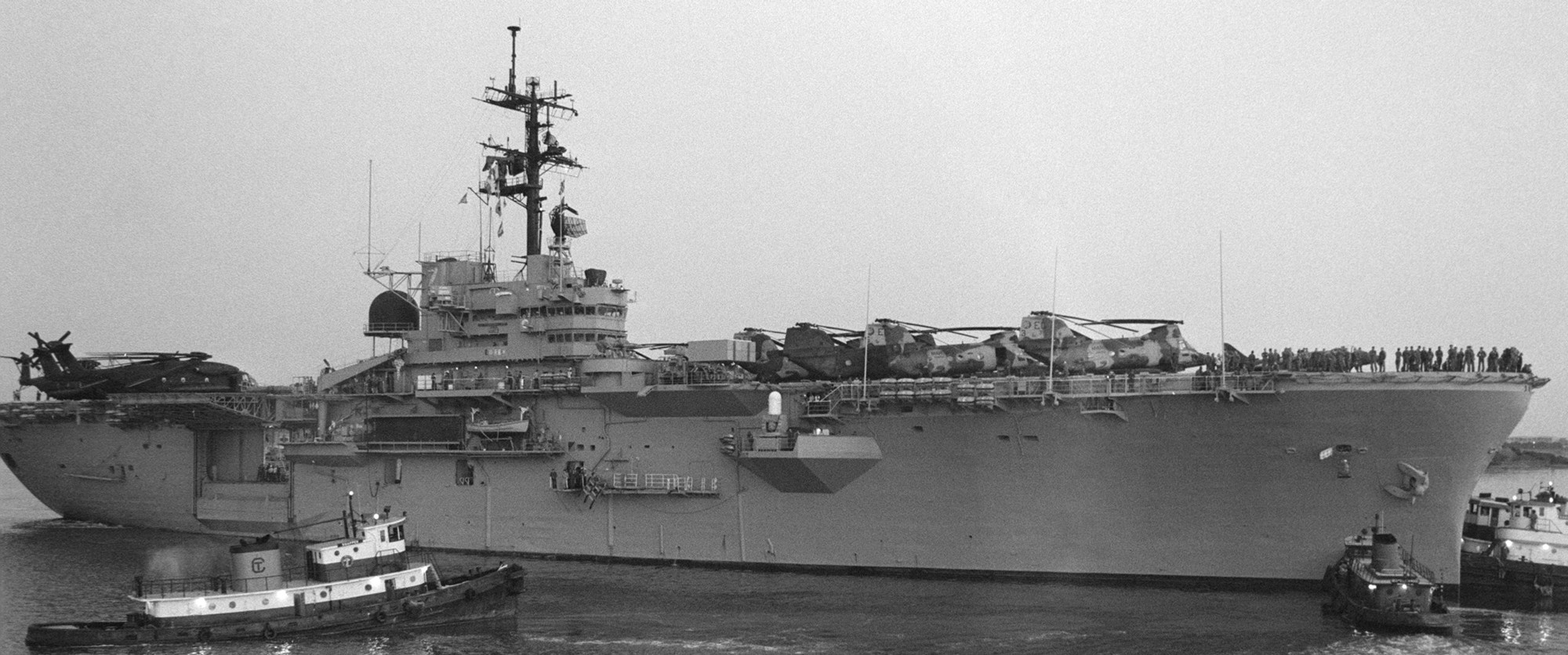 departing Morehead City, North Carolina for Exercise Solid Shield - May 1987 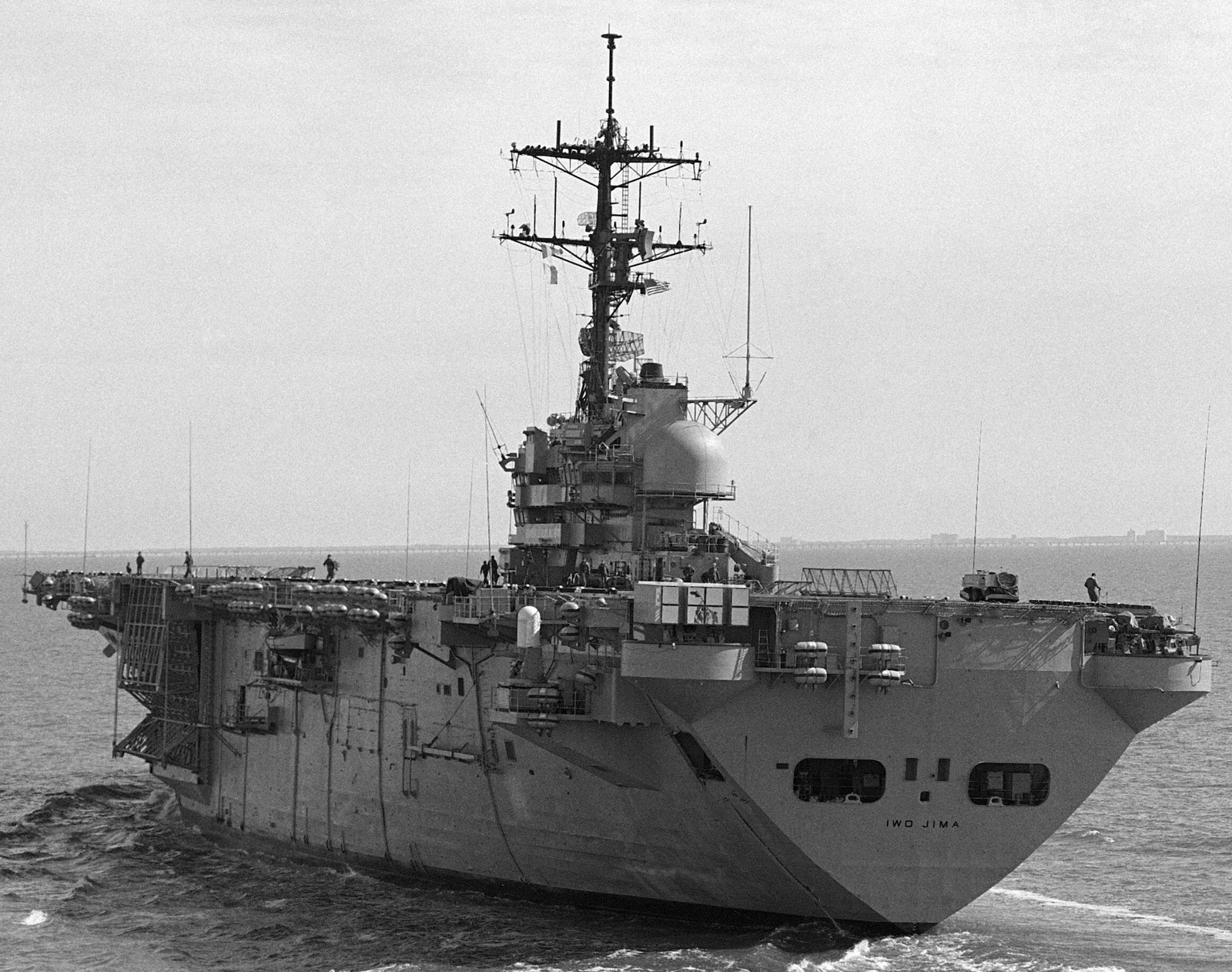 February 1987 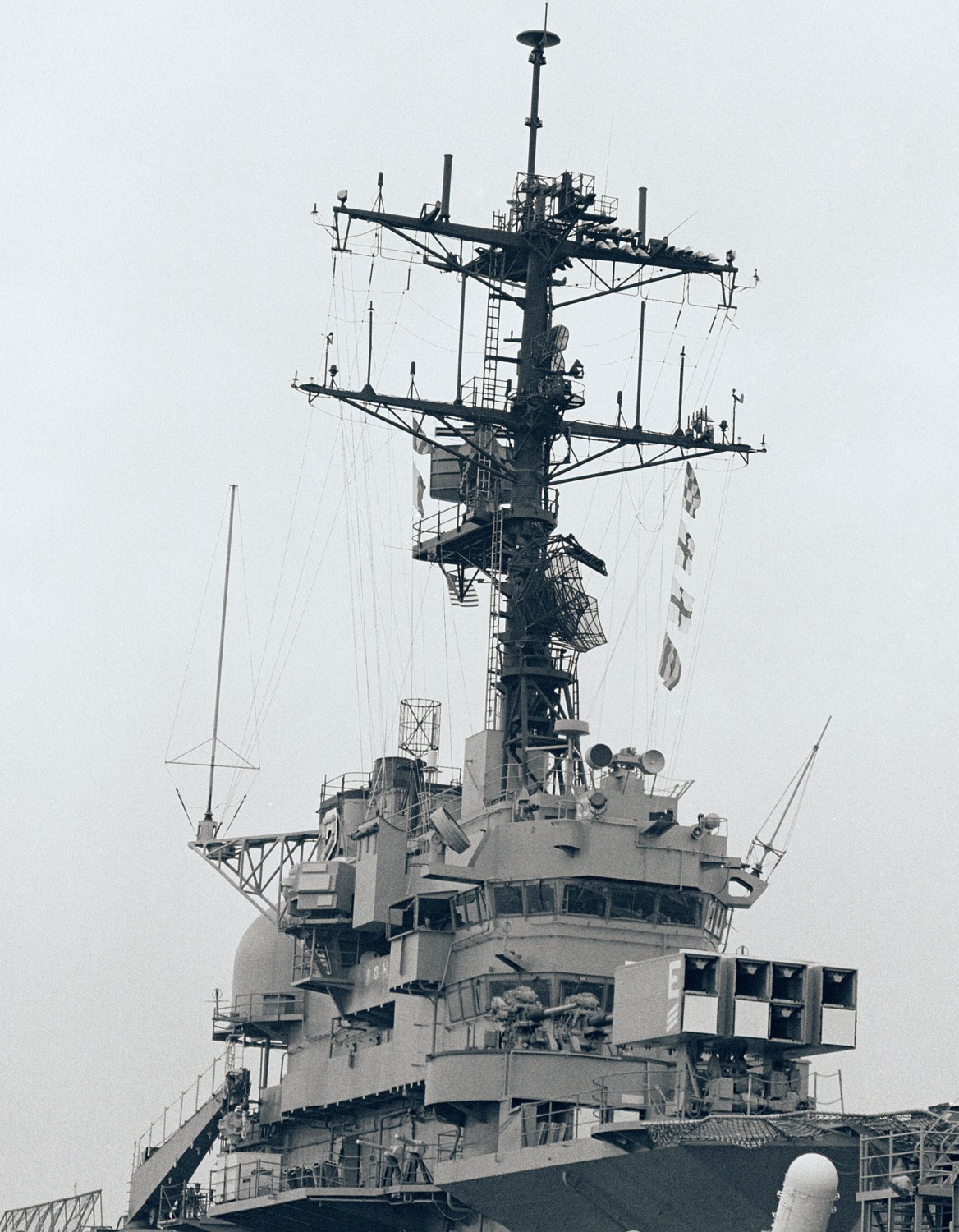 February 1987 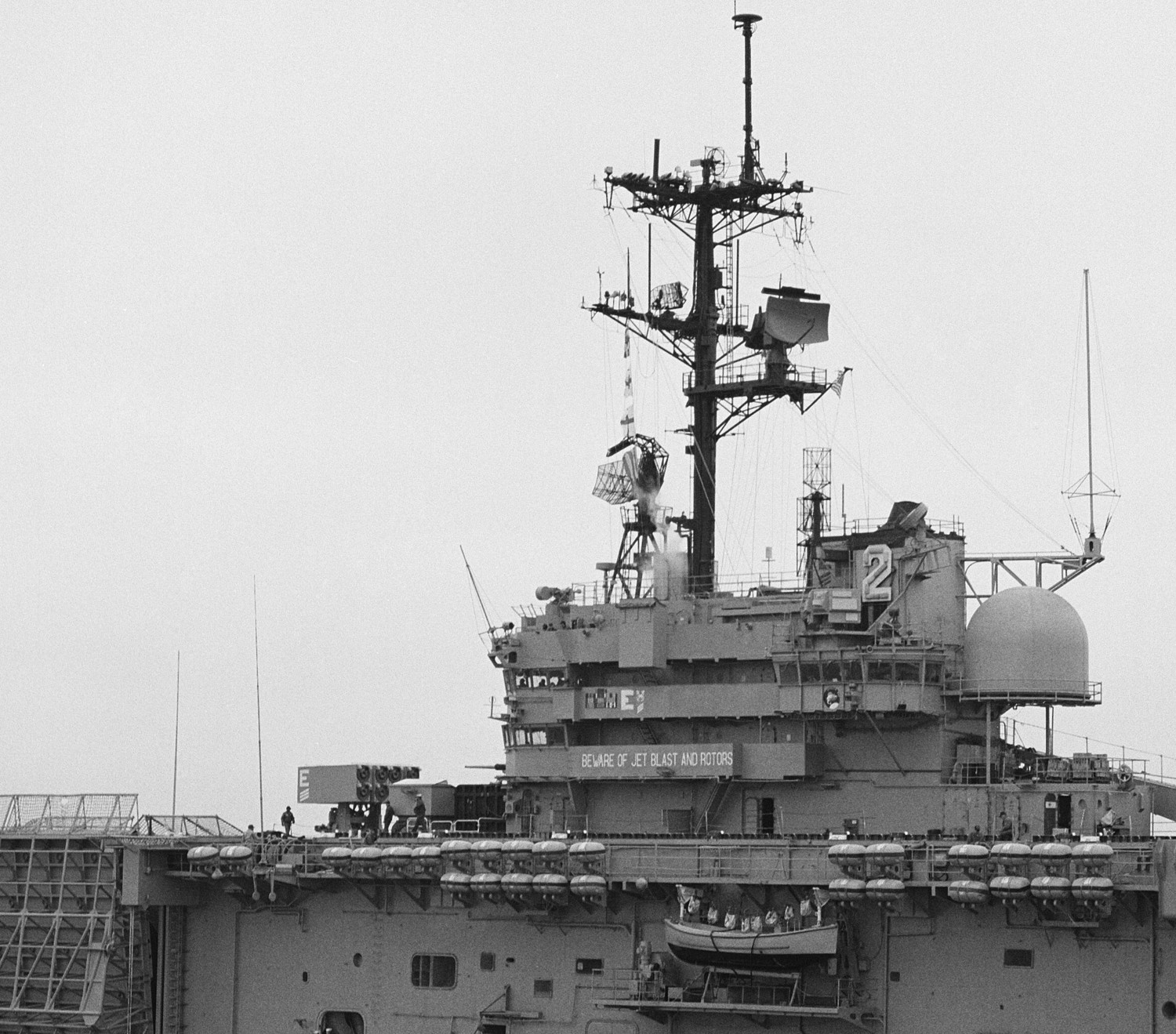 February 1987 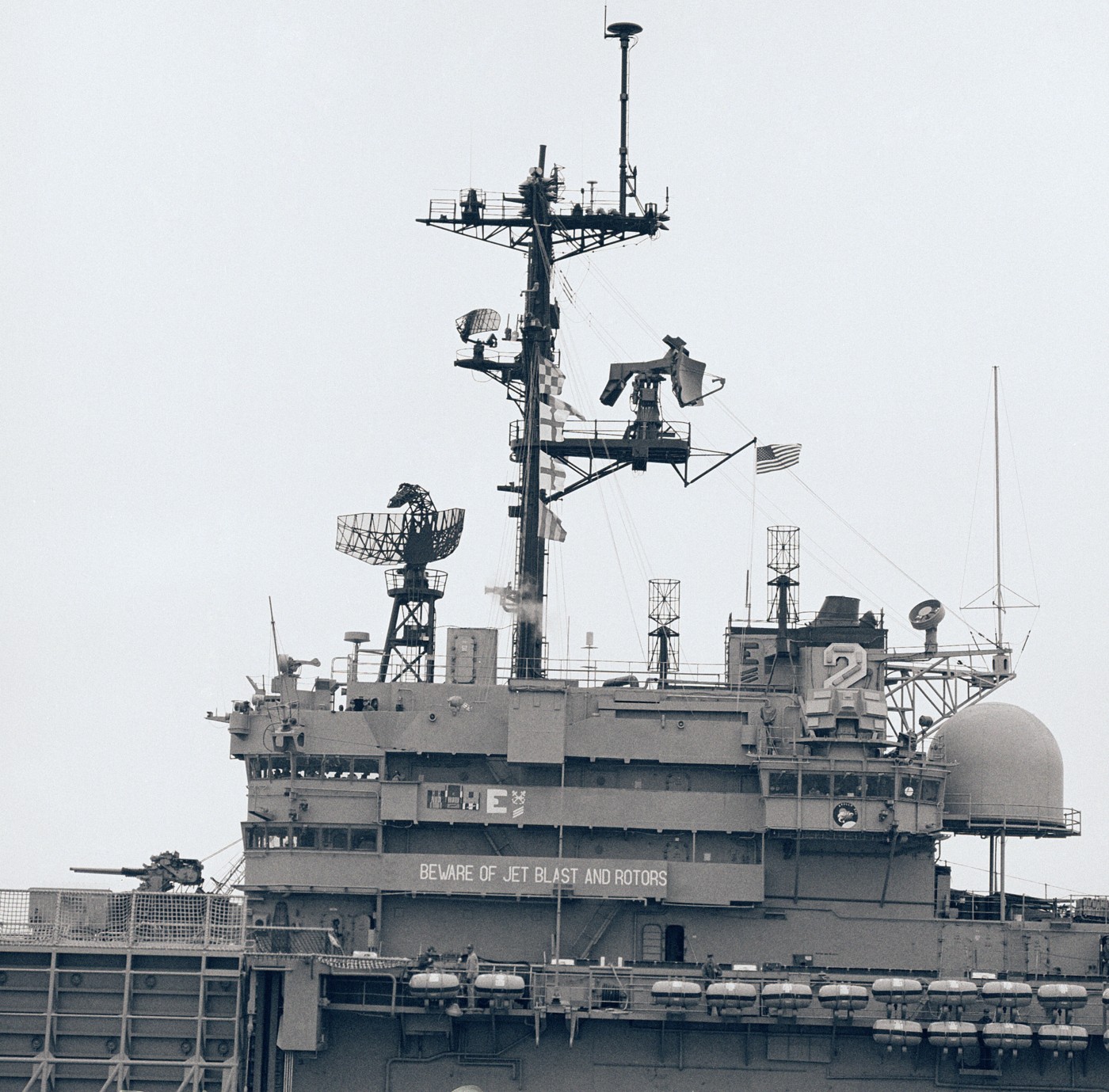 February 1987 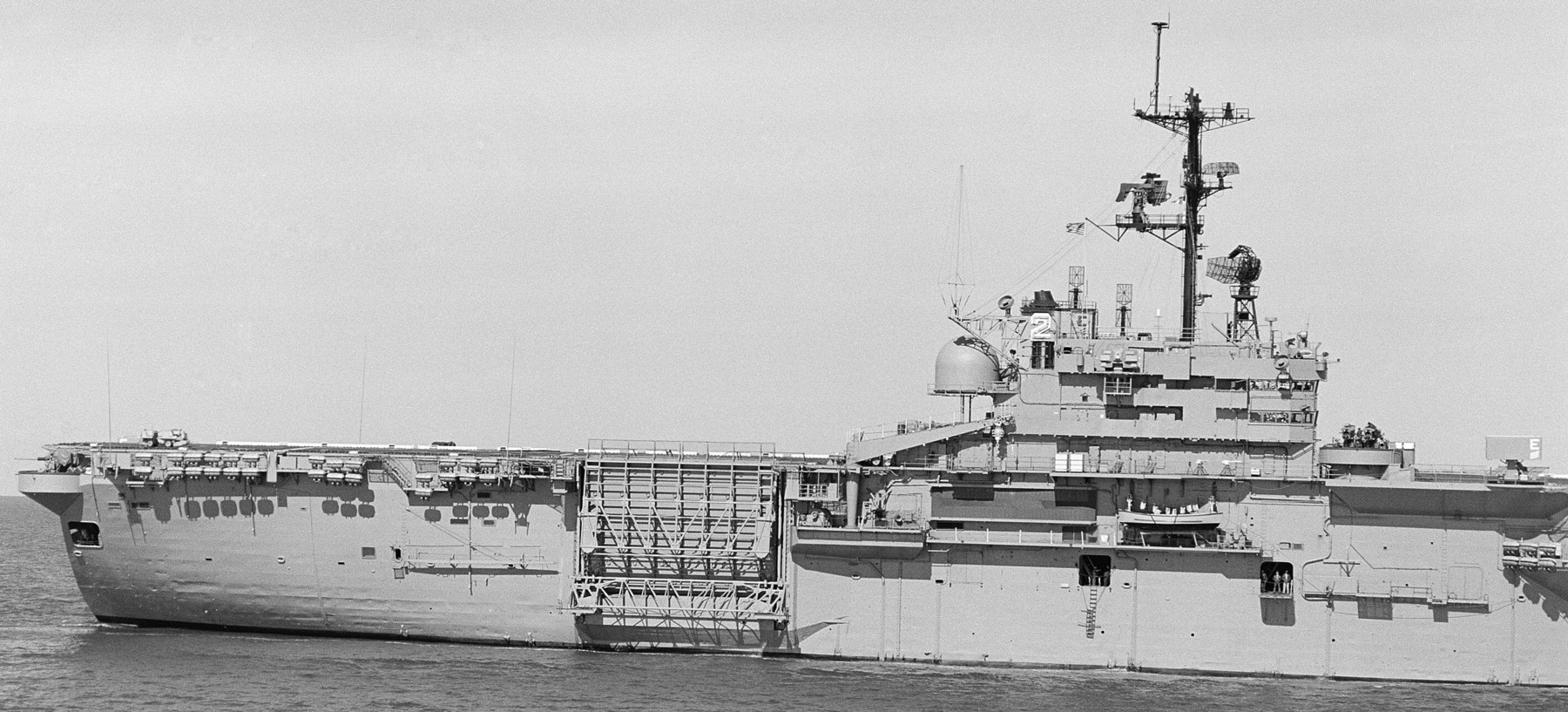 February 1987 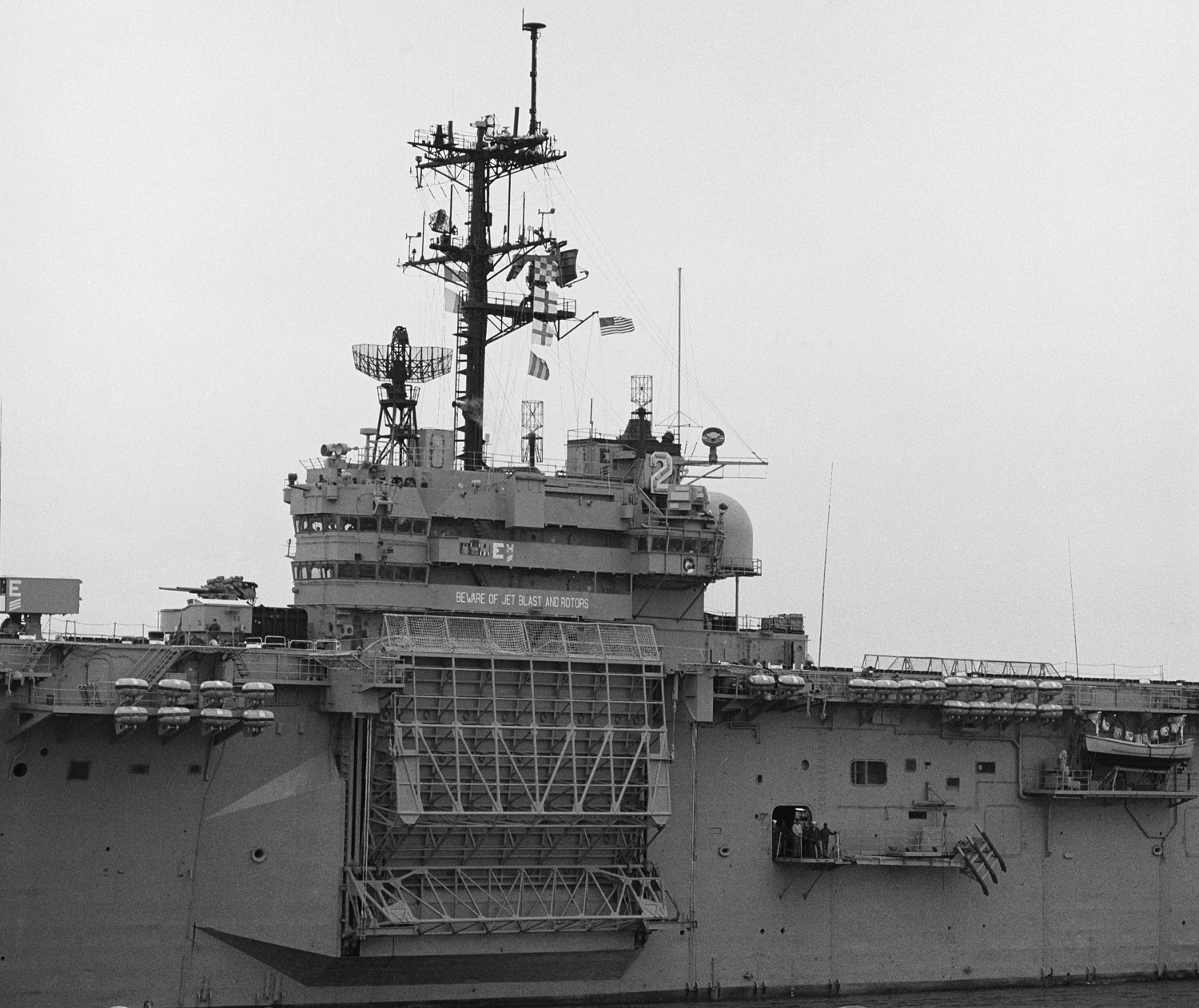 February 1987 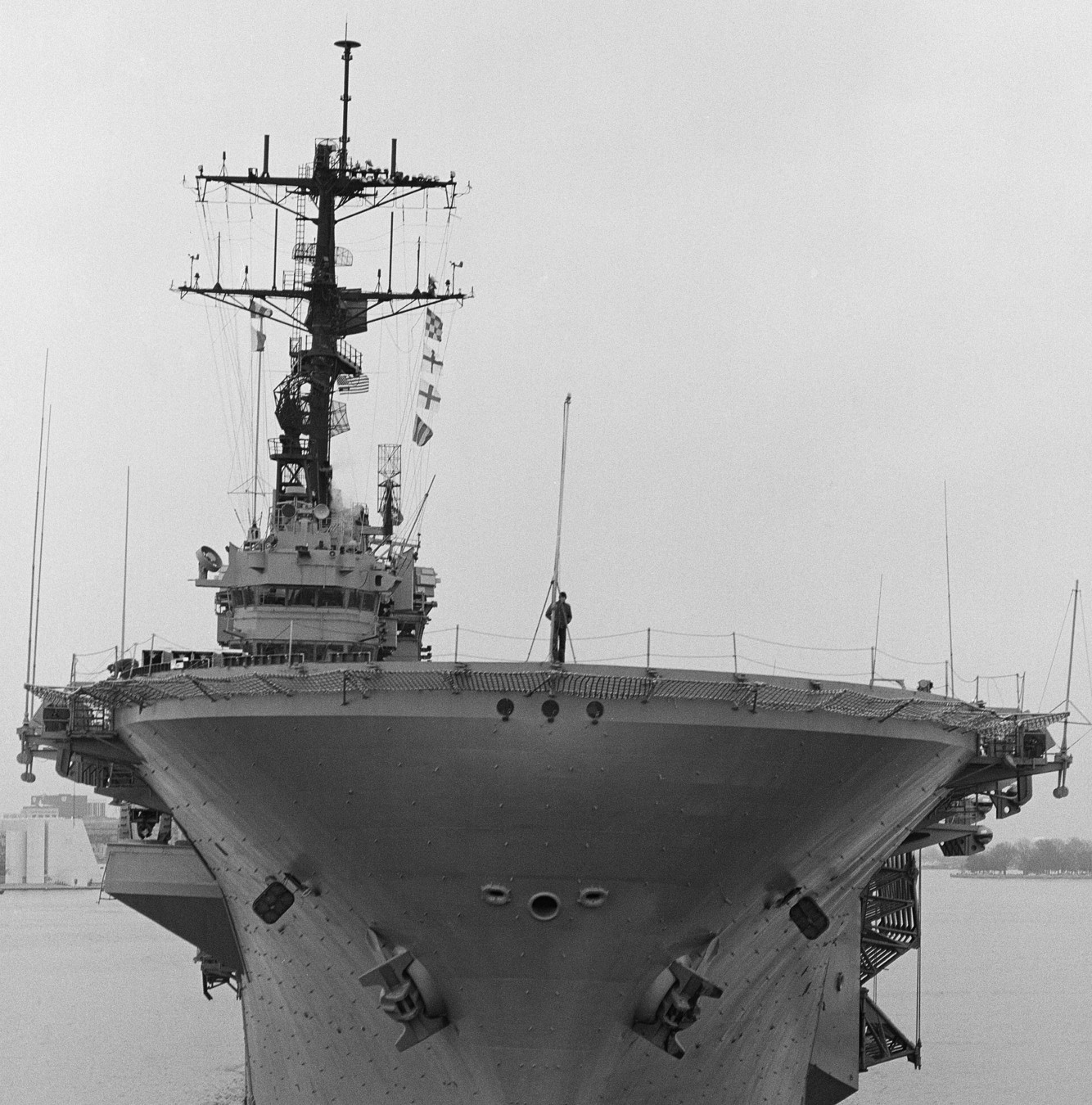 February 1987 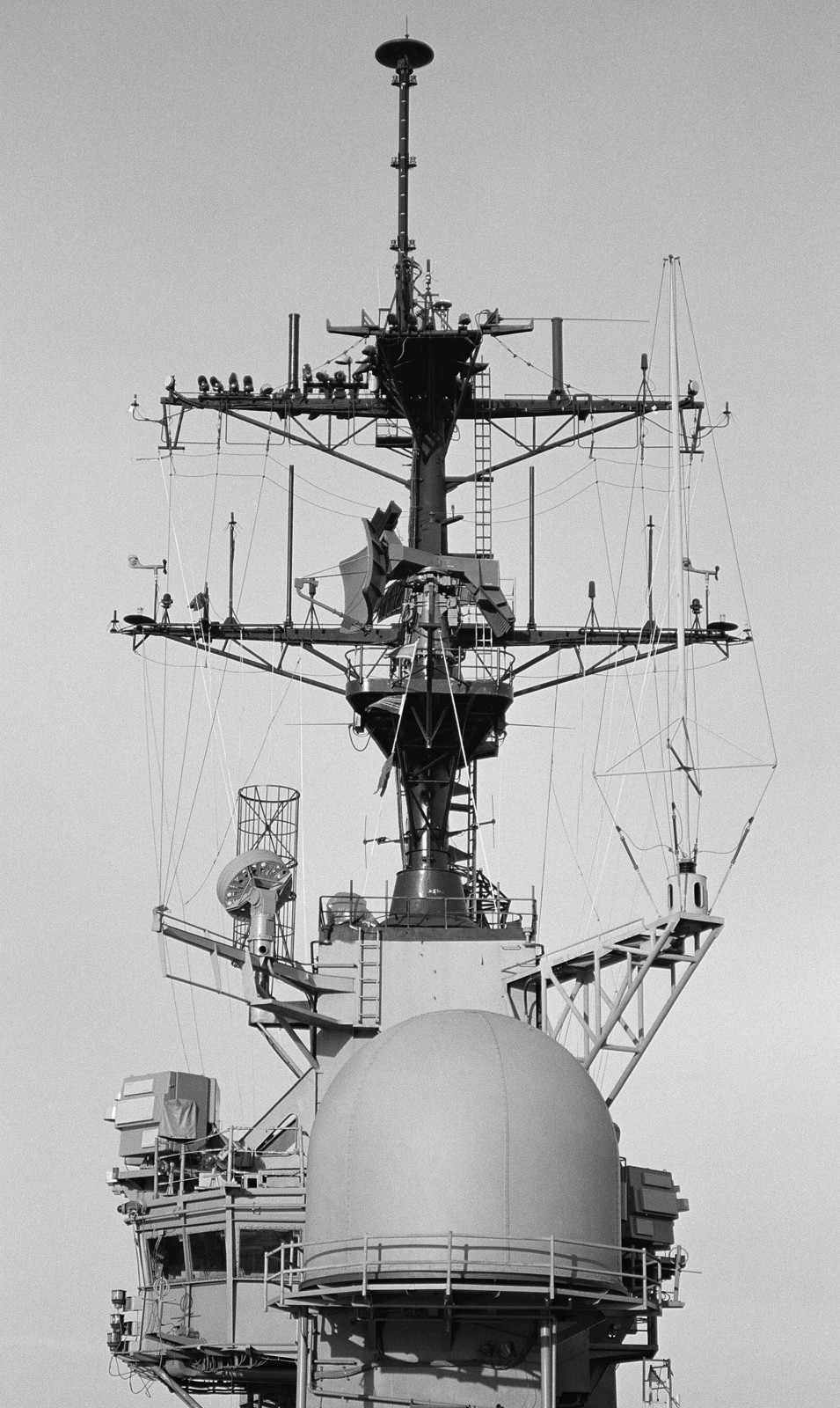 February 1987 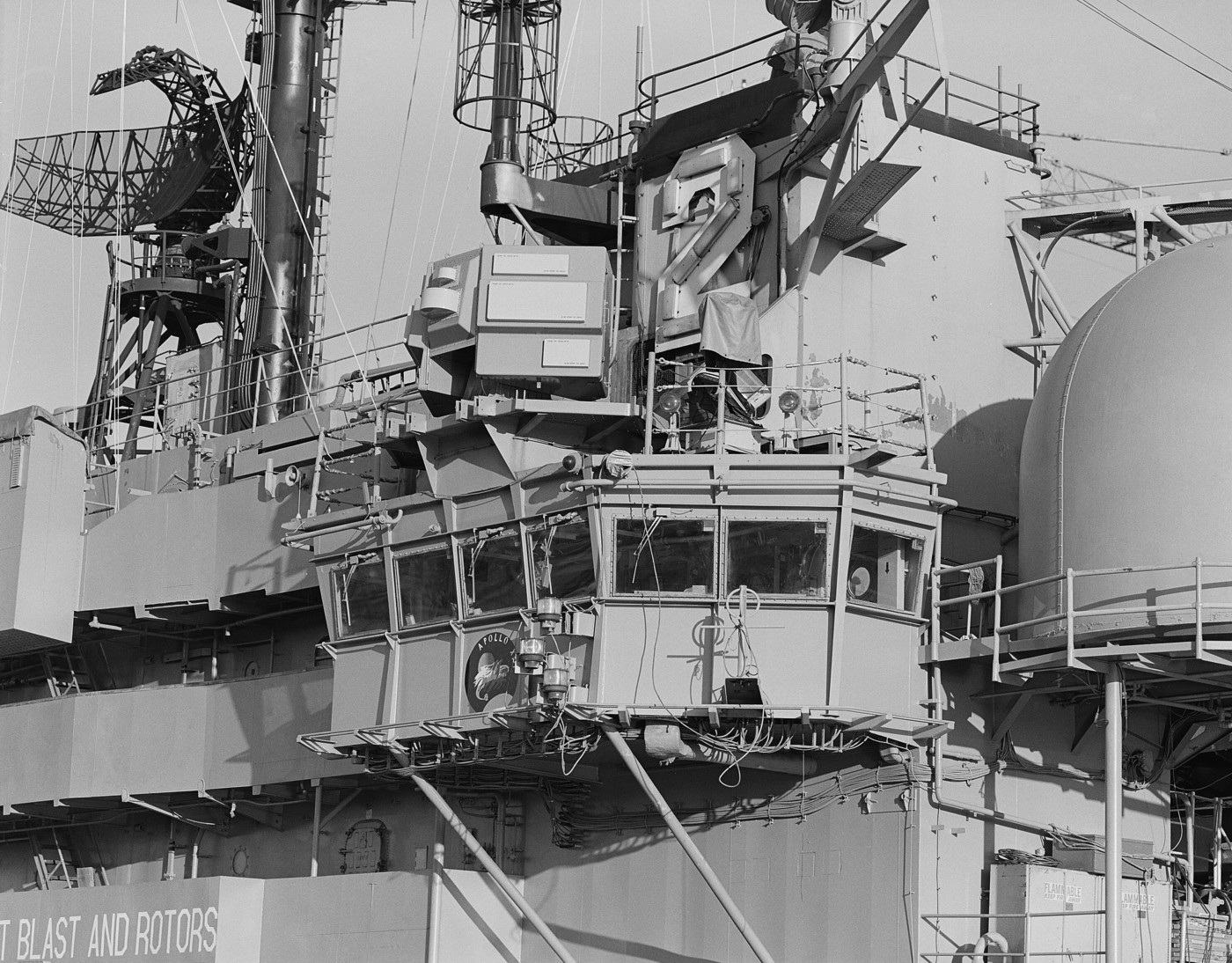 February 1987 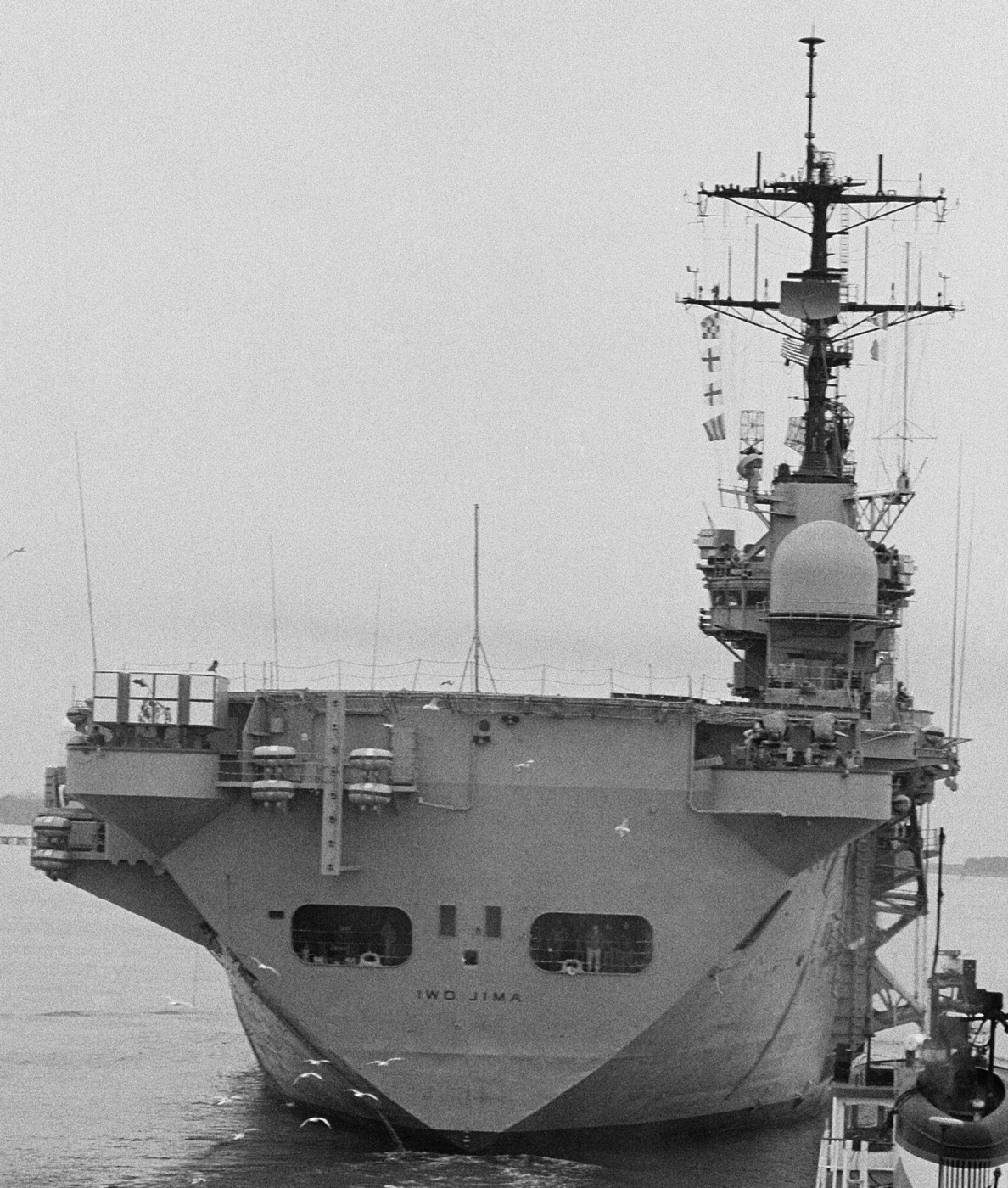 February 1987 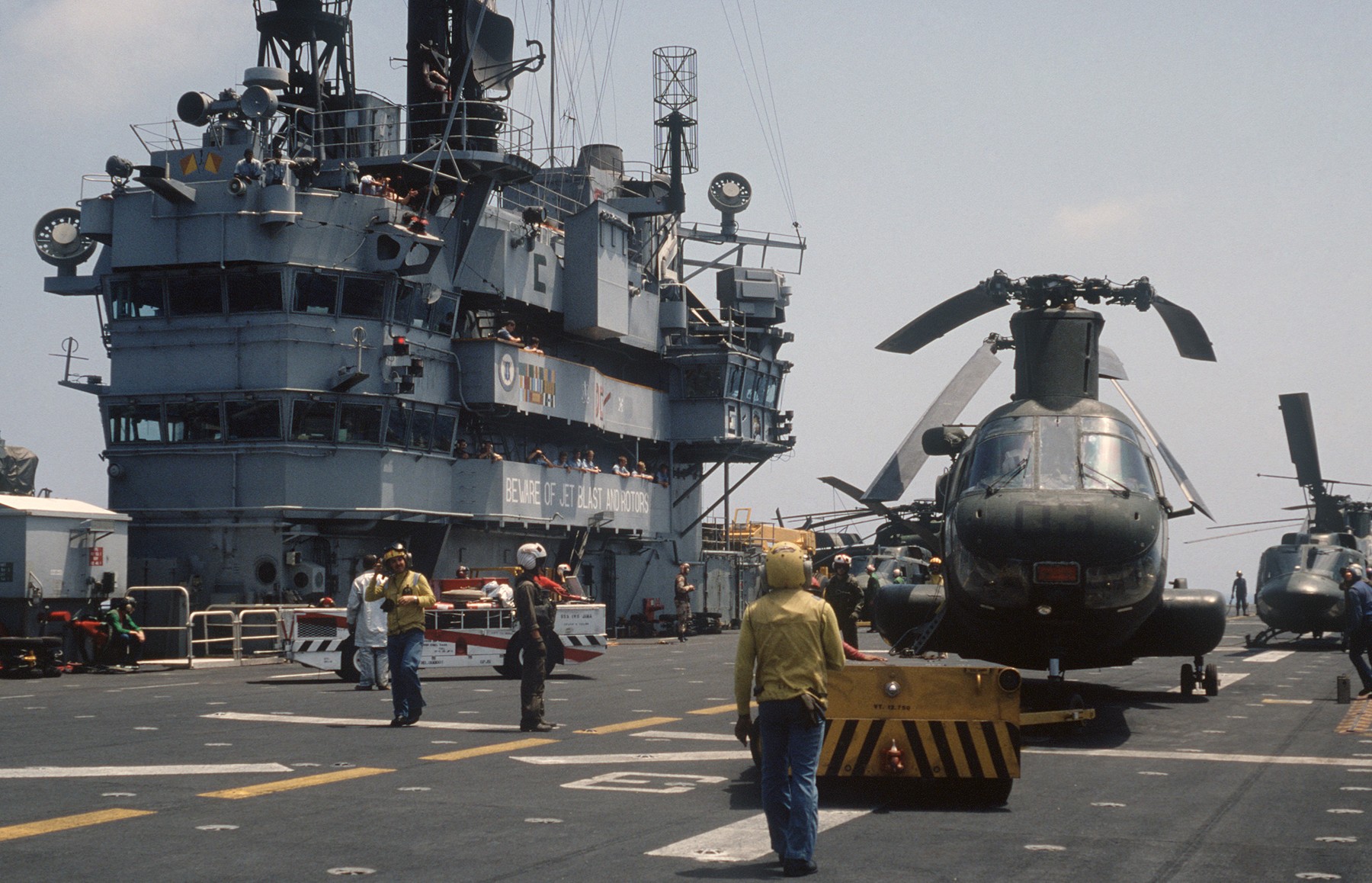 with HMM-261(C) embarked - during Exercise Bright Star - off Egypt - 1985 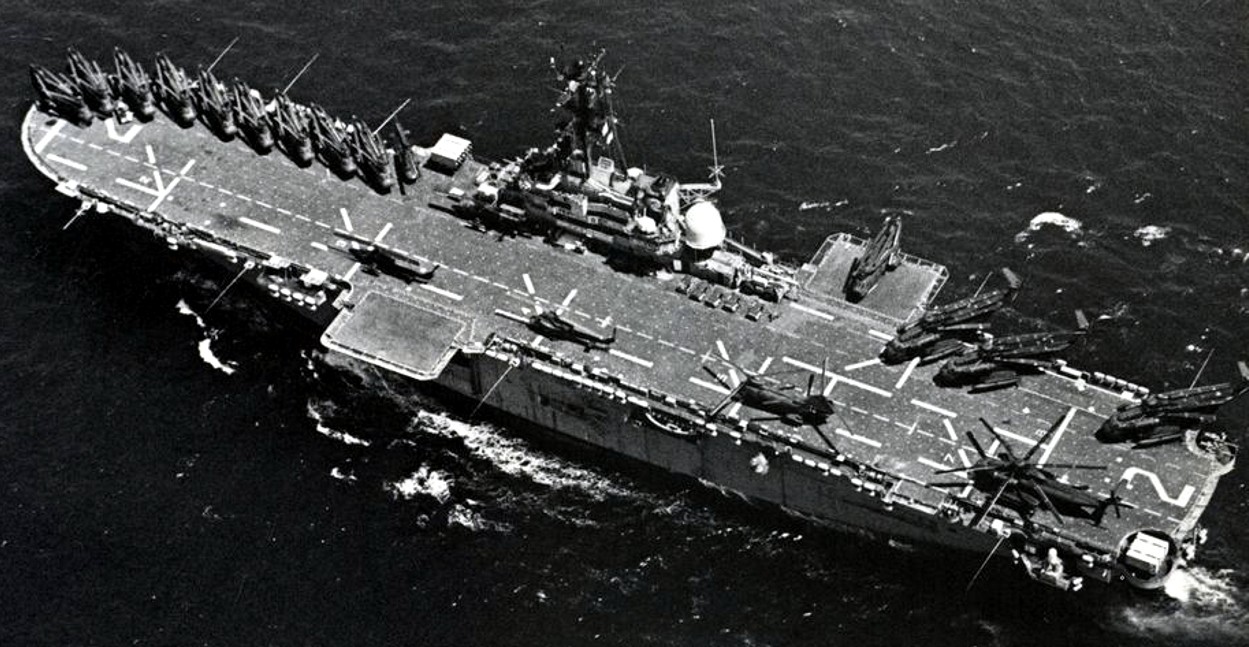 1985 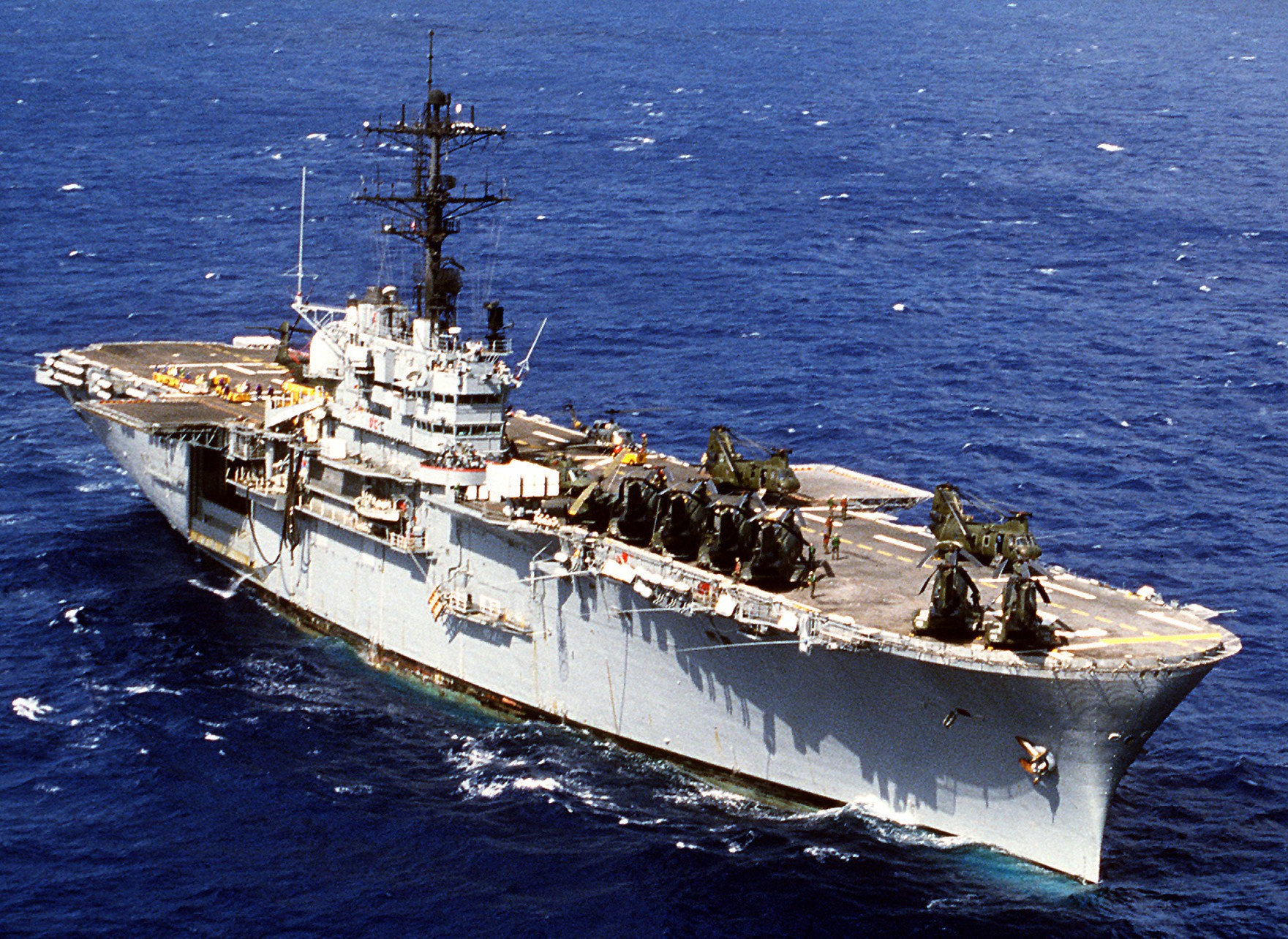 during Operation Ocean Venture - off Puerto Rico - April 1984 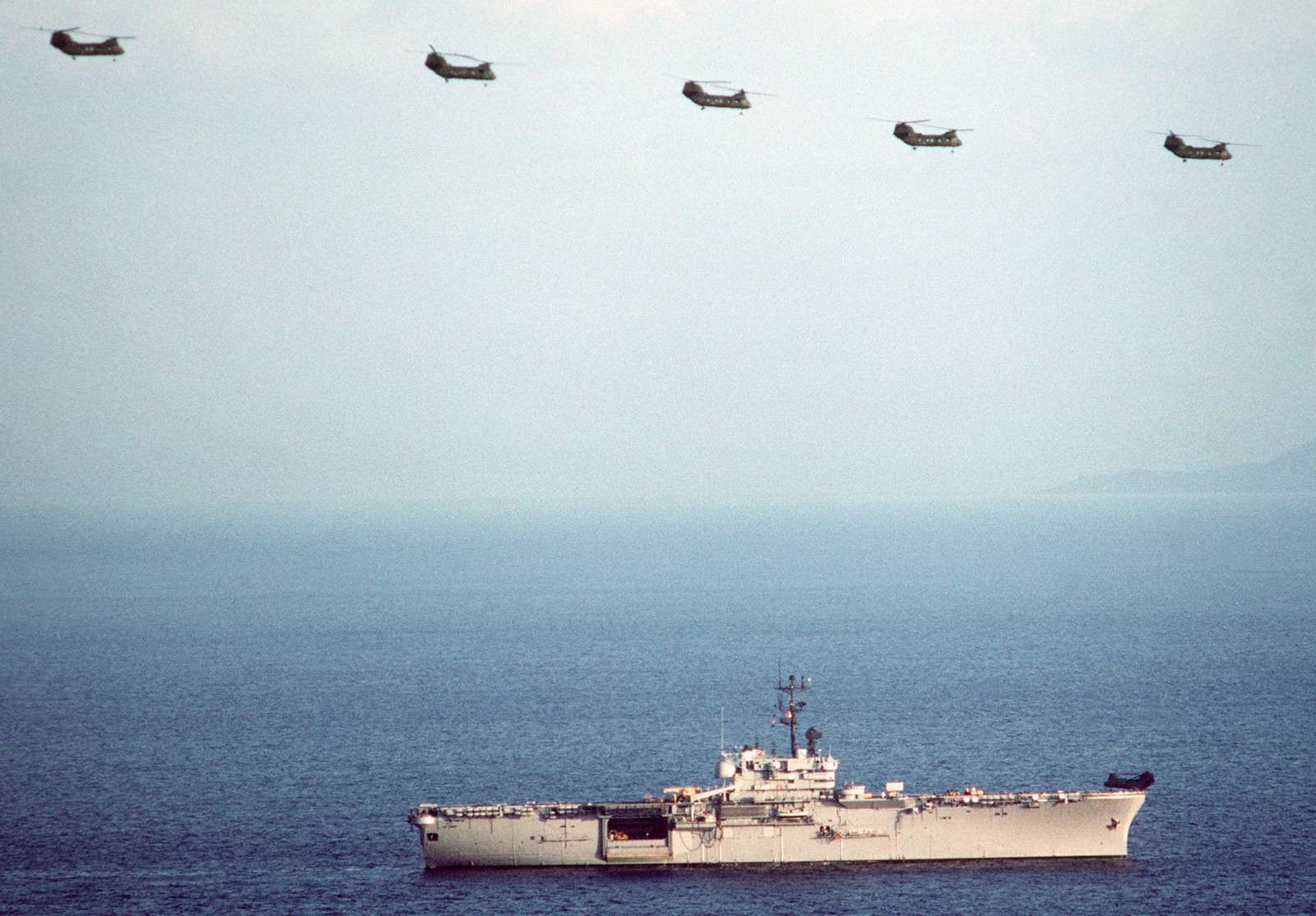 during Operation Ocean Venture - off Puerto Rico - April 1984 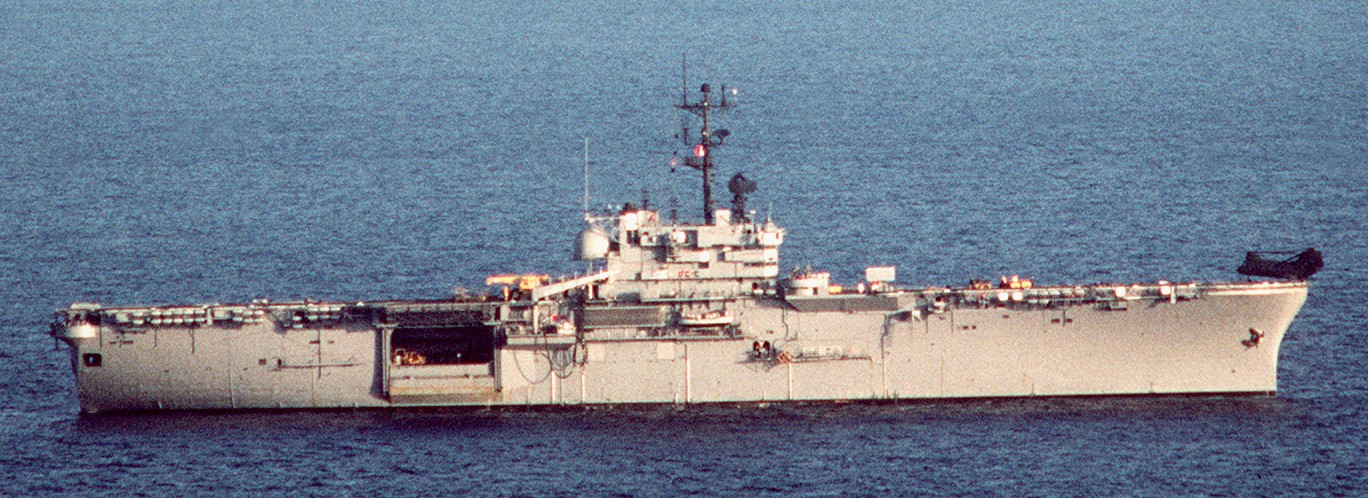 cutout 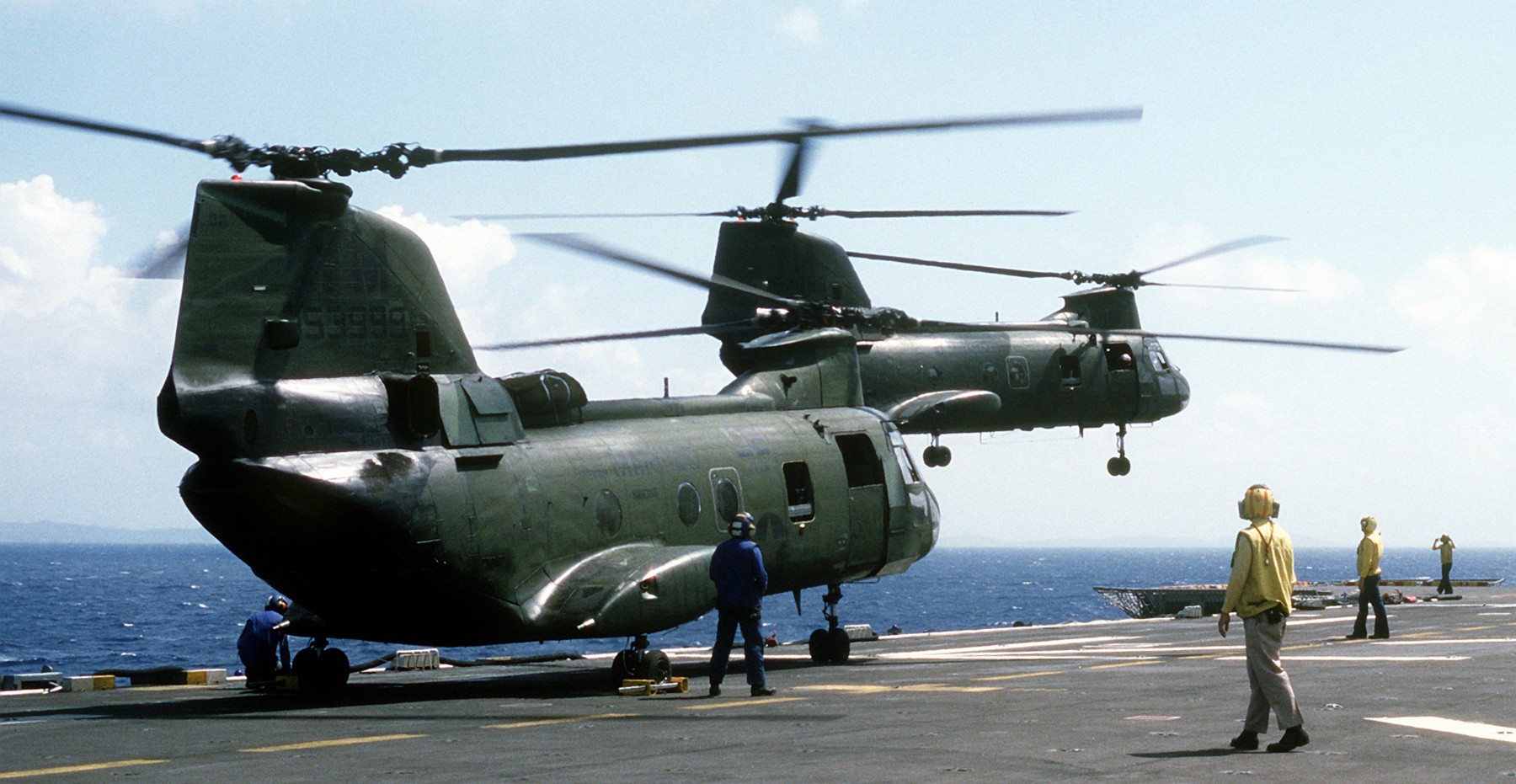 CH-46 Sea Knights of HMM-365 during Operation Ocean Venture - off Puerto Rico - April 1984 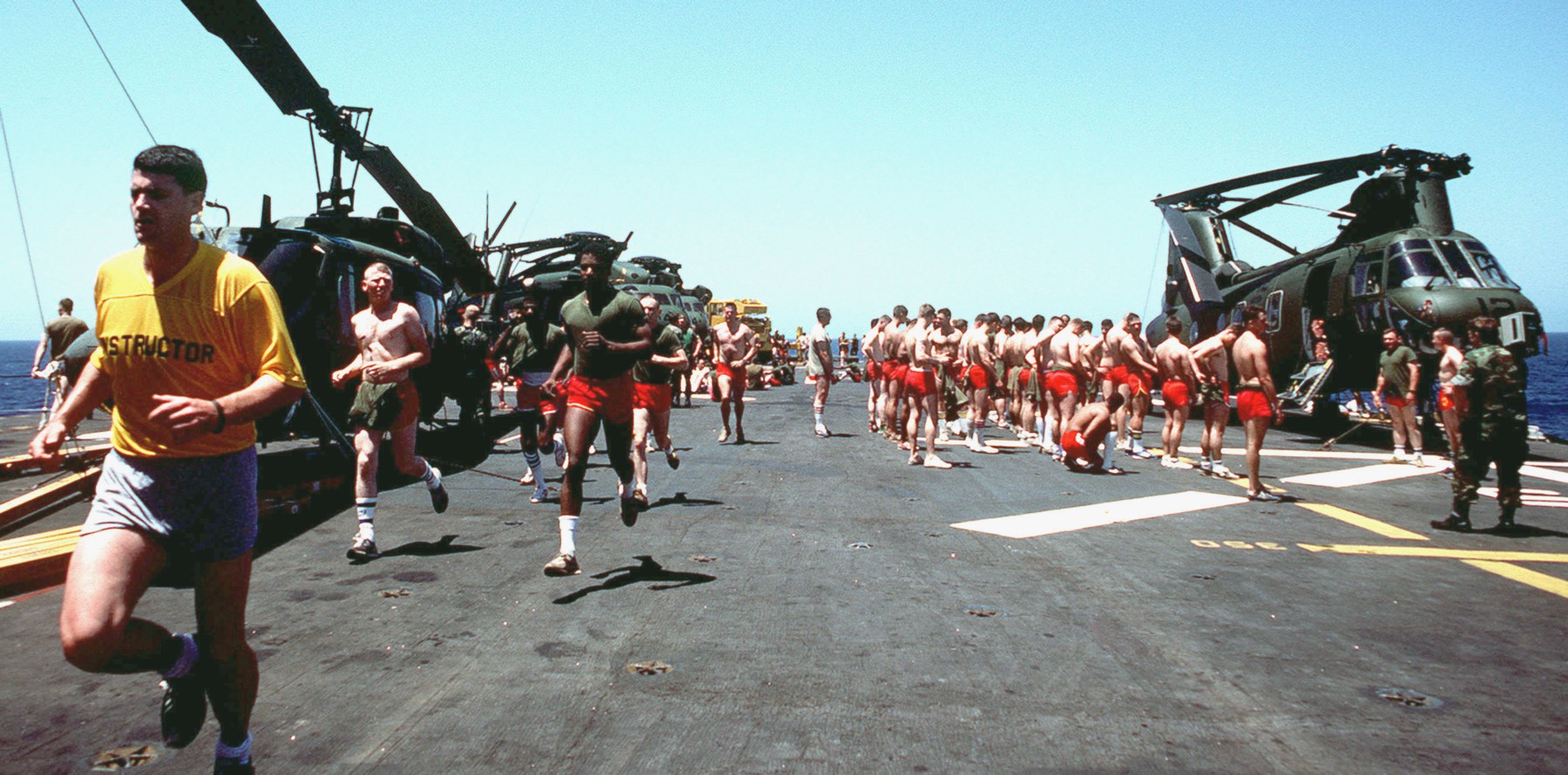 during Operation Ocean Venture - off Puerto Rico - April 1984 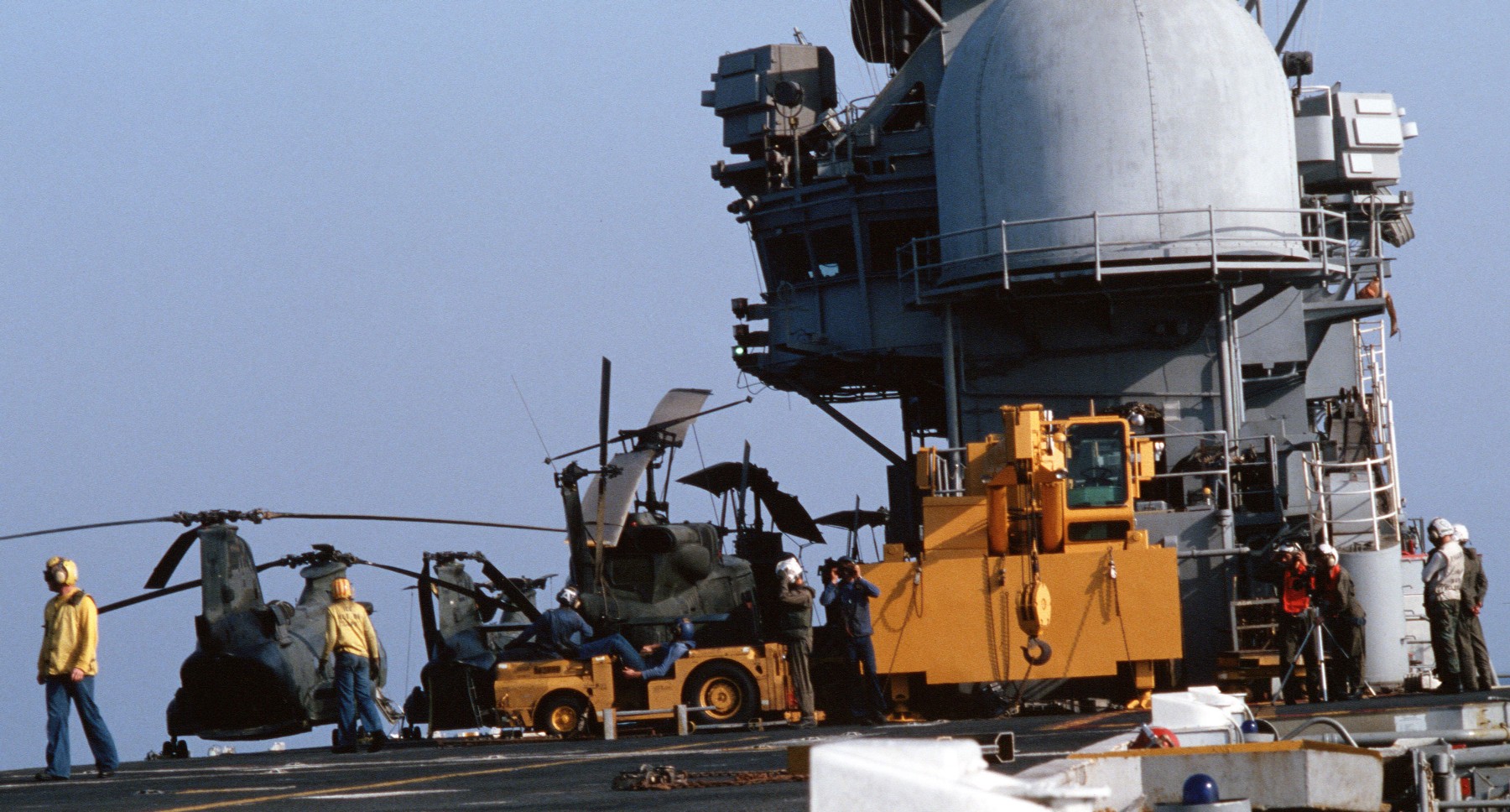 with HMM-261(C) embarked - Mediterranean Sea - 1984 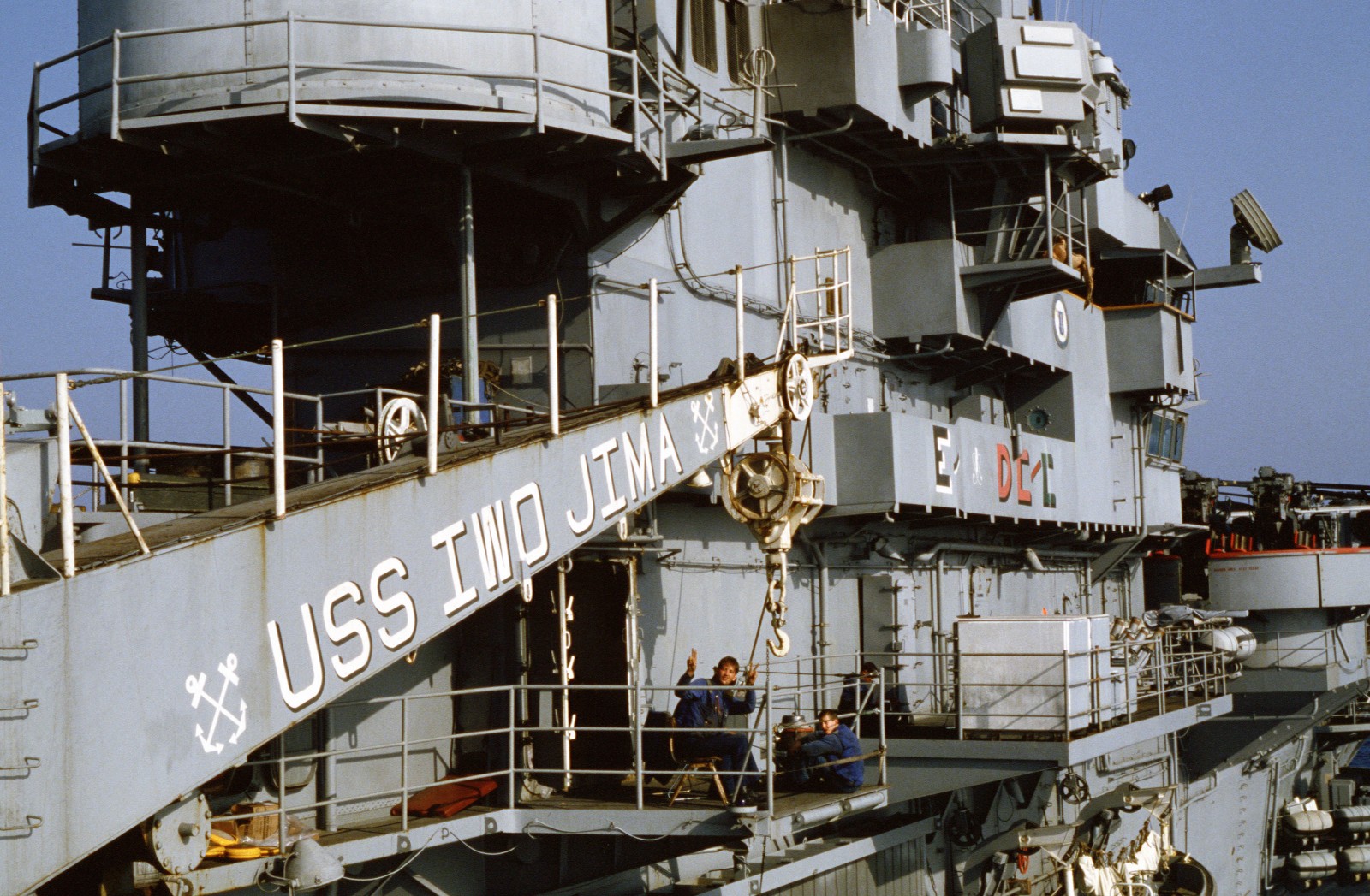 Mediterranean Sea - 1984 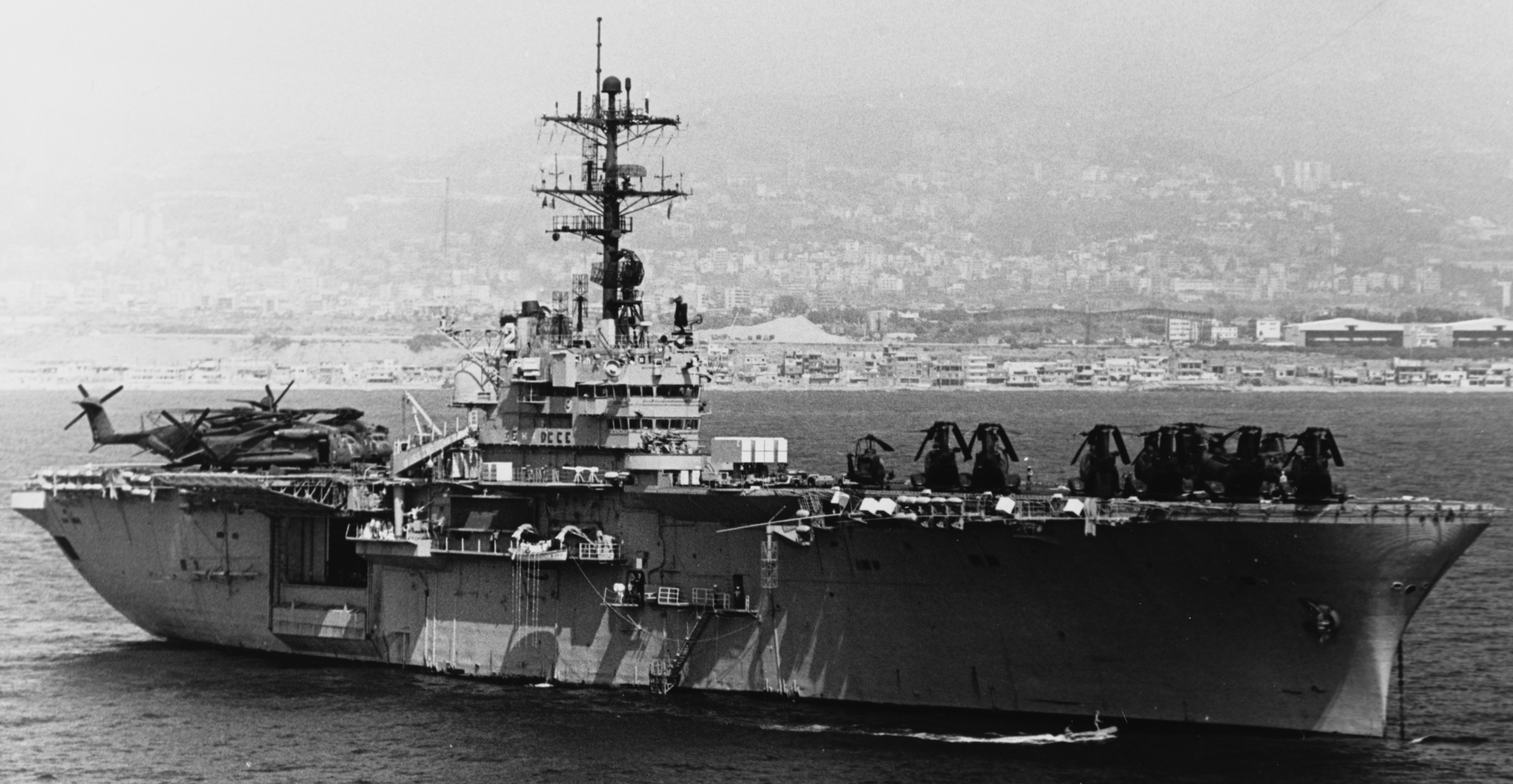 off Beirut, Lebanon - 1983 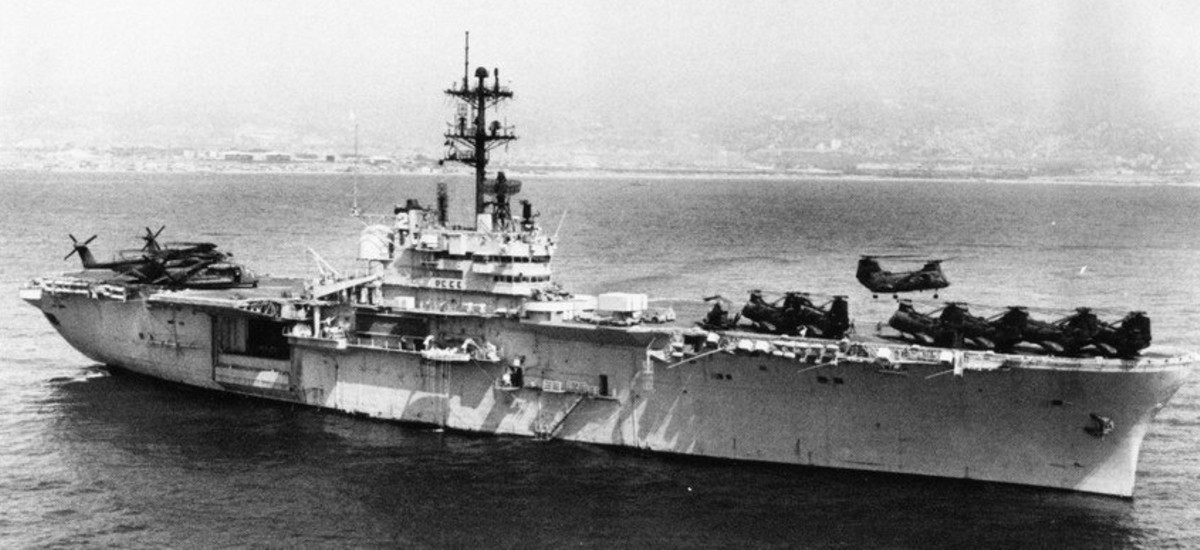 off Beirut, Lebanon - 1983 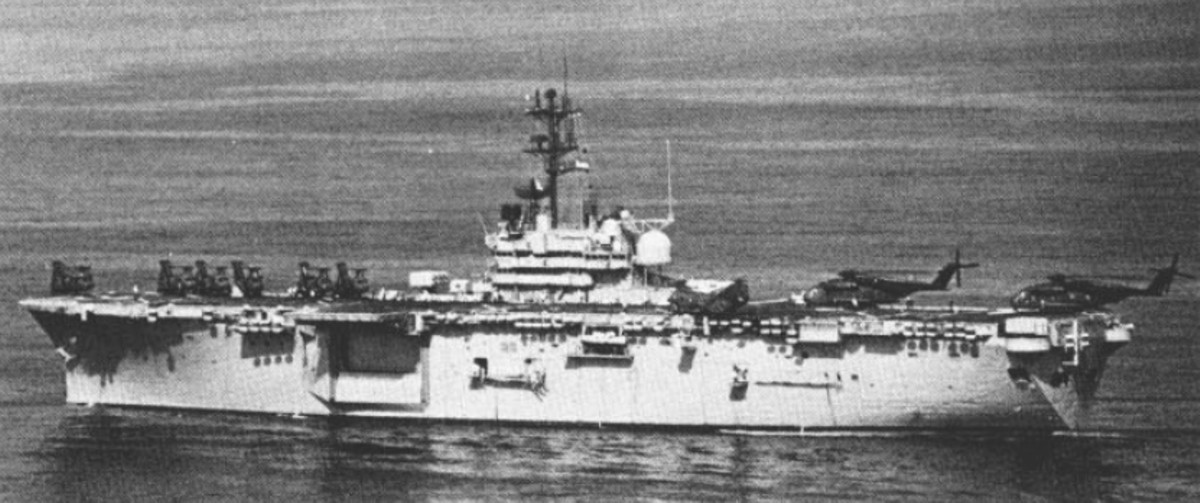 off Beirut, Lebanon - 1983 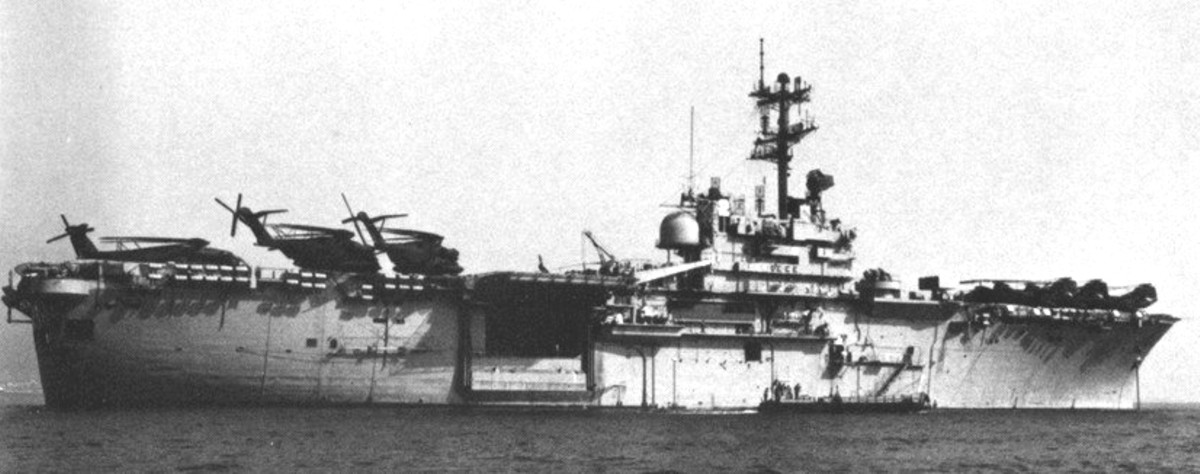 off Beirut, Lebanon - 1983 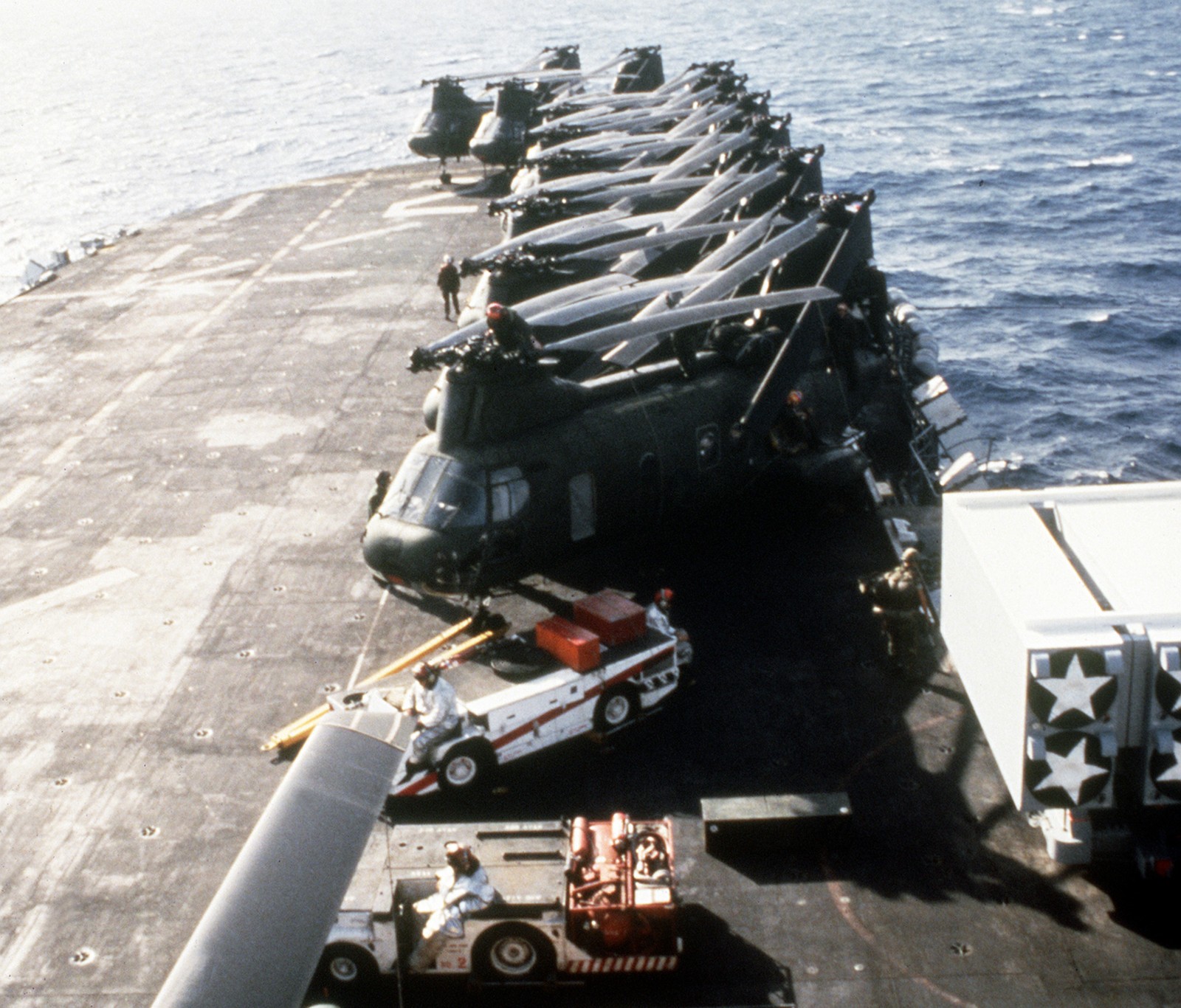 off Beirut, Lebanon - 1983 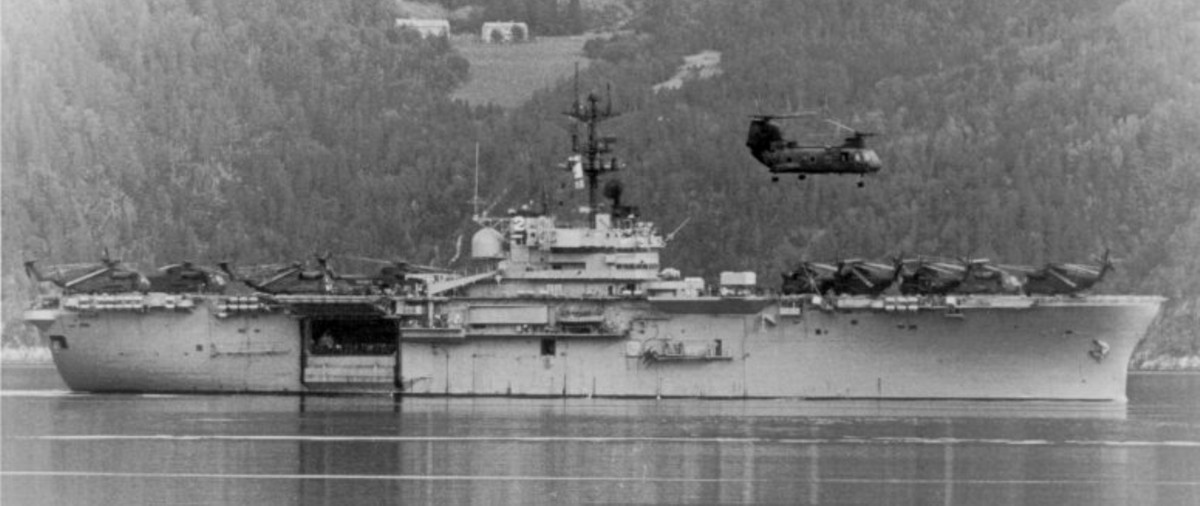 during NATO Exercise Team Work 80 - North Atlantic - September 1980 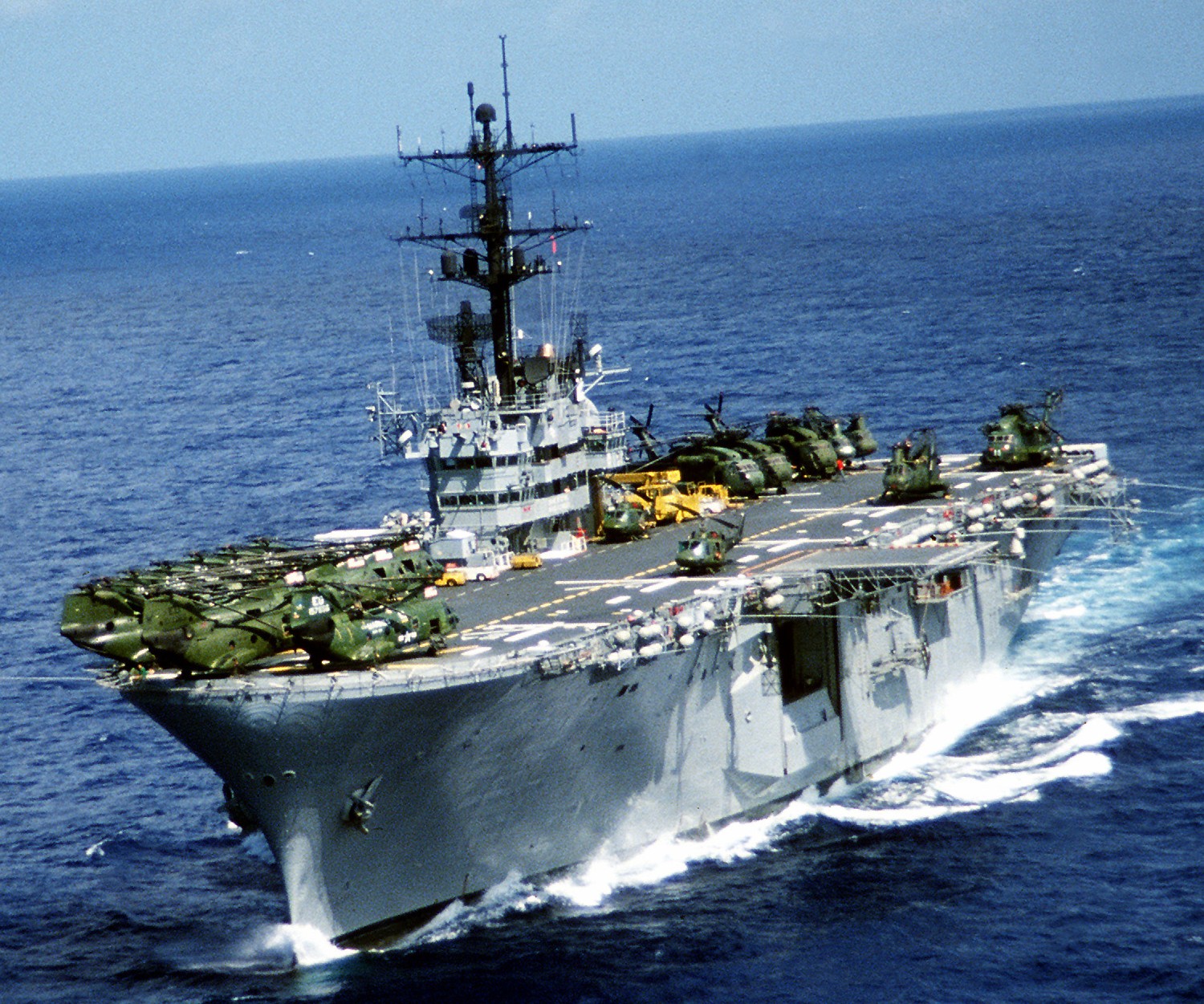 with HMM-263(C) embarked - 1979 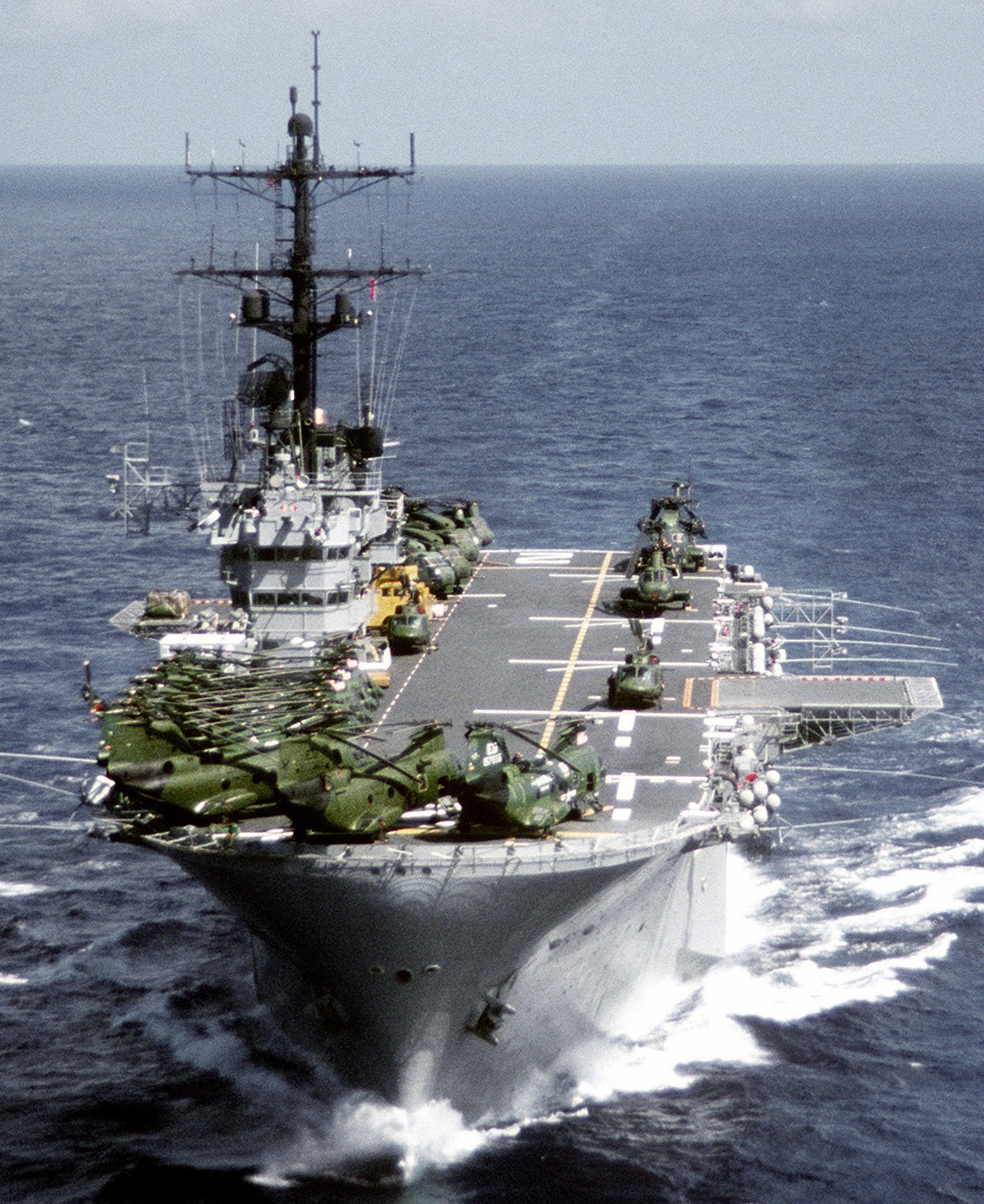 with HMM-263(C) embarked - 1979 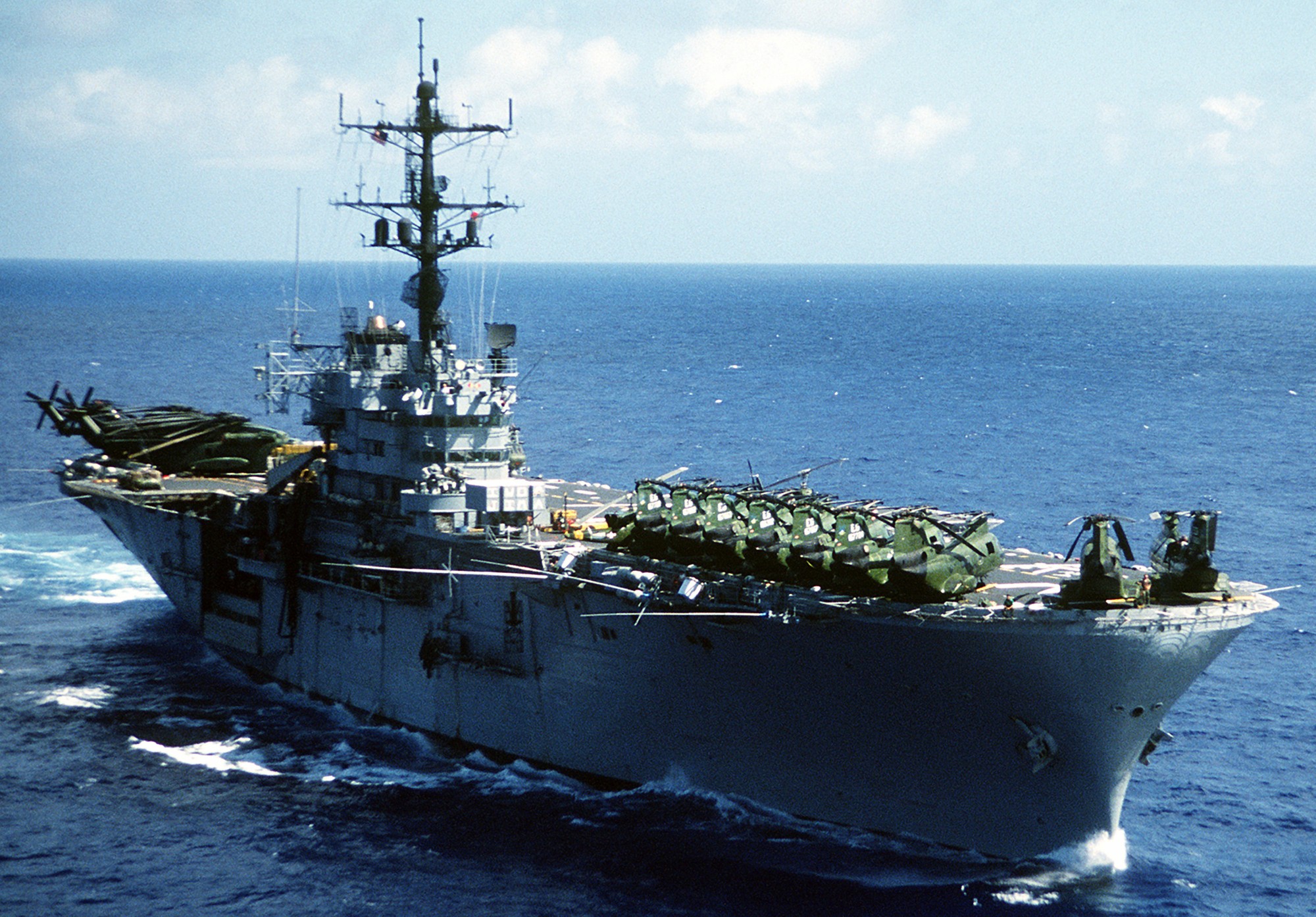 with HMM-263(C) embarked - 1979 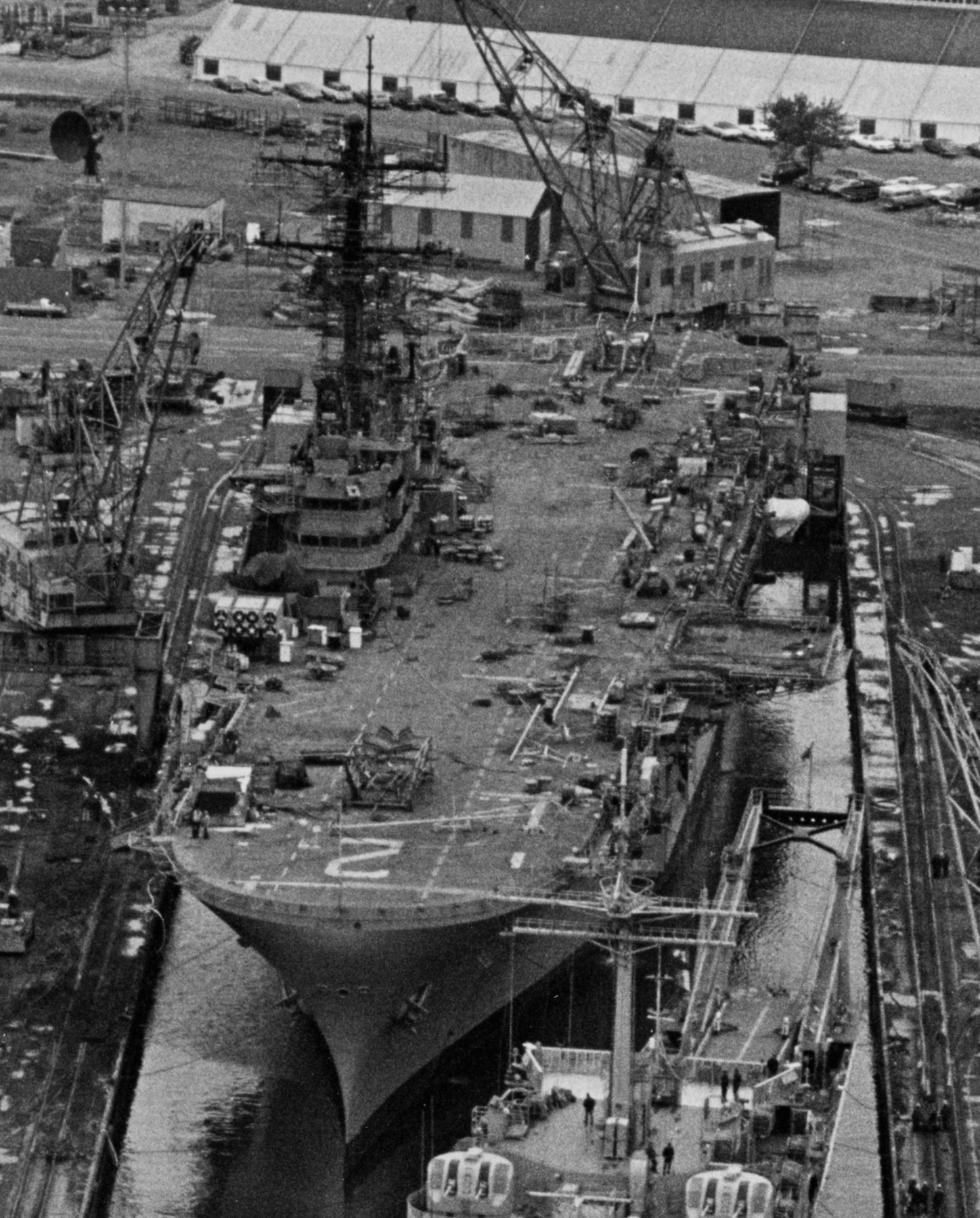 in dry dock at Norfolk Naval Shipyard, Virginia - October 1977 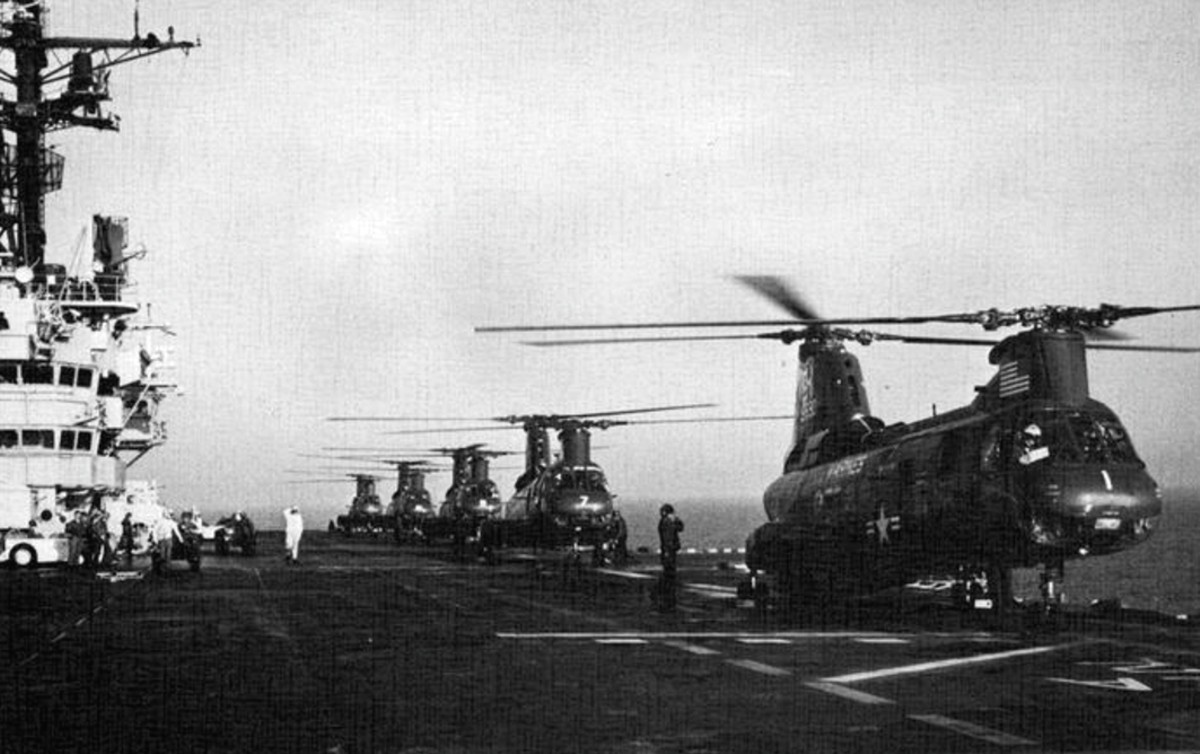 with HMM-264(C) embarked - 1975 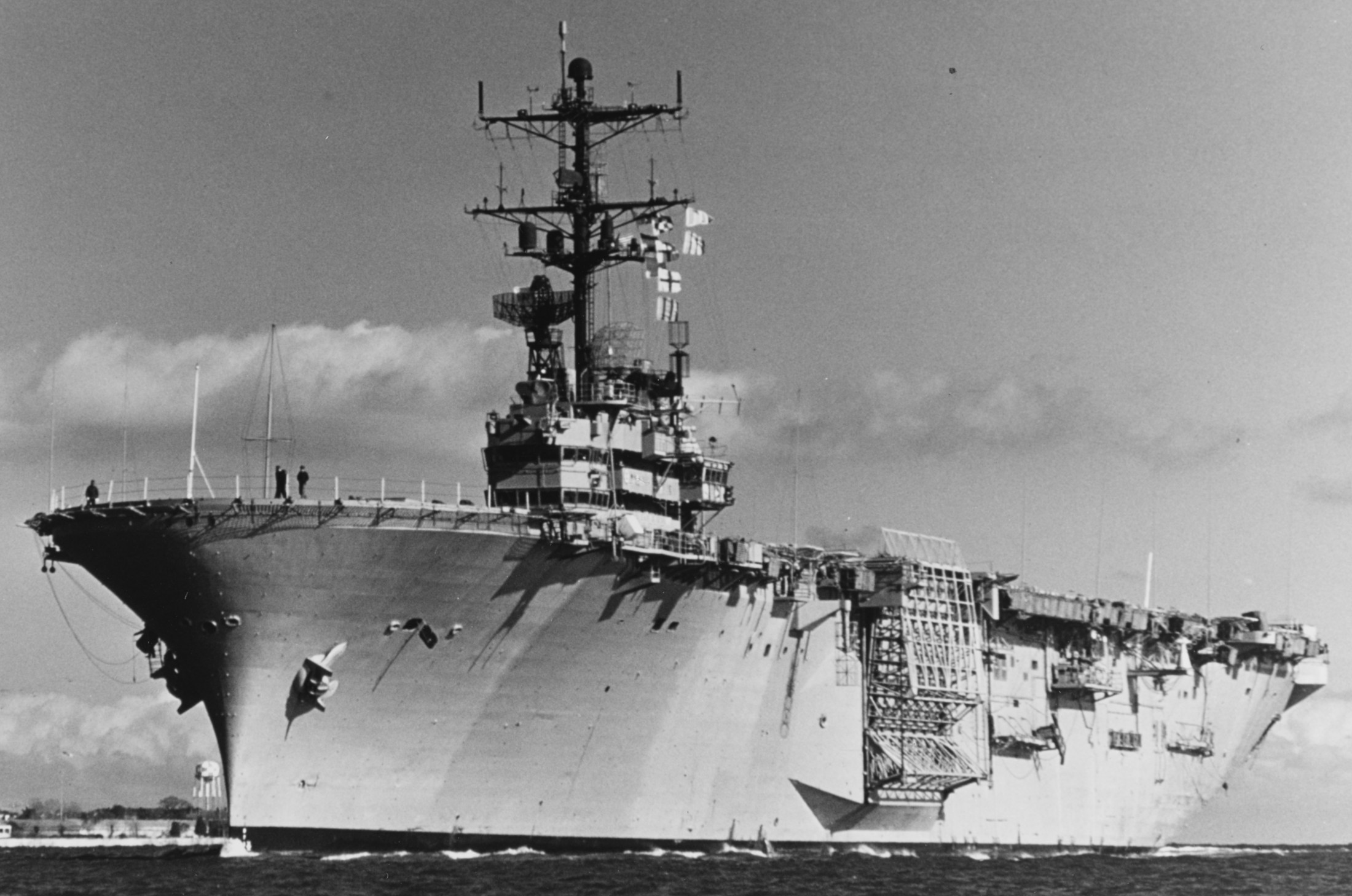 off Norfolk, Virginia - 1974 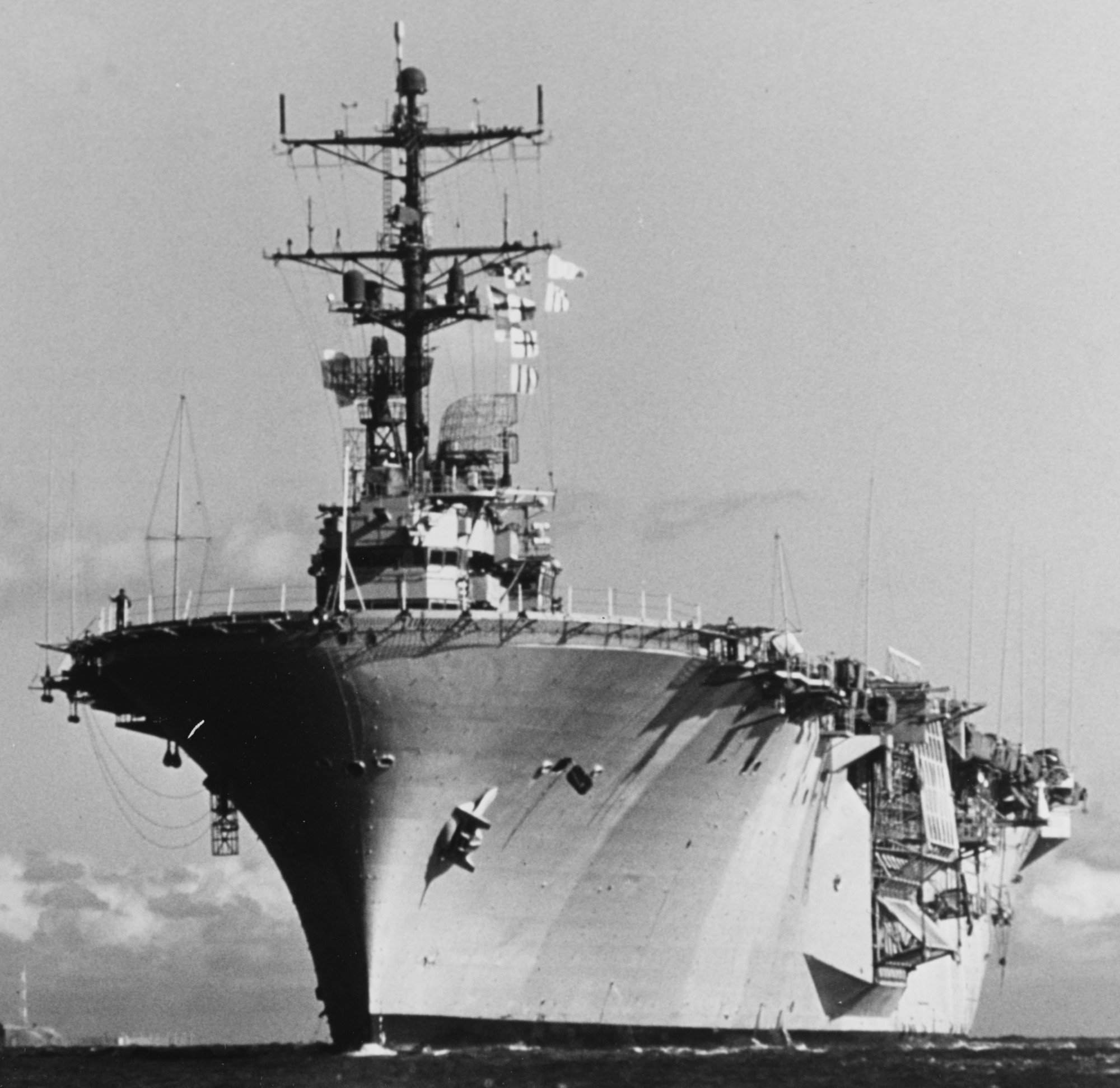 off Norfolk, Virginia - 1974 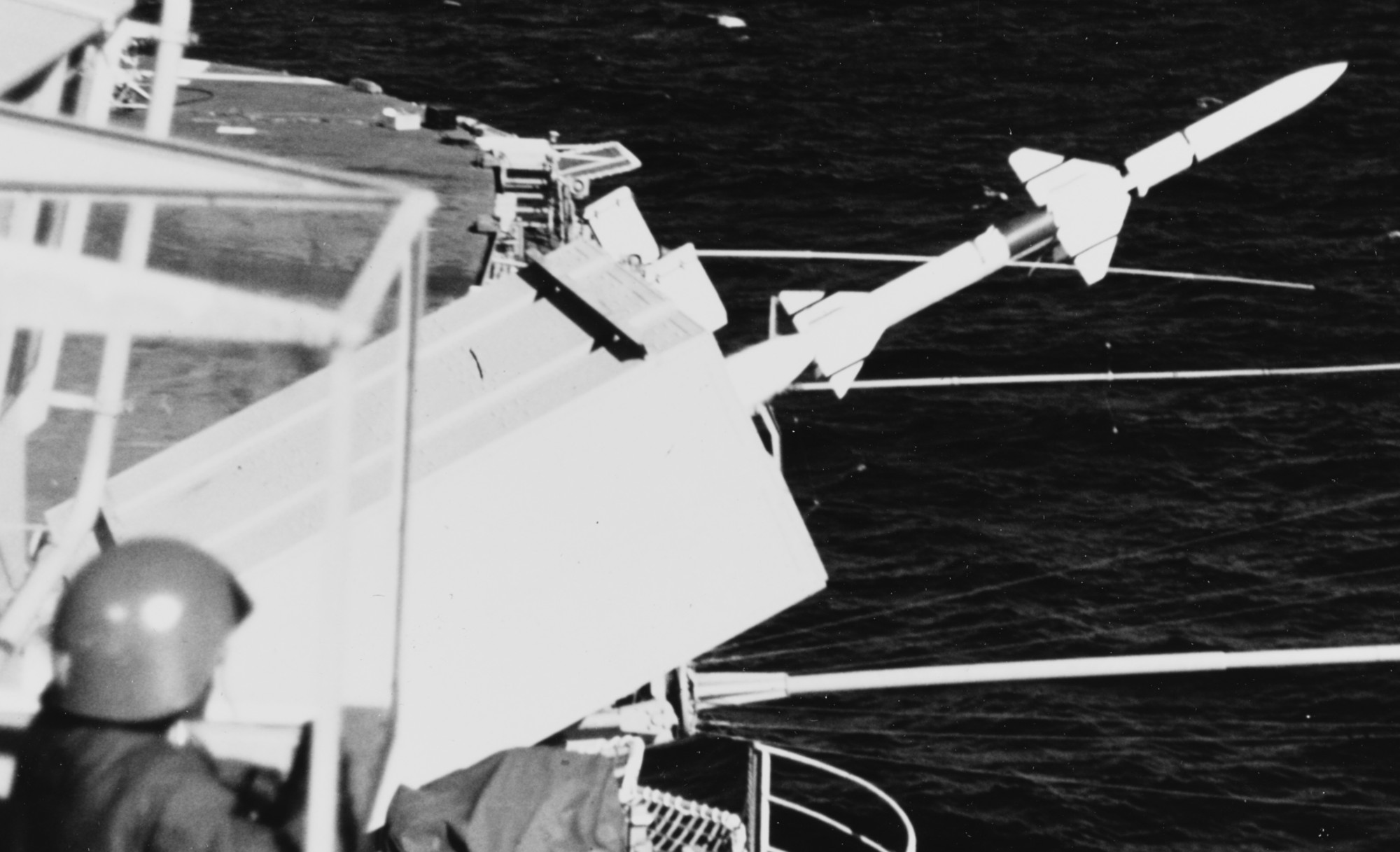 a RIM-7 Sea Sparrow SAM missile was fired from the Mk.25 Basic Point Defense Missile System (BPDMS) - 1974 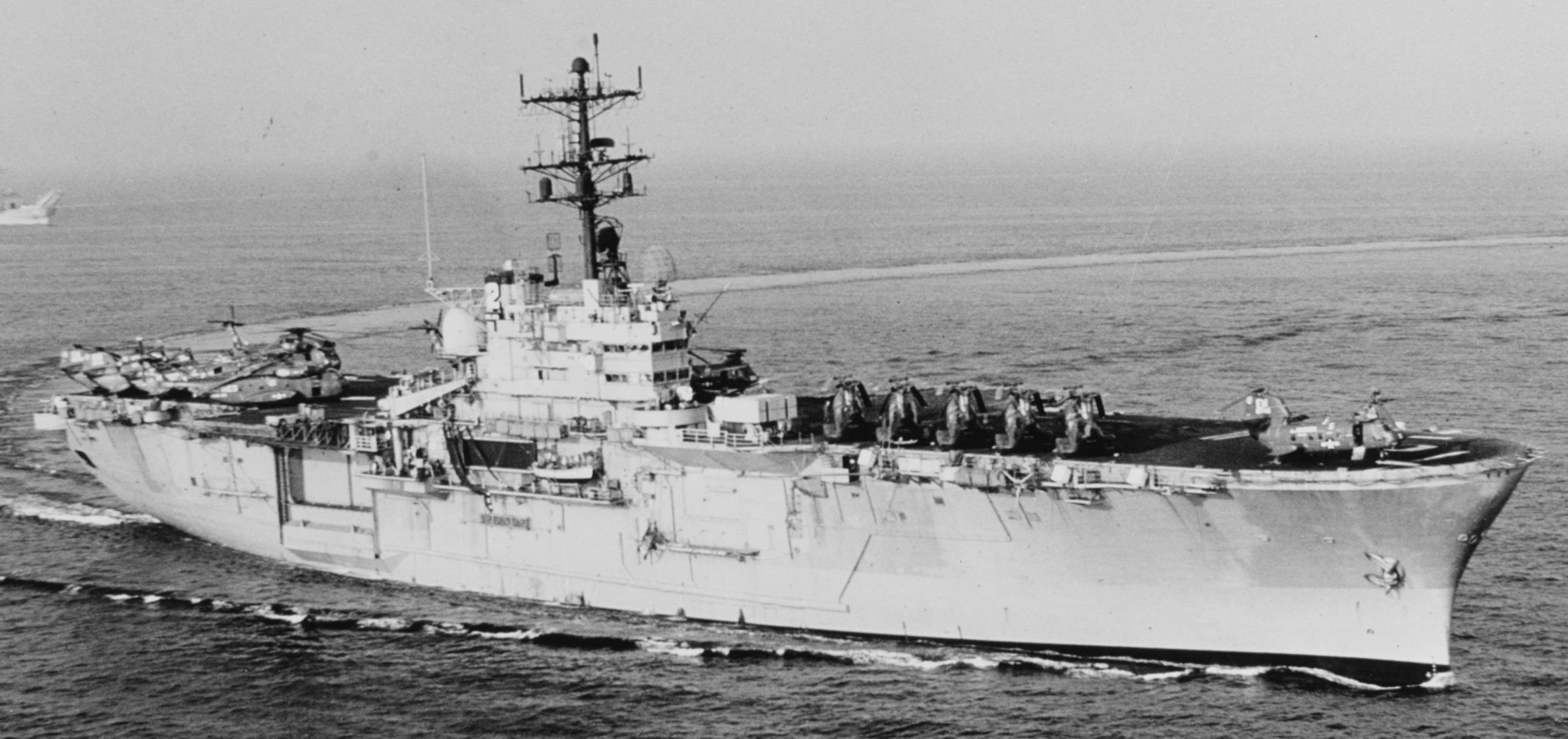 with HMM-261(C) embarked - undated 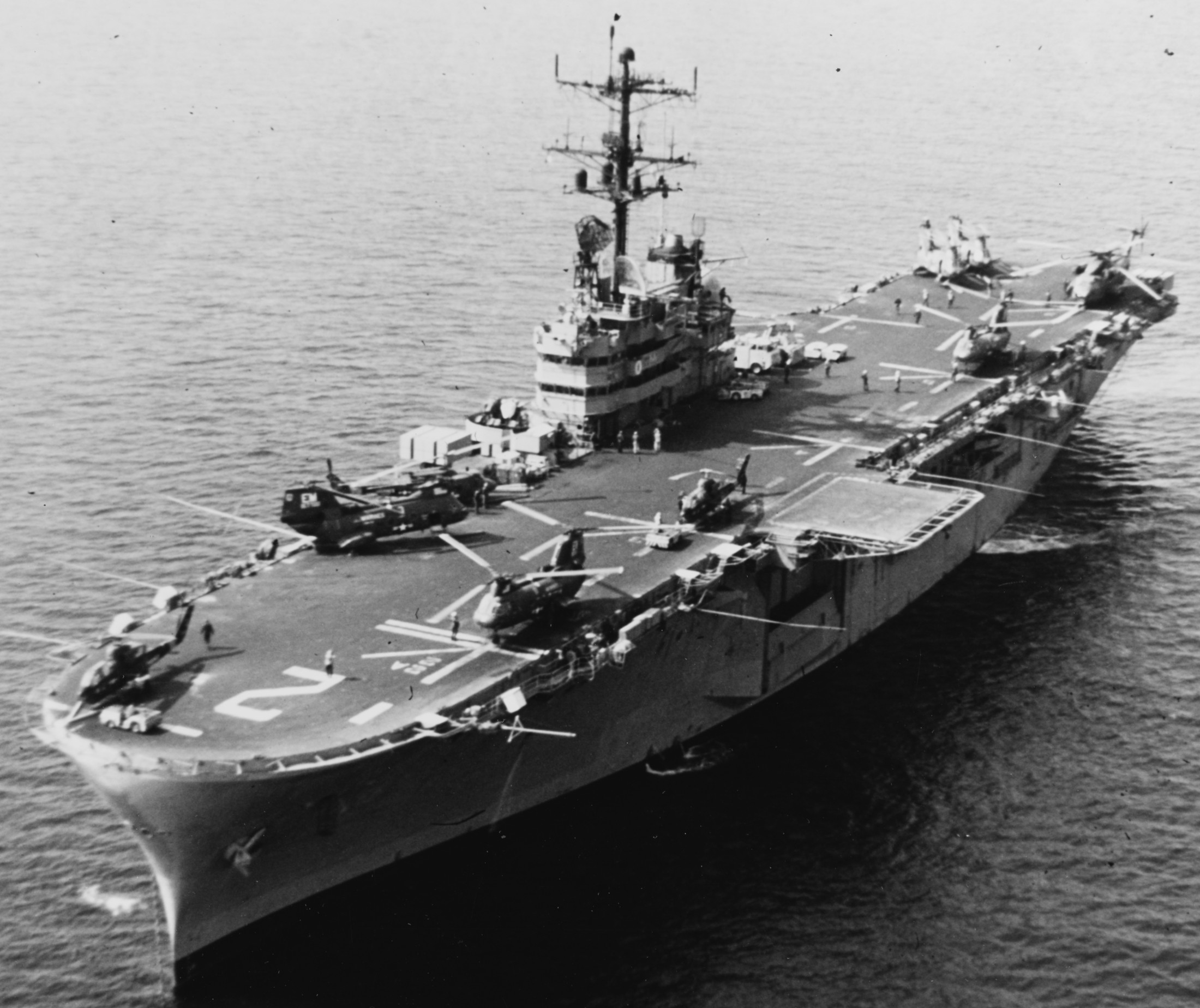 with HMM-261(C) embarked - Mediterranean Sea - 1974 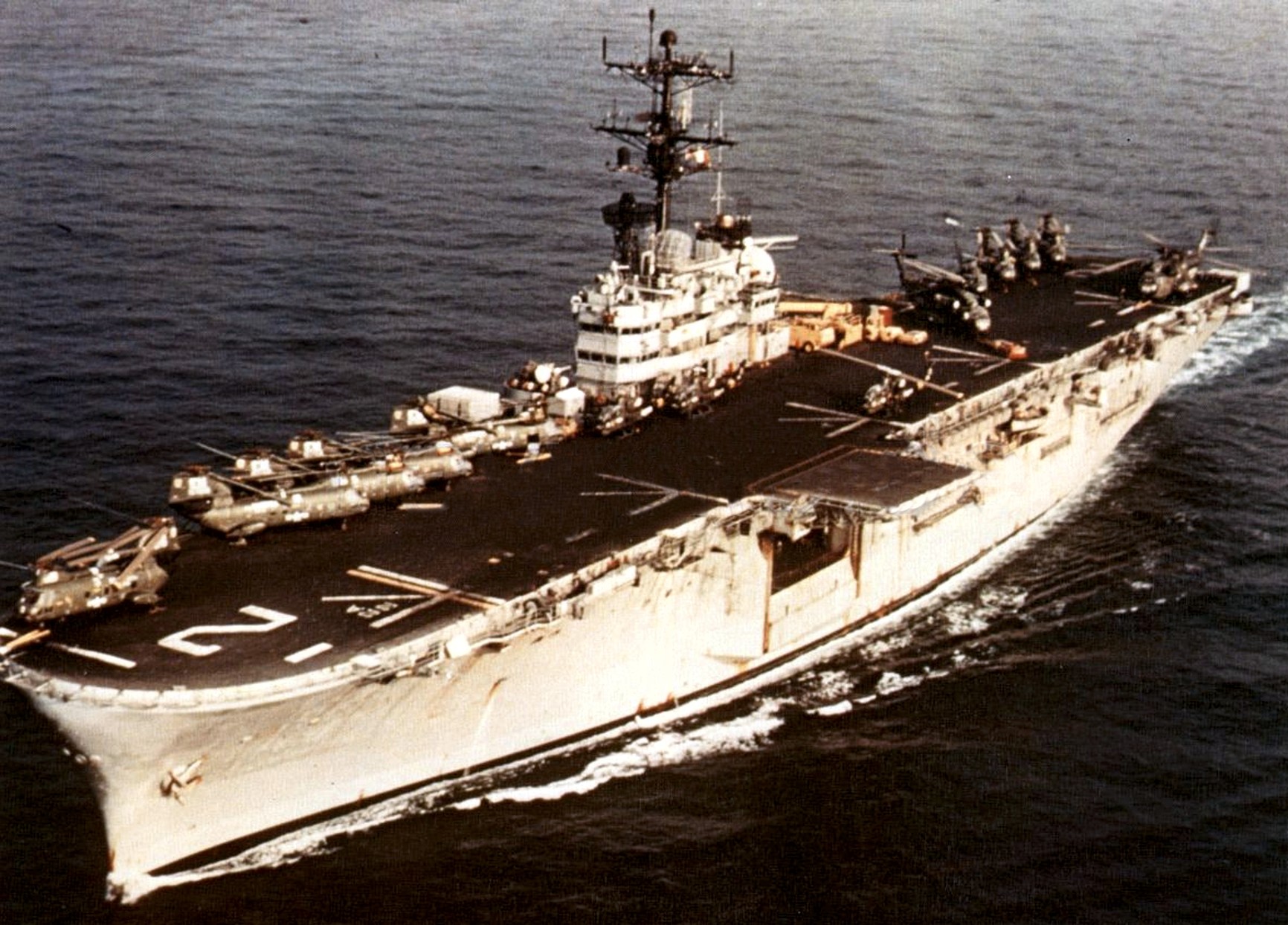 with HMM-261(C) embarked - Mediterranean Sea - 1974 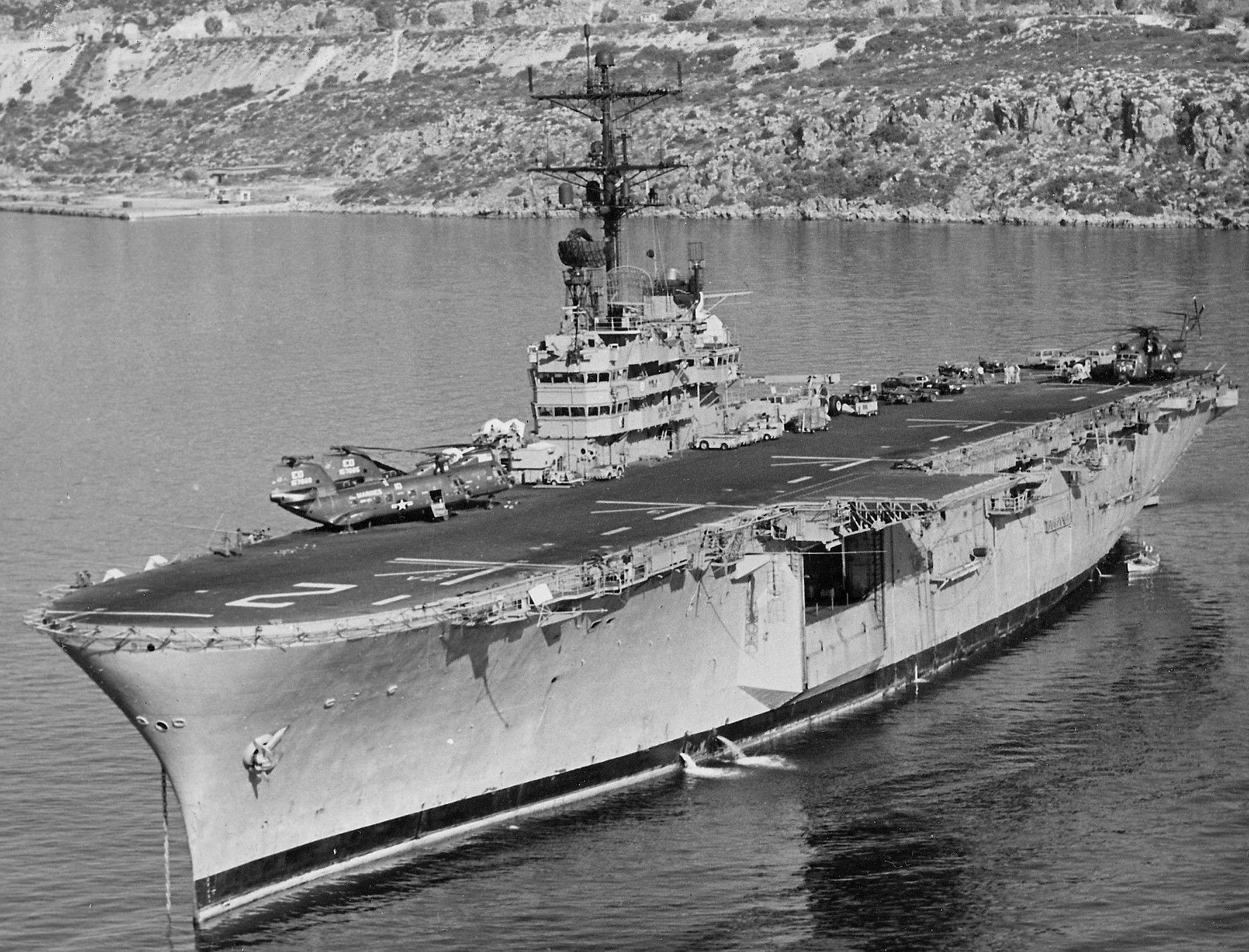 with HMM-263(C) embarked - 1970's 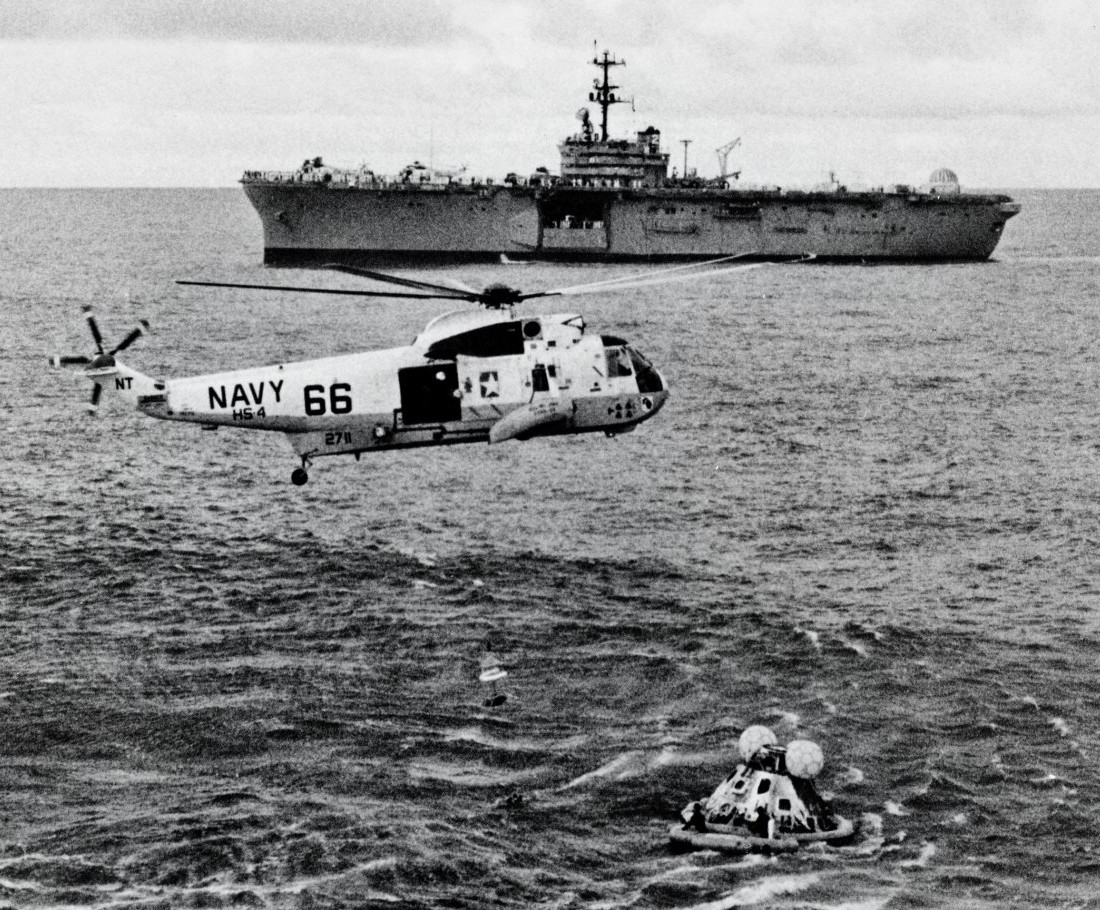 Apollo 13 recovery - April 17, 1970 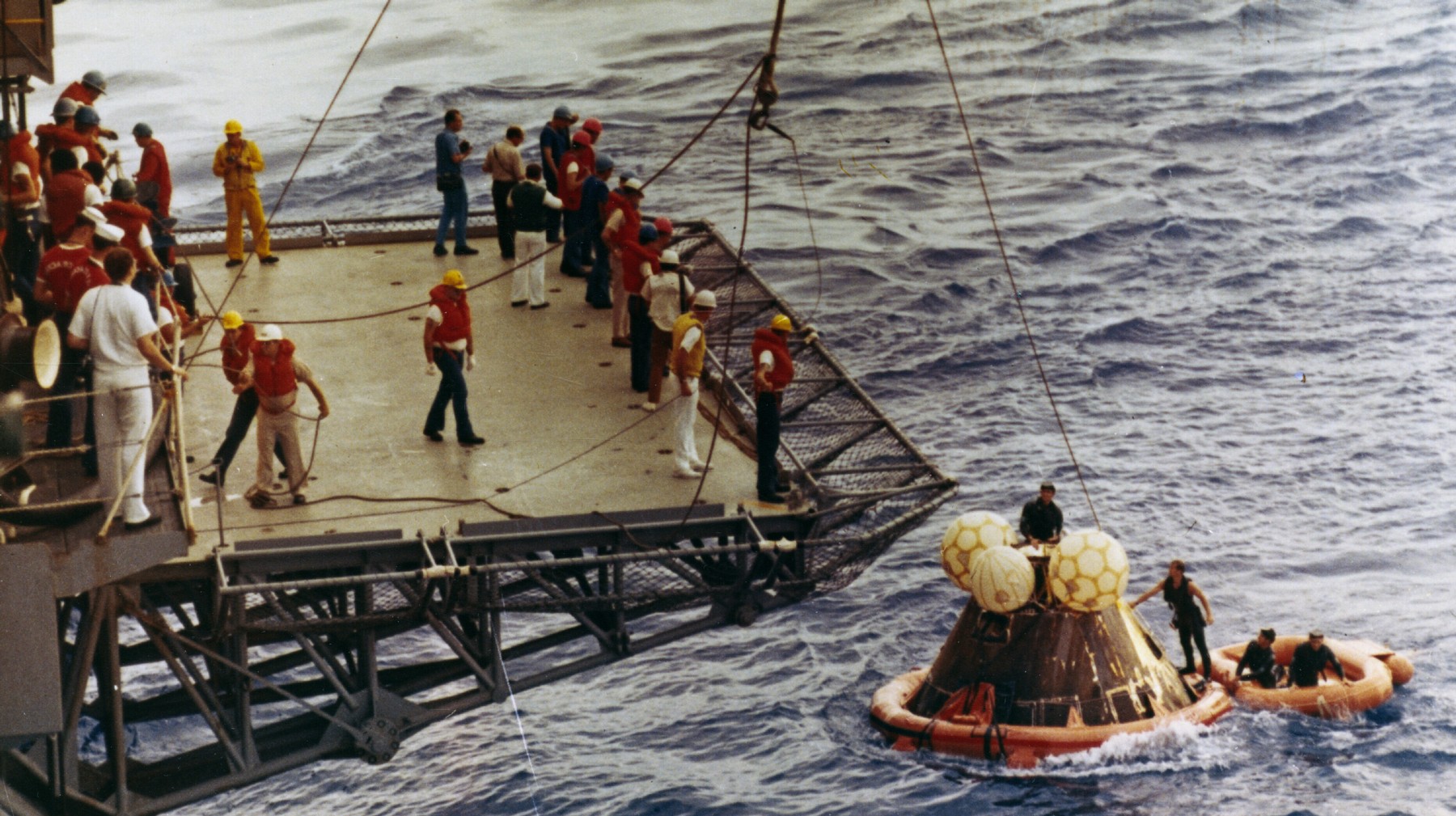 Apollo 13 recovery - April 17, 1970 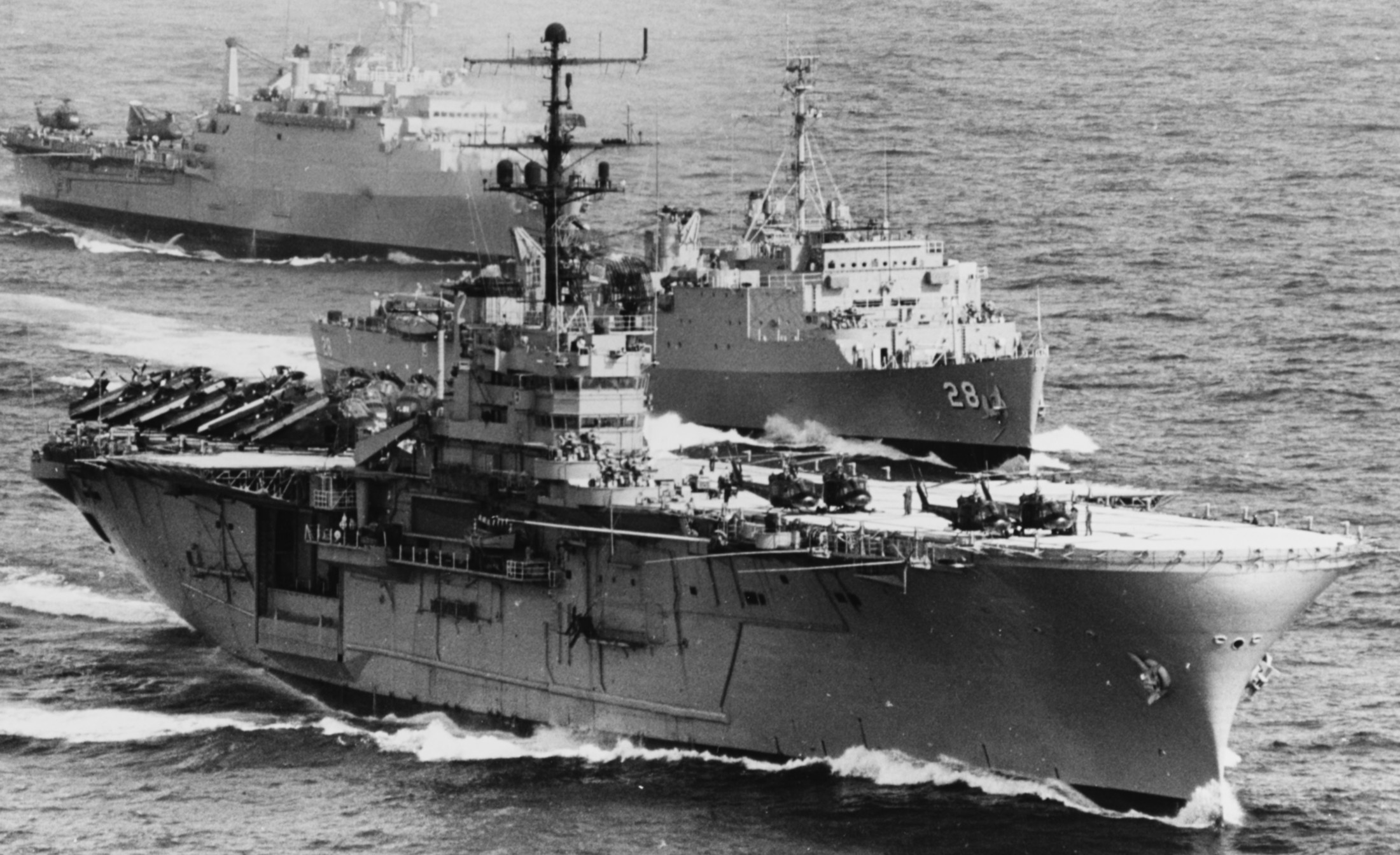 during Operation Deckhouse V - off Vietnam - January 1967 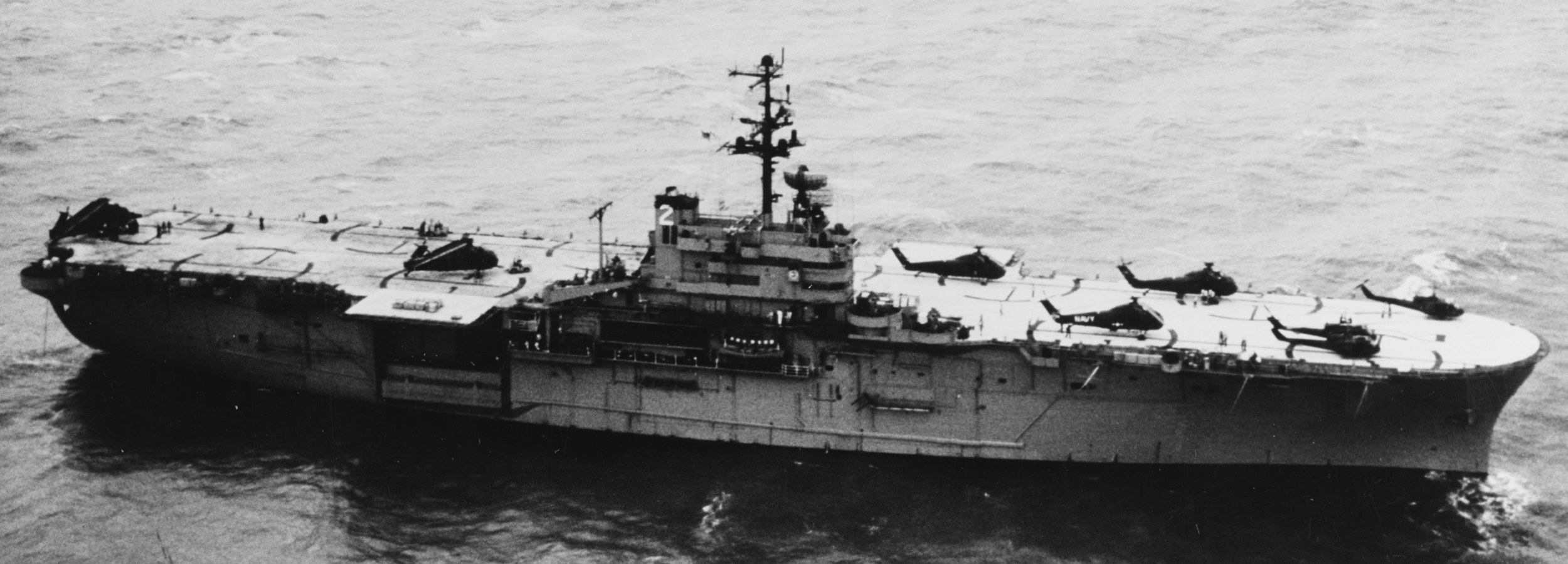 during Operation Deckhouse V - off Vietnam - January 1967 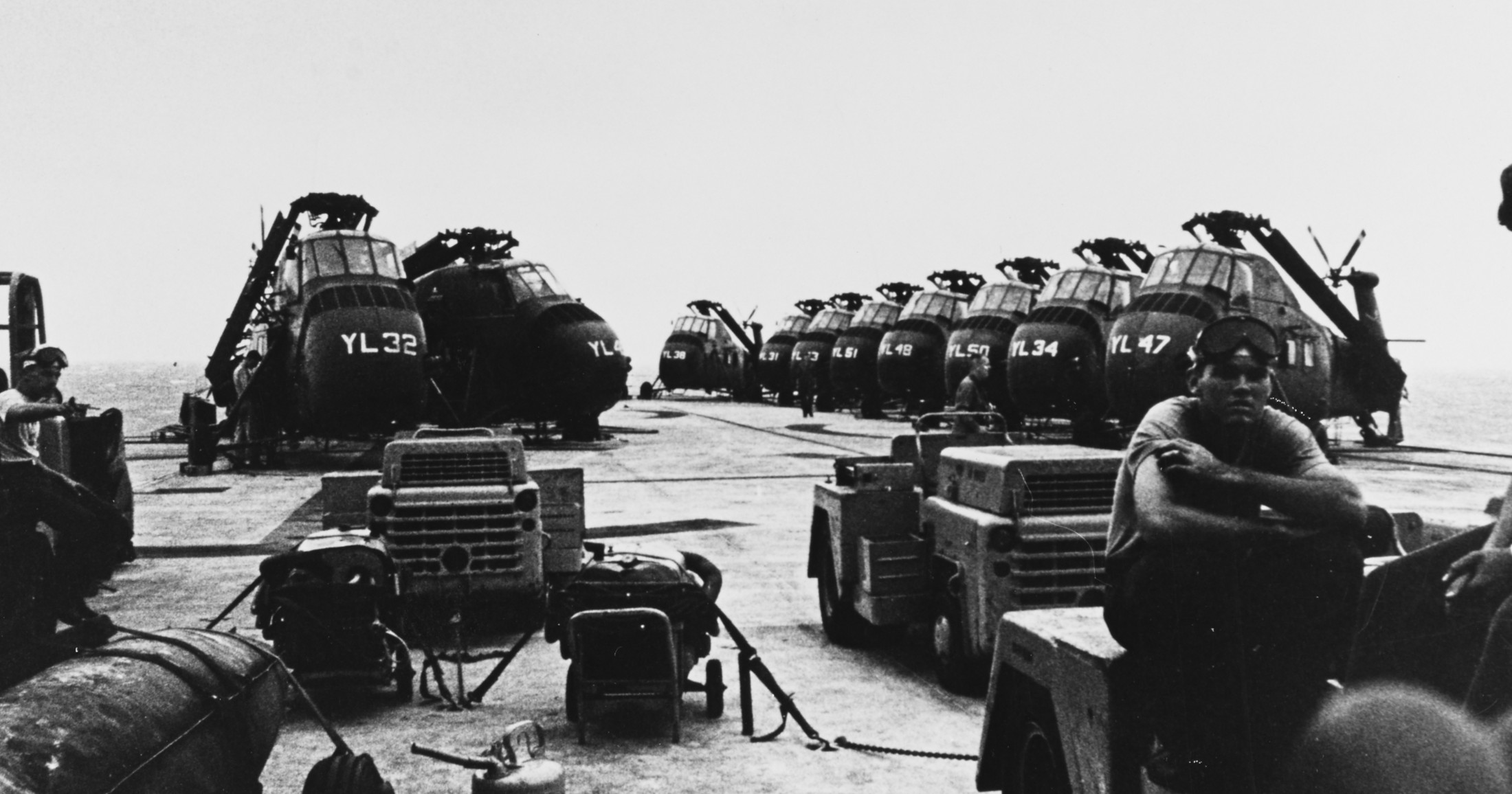 with HMM-362(C) embarked - during Operation Deckhouse V - off Vietnam - January 1967 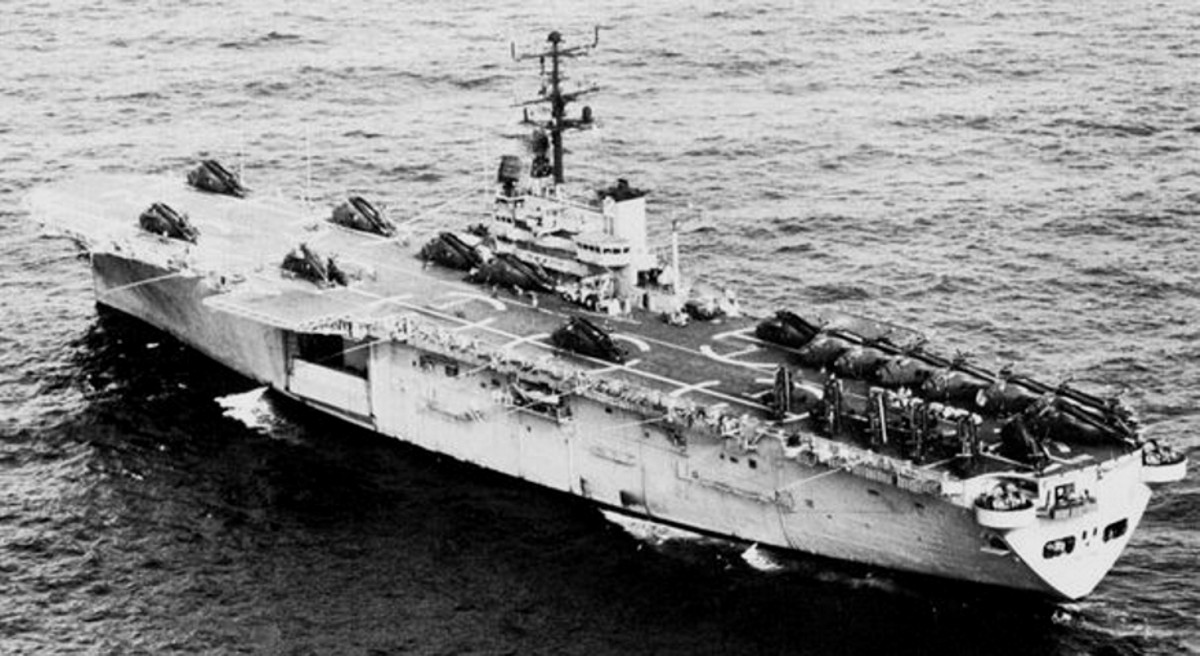 circa 1966  off Vietnam - 1965 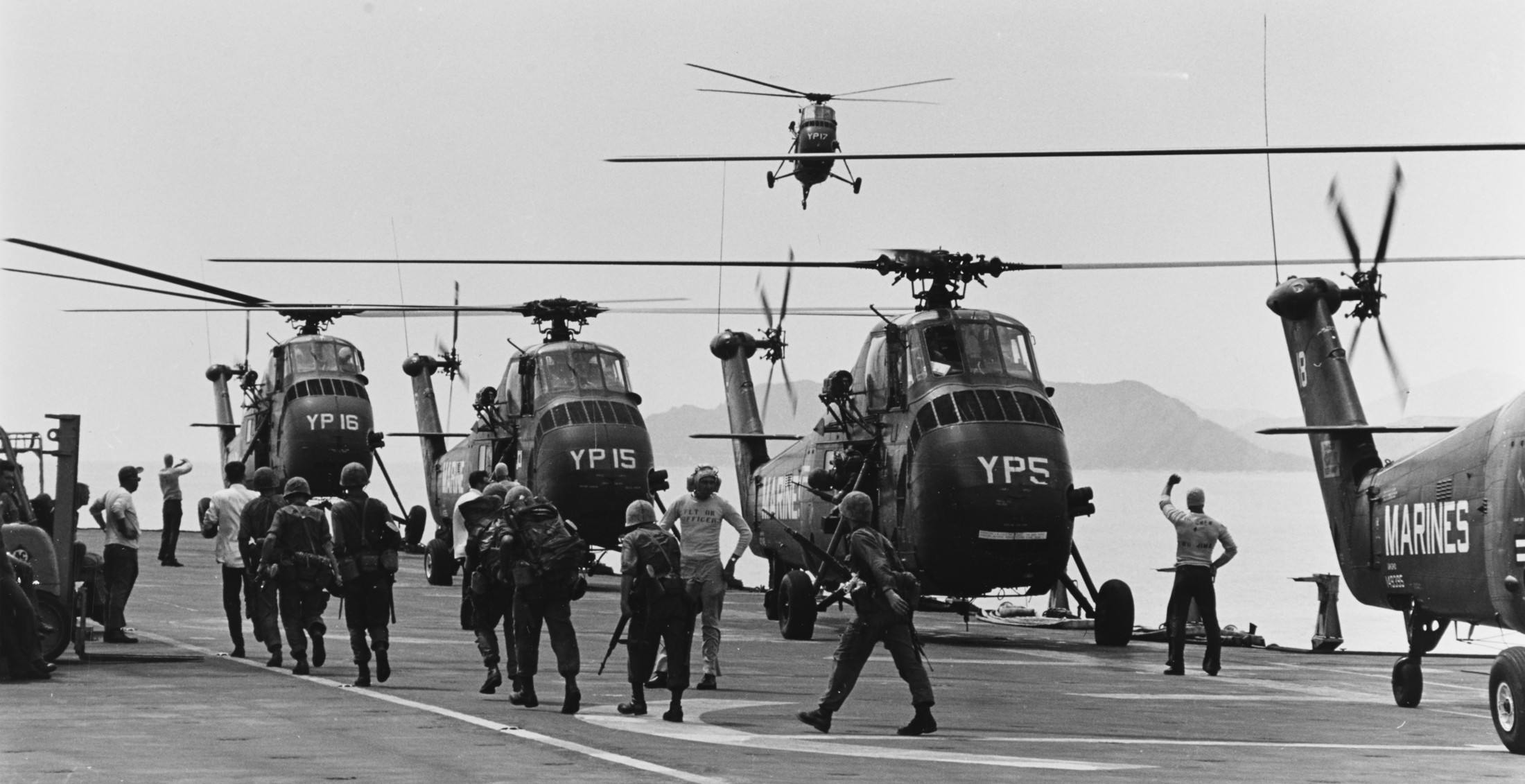 Sikorsky UH-34 helicopters of HMM-163 embarked - off Vietnam - 1965 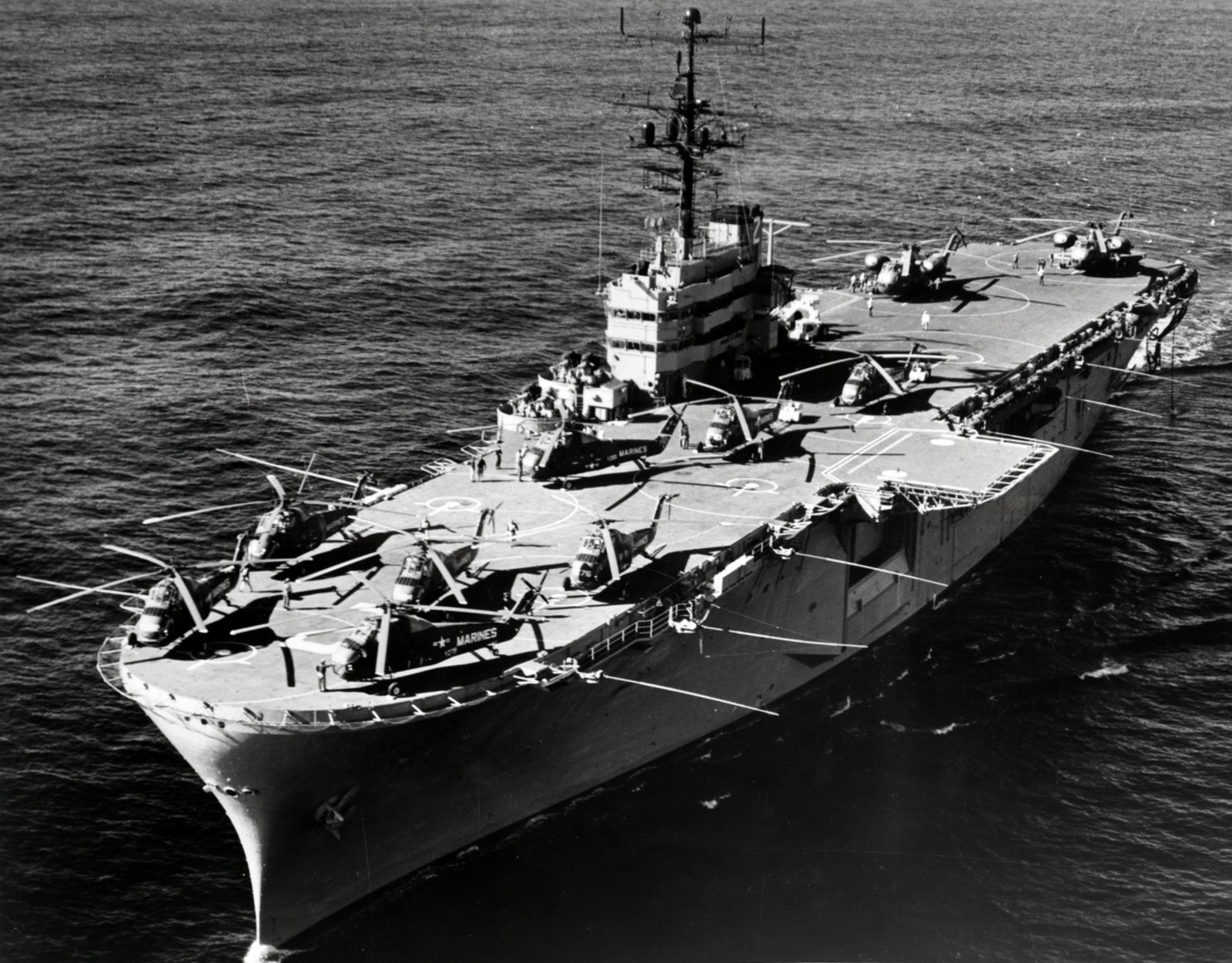 undated 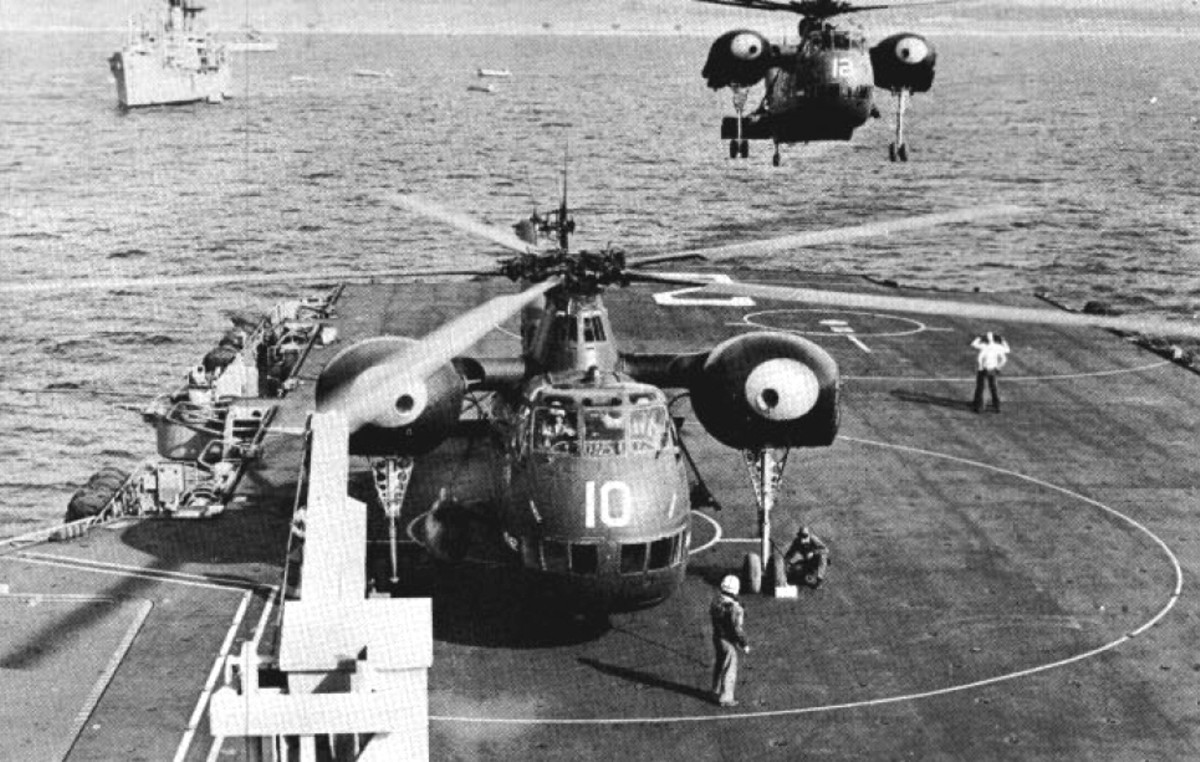 with Sikorsky CH-37C Mojave helicopters embarked - circa 1963 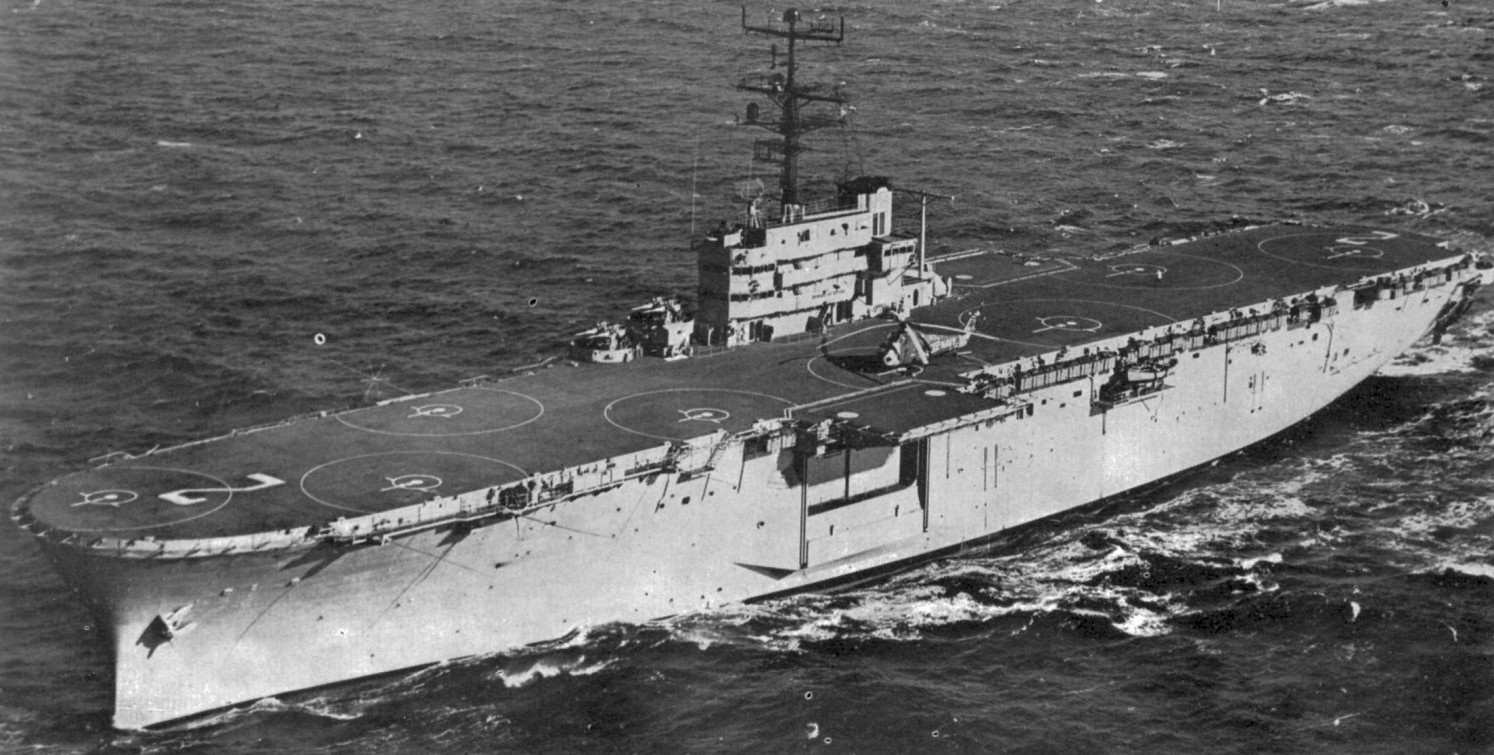 1963 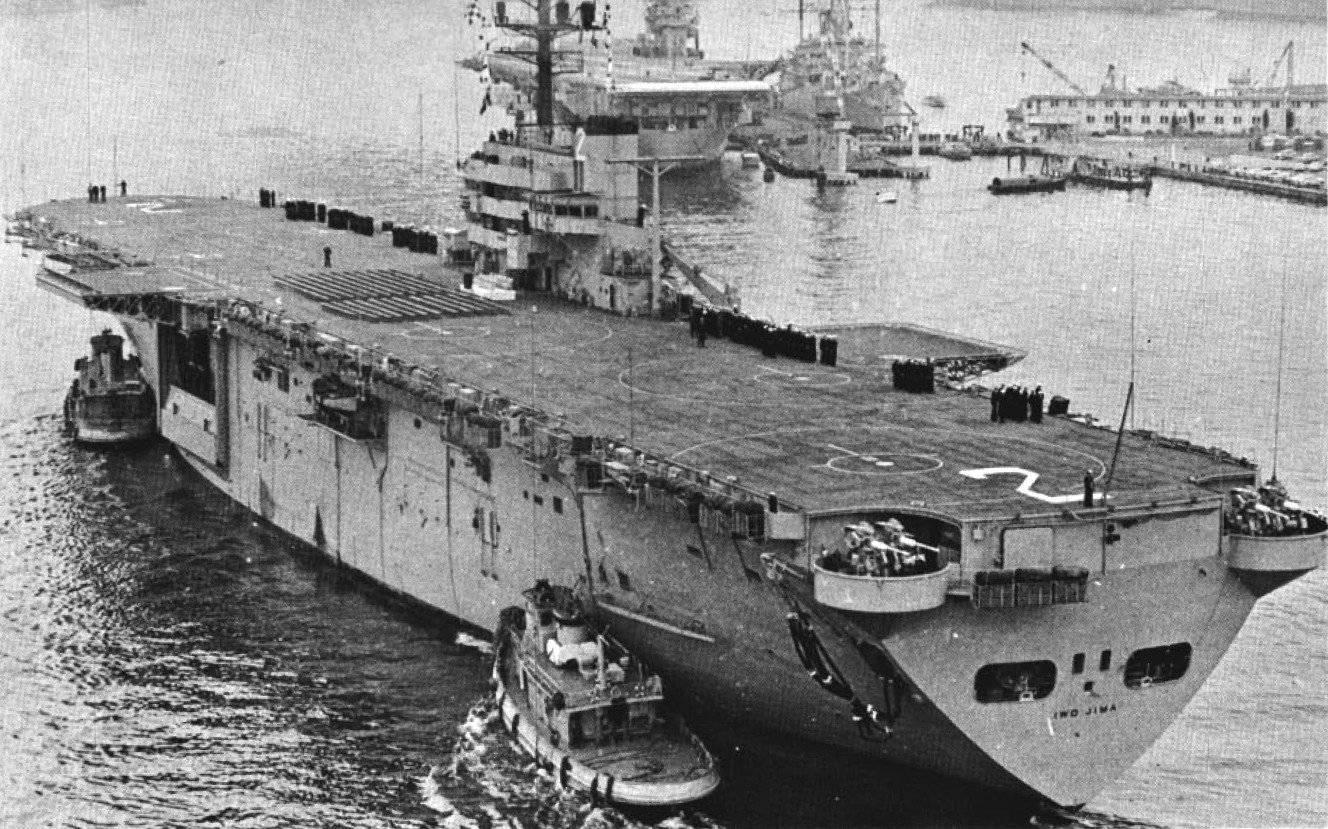 circa 1962 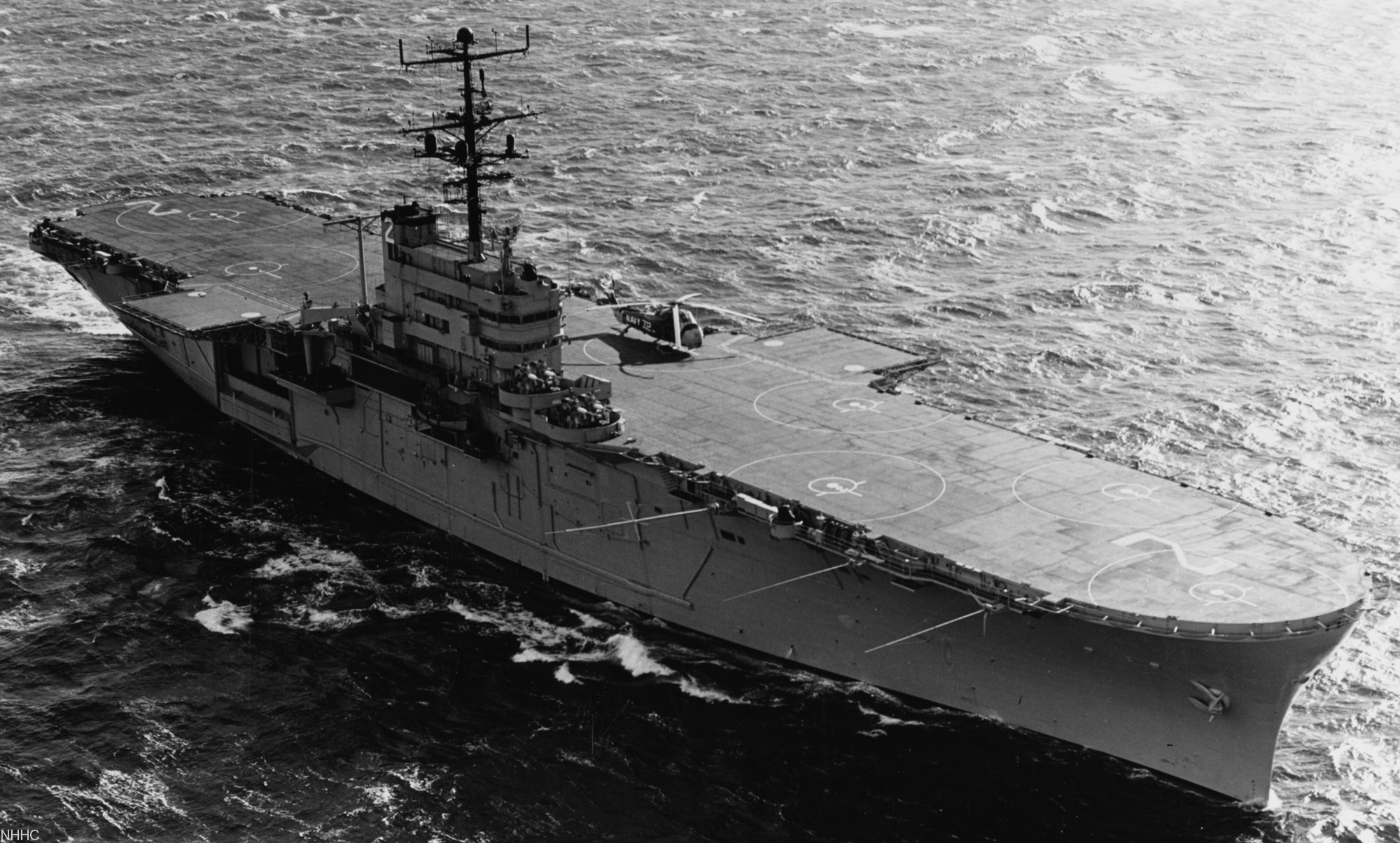 1961 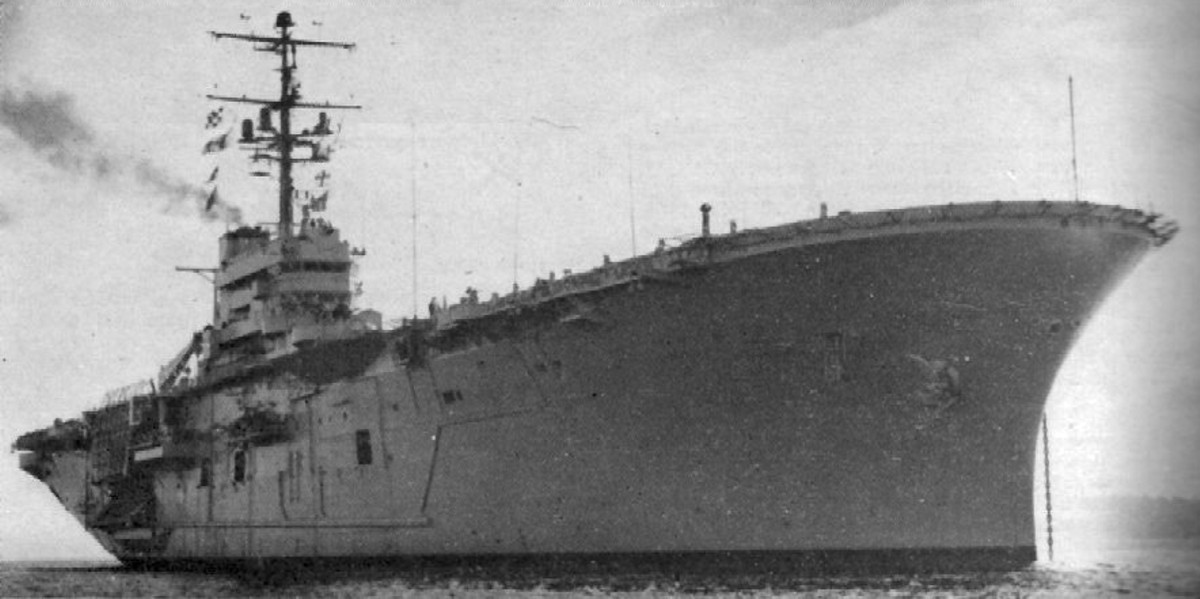 1961 |
||
|
USS Iwo Jima (LPH 2): Iwo Jima (LPH-2) was launched by Puget Sound Naval Shipyard, Bremerton, Wash., on 17 September 1960; sponsored by Mrs. Harry Schmidt; and commissioned on 26 August 1961, Capt. T. D. Harris in command. The first ship to be designed and built from the keel up as an amphibious assault ship, Iwo Jima carries helicopters and a detachment of embarked marines for use in the Navy's newest "vertical envelopment" concept of amphibious operations. Following shakedown training, she spent the rest of 1961 off the California coast in amphibious exercises. In April 1962, the ship joined Joint Task Force 8 in the Johnston Island-Hawaii area for an important series of nuclear tests. Iwo Jima evacuated several islands and took part in the test evaluation. She sailed for Pearl Harbor, Hi., on 26 July from the test area, and continued to San Diego, where she arrived on 10 August 1962. In September the ship took part in full-scale amphibious exercises in California, departing on 17 October from San Diego for her first deployment to the western Pacific. As a crisis flared on 19 October over the introduction of offensive missiles into Cuba, however, Iwo Jima returned to San Diego, embarked Marines from 22 to 27 October, and sailed quickly for the Caribbean. As part of America's powerful and mobile force afloat, she cruised in a "ready" status until December brought an easing of the Cuban situation. She arrived at San Diego on 13 December, having played a major role in preserving American and Latin American security. Iwo Jima operated out of her home port during the first half of 1963, carrying out amphibious exercises and training. She departed on 30 August on her long-delayed cruise to the western Pacific. Joining the Seventh Fleet, mobile bulwark of American security in the area, she ranged from Hawaii to the Philippines and Taiwan. On 31 October 1963, Iwo Jima departed Philippine waters for special operations along the coast of South Vietnam, standing by to protect American nationals during a period of increased strife. She returned to Subic Bay in the Philippines on 12 November. The following months she sailed with Special Landing Forces of marines for rigorous amphibious assault and landing raids practice off the coasts of Taiwan and Okinawa. After unloading ammunition at Sasebo, Japan, she stood out to sea on 13 April 1965 for return to San Diego, arriving on 28 April. Following amphibious training with Marines along the California seaboard, she overhauled in Long Beach Naval Shipyard, Calif. This work was completed by 7 December 1965 when Iwo Jima began amphibious refresher training ranging to the Hawaiian Islands. On 13 March 1965, she departed Pearl Harbor for San Diego, arriving six days later. Iwo Jima received tons of supplies and scores of Army helicopters, tanker trucks, and vehicles in her hangar and flight deck spaces. Nearly a thousand troops were embarked for her western transit that began on 12 April. She touched Pearl Harbor a few hours on 17 April to off-load 50 Marines and their equipment, then steamed off St. Jacques, South Vietnam, from 1 to 2 May, flying off 77 Army helicopters, loaded with troops and combat cargo. From there she proceeded to Subic Bay in the Philippines, where troops and equipment were received for amphibious landing at Chu Lai, Vietnam, on 11 May 1965. Iwo Jima remained off Chu Lai for a month, protecting Marines and Seabees establishing an air field on the sandy shore. Besides helicopter support ashore, including defense perimeter patrol, she was a support center for laundry, showers, fresh provisions, and store and mail service. She also supervised the continual off-load of ships over the beach for the entire month, then on 7 June 1965, landed squadron personnel and helicopters ashore at Hue-Phu Bai, some 30 miles north of Da Nang. After a few days rest in Subic Bay she was routed to Sasebo, thence to Buckner Bay, Okinawa, where she embarked Marines and equipment. On 26 June 1965 she completing loading and sailed for Quinohn, South Vietnam, in company with attack transport Talladega (APA-208) and dock landing ship Point Defiance (LSD-31). These ships comprised Task Group 76.5, that part of the Seventh Fleet that carried the Marine Special Landing Force. On 30 June she arrived at Quinohn, about 100 miles south of Chu Lai. The following day, marines landed ashore to take up defensive positions for the protection of Army engineers and communications units. Iwo Jima remained off Quinohn for defensive support until 20 July 1965, then steamed for Pratas Reef about 240 miles southwest of Taiwan. Arriving the morning of 22 July, her helicopters were immediately pressed into service to aid the salvage radar picket destroyer Frank Knox (DDR-742). The close approach of typhoon "Gilda" pounded the grounded destroyer so badly that it was impossible for small boats to get alongside her. Extra men were heli-lifted off the destroyer while surf rose 12 feet high to break completely over the stern of Frank Knox. Support given by Iwo Jima included such items as hot food, clothes, water, pumps, hose, gasoline, air compressors, welding machines, damage control equipment and technicians. Feed water was heli-lifted in special tanks constructed by destroyer tender Prairie (AD-15) who had faint hope of keeping the destroyer's boiler alive. Detached from this duty on 1 August 1965, Iwo Jima made a brief call at Hong Kong, then proceeded to the Philippines. On 17 August 1965, Iwo Jima steamed out of Subic Bay for Vung Tau, Republic of Vietnam, to join in Operation Starlight, a five-day search-and-destroy operation that eradicated some 600 Viet Cong. The successful Navy-Marine Corps amphibious operation backed by gunfire support from guided missile light cruiser Galveston (CLG-3) and two destroyers, came to a close late on 24 August. Iwo Jima's evecuation and surgical teams kept the American casualties down to a very low percentage. During transit back to Subic Bay she learned Frank Knox had been refloated, good news for Iwo Jima's crewmen who had put in so many hard and long hours at Pratas Reef. She landed her Marine Special Landing Force at Chu Lai on 1 and 2 September, embarked 800 marines of a rotation draft, and sailed for Buckner Bay. Iwo Jima landed the rotation troops at Okinawa, then came off Quinohn on 10 September 1965, to cover the landing of the Army's 1st Air Cavalry Division. She had supported three amphibious assault search-and-destroy raids along the coast by 1 October when she steamed to southern waters, remaining in stand-by status for possible evacuation of U.S. nationals in revolt-torn Indonesia. Eight days later she sailed for Danang for a helicopter squadron exchange, thence to Subic Bay where Valley Forge (LPH-8) relieved her. Following a visit to Yokosuka, she steamed on 1 November for return to San Diego, arriving on 17 November 1965. Several months later she again joined the Seventh Fleet Amphibious Ready Group, a fast moving assault force which had completed more than 20 search-and-destroy operations along the South Vietnamese coast between March 1965 and September 1966. One of these missions hit only three miles south of the demilitarized zone to search out and decimate a regiment of the North Vietnam Army's 342B Division which had infiltrated South Vietnam through the neutral zone. During the first three months of 1966, Iwo Jima remained at San Diego for upkeep and improvement changes. From April through June extensive refresher training occupied all hands as Iwo Jima, prepared for her forthcoming Western Pacific deployment. On 24 July, steaming with a task group, she passed the volcanic island whose costly conquest by stouthearted sailors and marines had inspired her name. On board was one of the marine groups that had landed on Iwo Jima over two decades earlier. After operations in the Vietnam area, she sailed for Japan. The day before New Year's Eve once again found Iwo Jima, on the line and underway for special operations in the Mekong Delta region of South Vietnam in a Navy-ready group with a two pronged punch. Early in January 1967 the commanding officer, Capt. Nils W. Boe, was relieved by Capt. F. X. Timmes. Upon his departure Boe said of his crew in a family-gram to mothers and wives, "I want to thank each of you for letting me borrow these magnificent young men for a little while. They have made me feel ten feet tall." On 1 July 1967, Iwo Jima was reassigned to Amphibious Squadron 3 from Amphibious Squadron 1, with which she continued to sail with the Pacific Fleet. source: US NHHC - - - - - another history: USS Iwo Jima (LPH-2) was the lead ship of her class and type - the first amphibious assault ship to be designed and built from the keel up as a dedicated helicopter carrier. She carried helicopters and typically embarked USMC elements of a Marine Amphibious Unit (MAU)/later Marine Expeditionary Unit (MEU) principally the Aviation Combat Element (ACE) to conduct heliborne operations in support of an amphibious operation. There was no well deck to support landing craft movement of personnel or equipment to/from shore. Iwo Jima was the second of three ships of the United States Navy to be named for the Battle of Iwo Jima, although the first to be completed and see service (the first was cancelled during construction). First cruises and Cuban Missile Crisis: Iwo Jima was laid down on 2 April 1959 by Puget Sound Naval Shipyard, Bremerton, Washington; launched on 17 September 1960, sponsored by Mrs. Harry Schmidt; and commissioned on 26 August 1961, Captain T. D. Harris in command. Following shakedown training, she spent the rest of 1961 off the California coast in amphibious exercises. In April 1962, the ship joined Joint Task Force 8 in the Johnston Island-Hawaii area for an important series of nuclear tests. Iwo Jima evacuated several islands and took part in the test evaluation. On 26 July, she sailed from the test area to Pearl Harbor, and continued on to San Diego, where she arrived on 10 August 1962. In September, the ship took part in full-scale amphibious exercises in California, departing from San Diego on 17 October for her first deployment to the western Pacific. However, as the crisis flared up on 19 October over the introduction of offensive missiles into Cuba, Iwo Jima returned to San Diego, embarked Marines 22 October to 27 October, and departed quickly for the Caribbean. As part of America's powerful and mobile force afloat, she cruised in a "ready" status until December brought an easing of the Cuban situation. She arrived in San Diego on 13 December. WestPac cruises: Iwo Jima operated out of her home port during the first half of 1963, carrying out amphibious exercises and training. She departed on 30 August on her long-delayed Western Pacific cruise. Joining the 7th Fleet, she ranged from Hawaii to the Philippines and Taiwan. On 31 October 1963, Iwo Jima departed Philippine waters for special operations along the coast of South Vietnam, standing by to protect American nationals during a period of increased strife. She returned to Subic Bay on 12 November. The following months, she sailed with Special Landing Forces of Marines for rigorous amphibious assault and landing raids practice off the coasts of Taiwan and Okinawa. After unloading ammunition at Sasebo, Japan, she departed on 13 April 1964 to return to San Diego, arriving on 28 April. Following amphibious training with Marines along the California seaboard, she overhauled in the Long Beach Naval Shipyard. This work was completed by 7 December 1964, when Iwo Jima began amphibious refresher training ranging to the Hawaiian Islands. On 13 March 1965, she departed Pearl Harbor for San Diego, arriving six days later. Vietnam War: Iwo Jima received tons of supplies and scores of Army helicopters, tanker trucks, and vehicles in her hangar and flight deck spaces. Nearly 1,000 troops were embarked for her western transit, which began on 12 April 1965. She stopped at Pearl Harbor for a few hours on the 17th to off-load 50 Marines and their equipment. On 1/2 May, she steamed off Vũng Tàu, South Vietnam, flying off 77 Army helicopters loaded with troops and combat cargo. From there, she proceeded to Subic Bay in the Philippines, where troops and equipment were received for amphibious landing and by helicopter at Chu Lai, Vietnam, on 12 May 1965. Iwo Jima remained off Chu Lai for a month, protecting Marines and Seabees establishing an air field on the sandy shore. Besides helicopter support ashore, including defense perimeter patrol, she was a support center for laundry, showers, fresh provisions, store, and mail service. She also supervised the continual off-load of ships over the beach for the entire month, then on 7 June 1965, landed squadron personnel and helicopters ashore at Phu Bai Combat Base, some 30 miles north of Da Nang. After a few days rest in Subic Bay, she was routed to Sasebo, thence to Buckner Bay, Okinawa, where she embarked Marines and equipment. This was completed on 26 June 1965, when she sailed for Qui Nhon, Republic of Vietnam, in company with USS Talladega and USS Point Defiance. These ships were designated Task Group 76.5, that part of the 7th Fleet that carries the Marine Special Landing Force. On the 30th, she arrived at Qui Nhon, about 100 miles south of Chu Lai. The following day, Marines landed ashore to take up defensive positions for the protection of Army engineers and communications units. Iwo Jima remained off Qui Nhon for defensive support until 20 July 1965, then steamed for Pratas Reef about 240 miles southwest of Taiwan. Arriving the morning of the 22nd, her helicopters were immediately pressed into service to aid the salvage of destroyer USS Frank Knox. The close approach of typhoon "Gilda" pounded the grounded destroyer so badly that it was impossible for small boats to get alongside her. Extra men were heli-lifted off the destroyer while surf rose 12 feet high to break completely over the stern of Frank Knox. Support given by Iwo Jima included such items as hot food, clothes, water, pumps, hose, gasoline, air compressors, welding machines, damage control equipment, and technicians. Feed water was heli-lifted in special tanks constructed by the destroyer tender USS Prairie, which had faint hope of keeping the destroyer's boiler alive. Detached from this duty on 1 August 1965, Iwo Jima made a brief call at Hong Kong, then proceeded to the Philippines. On 17 August 1965, Iwo Jima steamed out of Subic Bay for Vung Tau, Republic of Vietnam, to join in Operation Starlite, a five-day search-and-destroy operation that killed some 600 Viet Cong. The successful Navy-Marine Corps amphibious operation, backed by gunfire support from the cruiser USS Galveston and two destroyers, came to a close late on 24 August. Iwo Jima's evacuation and surgical teams kept the American casualties down to a very low percentage. During transit back to Subic Bay, she learned the Frank Knox had been refloated, good news for the crew who had put in so many hard and long hours at Pratas Reef. She landed her Marine Special Landing Force at Chu Lai on 1/2 September, embarked 800 Marines of a rotation draft, and sailed for Buckner Bay. Iwo Jima landed the rotation troops at Okinawa, then came off Qui Nhon, 10 September 1965, to cover the landing of the Army's 1st Air Cavalry Division. She had supported three amphibious assault search-and-destroy raids along the coast by 1 October, when she steamed to southern waters, remaining in stand-by status for possible evacuation of U.S. nationals in revolt-torn Indonesia. Eight days later, she sailed for Danang for a helicopter squadron exchange, thence to Subic Bay where she was relieved by USS Valley Forge. Following a visit to Yokosuka, she departed 1 November for return to San Diego, arriving 17 November 1965. Several months later, she again joined the 7th Fleet Amphibious Ready Group, a fast-moving assault force that had completed more than 20 search-and-destroy operations along the South Vietnamese coast between March 1965 and September 1966. One of these missions, Operation Deckhouse IV hit only 3 miles south of the Vietnamese Demilitarized Zone to search out and decimate a regiment of the People's Army of Vietnam 342B Division, which had infiltrated into South Vietnam. During the first three months of 1966, Iwo Jima was at San Diego for upkeep and improvement changes. From April through June, extensive refresher training occupied all hands as Iwo Jima prepared for her forthcoming Western Pacific deployment. On 24 July, steaming with a task group, she passed the island of Iwo Jima, on board was one of the Marine groups that had landed on Iwo Jima over two decades earlier. After operations in the Vietnam area, she sailed for Japan. Iwo Jima was on the line and underway for special operations in the Mekong Delta region of South Vietnam by 30 December once again, in a Navy-ready group with a two-pronged punch. Early in January 1967, the commanding officer, Captain Nils W. Boe, was relieved by Captain F. X. Timmes. On his departure, Captain Boe said of his crew in a family-gram to mothers and wives, "I want to thank each of you for letting me borrow these magnificent young men for a little while. They have made me feel ten feet tall." On 1 July 1967, Iwo Jima was reassigned to Amphibious Squadron 3 from Amphibious Squadron 1, with which she continued to sail with the Pacific Fleet. Pacific recovery forces (Task Force 130): On 17 April 1970, Iwo Jima was the flagship of Task Force 130 that waited for the Apollo 13 spaceship's astronauts after their memorable "successful failure" mission and splashdown near American Samoa. In the 1995 film Apollo 13, Iwo Jima was played by her sister ship, New Orleans (LPH-11). Iwo Jima's skipper, Captain Leland Kirkemo, is portrayed by the film's central protagonist, Captain Jim Lovell. Multinational Peacekeeping Force: From 10 May 1983 to 8 December 1983, Iwo Jima operated off the Lebanese coast as part of Mediterranean Amphibious Ready Group 2-83 (Marg 2-83). The ships hosted the 24th Marine Amphibious Unit (24th MAU), the main body of which disembarked on 29 May to take position in and around Beirut International Airport, relieving the 22nd MAU as the principal US component of the Multinational Force in Lebanon. On 23 October 1983, an attack on the Marine's barracks caused the death of 241 US servicemen and wounded a further 60. The ship's commanding officer at the time was Arden W. Jones, CAPT USN. During the deployment, it served as the flagship for Amphibious Squadron Eight (PHIBRON-8), with Morgan France, CAPT USN serving as squadron commander (AKA Commodore"). Friendly fire incident: On 11 October 1989, El Paso (LKA-117) was conducting a live fire exercise off the east coast of the United States using the Phalanx against a target drone. The drone was successfully engaged, but as the drone fell to the sea, the CIWS re-engaged it as a continued threat to El Paso. Rounds from the Phalanx struck the bridge of Iwo Jima, killing one officer and injuring a petty officer. Catastrophic boiler accident: In October 1990, Iwo Jima was in the Persian Gulf, as part of the buildup for Operation Desert Shield. After two months of operation there she developed a leak in a steam valve which supplied steam to a stand-by electrical generator. She docked in Manama, Bahrain, where the valve was repaired by a local contractor under US government inspection. Repairs were completed towards the end of October. On 30 October, as she raised steam to get underway and rejoin the fleet, the valve began to leak once more. The bonnet blew off the valve, flooding the boiler room with steam from two boilers. Ten of the eleven crewmen in the room were killed during or immediately after the incident, with the last surviving until 23:30 that evening. The cause of the accident was determined to be the use of fasteners of the wrong material (namely black oxide coated brass) on the valve, combined with a lack of proper inspection. Decommissioning: Iwo Jima was decommissioned on 14 July 1993, and struck from the Naval Vessel Register on 24 September. She was sold for scrap on 18 December 1995. The ship's island was at the Museum Of The American GI in College Station, Texas for several years but due to no funding for maintenance it was scrapped. source: wikipedia |
||
|
The Battle of Iwo Jima: USS IWO JIMA was is named for the epic battle of February 1945, in which three divisions of the United States Marine Corps took control of the tiny island of Iwo Jima from 22,000 determined Japanese defenders. The United States had recovered from the disastrous attack on Pearl Harbor, to the point where routine air attacks on Japanese cities could be made by heavy bombers launched from the Marianas. The successful outcome of the war seemed inevitable, but victory over the Japanese would come only at a high price. The Japanese considered Iwo Jima a part of mainland Japan, and an invader had not set foot on Japanese soil for 4,000 years. Iwo Jima was a thorn in the side of the U.S. heavy bomber crews. Air attacks on the Marianas bomber bases, and bombers enroute to and from Japan,were launched from Iwo Jima. An assault on the island was necessary to eliminate these air attacks and to provide a haven for damaged American aircraft returning from Japan. Amphibious forces of the U.S. Pacific Fleet attacked the fortress of Iwo Jima on February 19, 1945, with a formidable force, totaling 495 ships, including 17 aircraft carriers, 1170 planes, and 110,308 troops. Before the amphibious assault, elements of the Air Force and Army Air Corps pounded the island in the longest sustained aerial offensive of the war. Incredibly, this ferocious bombardment had little effect. Hardly any of the Japanese underground fortresses were touched. The Japanese defenders devised a unique and deadly strategy to defend Iwo Jima from an American assault. Instead of building a barrier to stop the Americans at the beach, they fortified the interior of the island, creating a defense that could not be breached in a day. On Feb. 19, 1945, the first wave of Marines were launched after an hour-long bombardment by the Navy’s “big guns.” The Americans planned to capture, isolate and fortify Mt. Suribachi. The success of the entire assault depended upon the early capture of the mountain. After an hour of calm, the Japanese defenders, hiding in their network of caves and underground bunkers, unleashed a hail of gunfire. Mortars, machine guns and heavy artillery rained down from scores of machine gun nests atop Suribachi. After the first day of fighting, 566 American men were killed and 1,755 more were wounded. For the next several days, some of the bloodiest battles of the Pacific were fought on the isle of Iwo Jima. It was a battle of attrition on terrain that had no front lines; where the attackers were exposed and the defenders fortified. The battle for Iwo was fought desperately until March 26th, when the island was finally secured by U.S. forces. In the struggle, nearly 7,000 Americans and more than 20,000 Japanese were killed. It was one of the most savage and costly battles in the history of the Marine Corps. As Fleet Admiral Chester W. Nimitz observed, “Among the Americans who served on Iwo Jima, uncommon valor was a common virtue.” - - - Iwo Jima ... known in Japan as Iō Tō, is one of the Japanese Volcano Islands and lies south of the Bonin Islands. Together with other islands, they form the Ogasawara Archipelago. The highest point of Iwo Jima is Mount Suribachi at 169 m (554 ft) high. Although 1,200 kilometres (750 mi; 650 nmi) south of the metropolis of Tokyo on the mainland, this island of 21 km2 (8 square miles) is administered as part of the Ogasawara Subprefecture of Tokyo. Since July 1944, when all the civilians were forcibly evacuated, the island has had a military-only population. The island was the location of the Battle of Iwo Jima between February 1945 and March 1945. This engagement saw some of the fiercest fighting of the Pacific War, with each side suffering over 20,000 casualties in the battle. The island became globally recognized when Joe Rosenthal, of the Associated Press, published his photograph Raising the Flag on Iwo Jima, taken on Mount Suribachi. The US military occupied Iwo Jima until 1968, when it was returned to Japan. |
||
| patches + more | ||
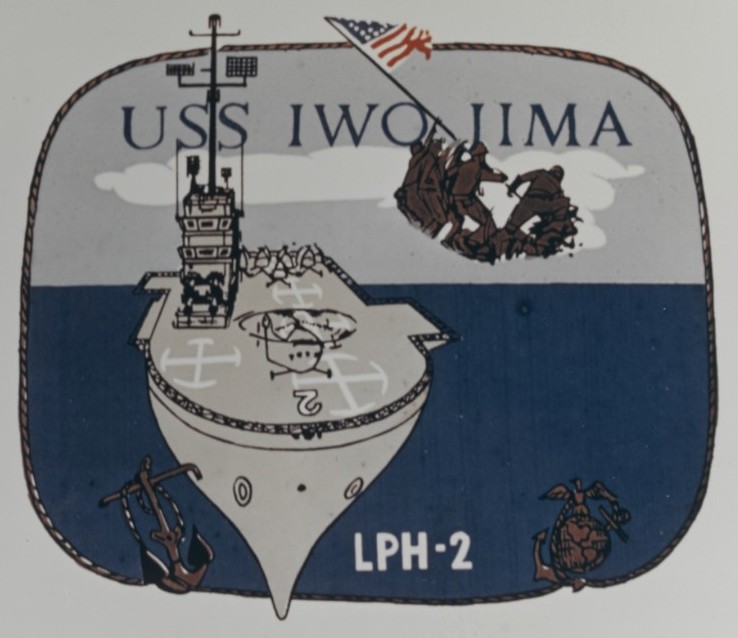 |
||
| | seaforces.org | USN ships start page | |
